September 8, 2019
Martha O'Kennon


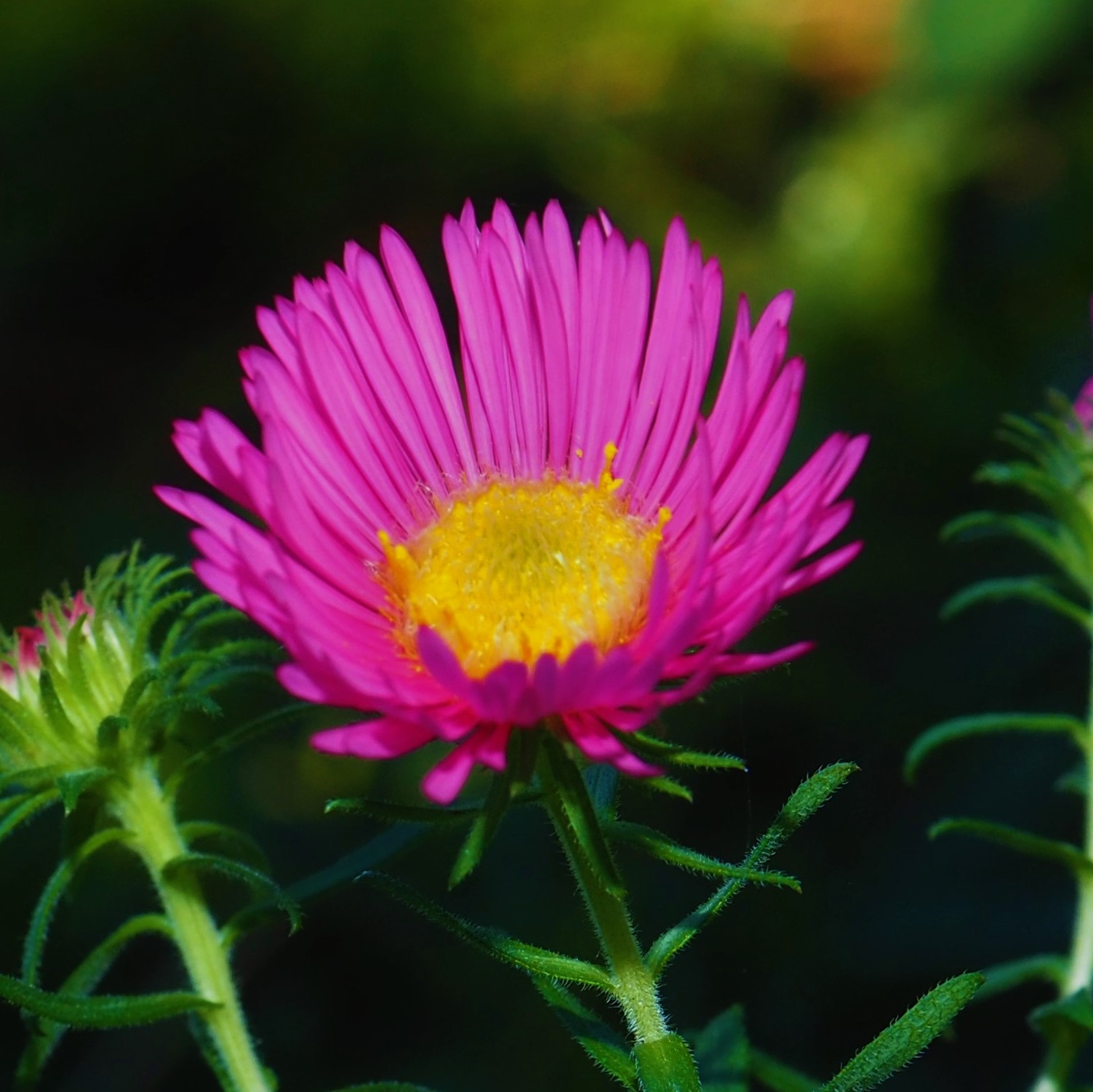
It's not hot. In fact, if I didn't know better, I might think it was September already. Yesterday it was so cool that the former swarm of goldenrod-lovers was very quiet. They just didn't seem to be warm enough to travel from place to place absorbing all that goldenrod nectar and coating themselves with that golden pollen.
But the aster buds I showed you last week are now opening. Picture 1 is the purple one and picture 3 is the pink version. The August Orange Day Lily is still blooming in September, not a usual happening, but I'll take it!
Remember that there is information in the name of the file for each image. You can see it by mousing over the image - look at the lower left of the screen. Or you can click on the image to get to the (usually) larger image. Then the info is displayed in the address line above. Sometimes the second click will actually display a different view of the original image.
Only a few ants this week: One of the Carpenter/Sugar group with some kind of prey; and An Eastern Black Carpenter Ant, both on the shop siding. And a Small Honey Ant on an oak leaf.
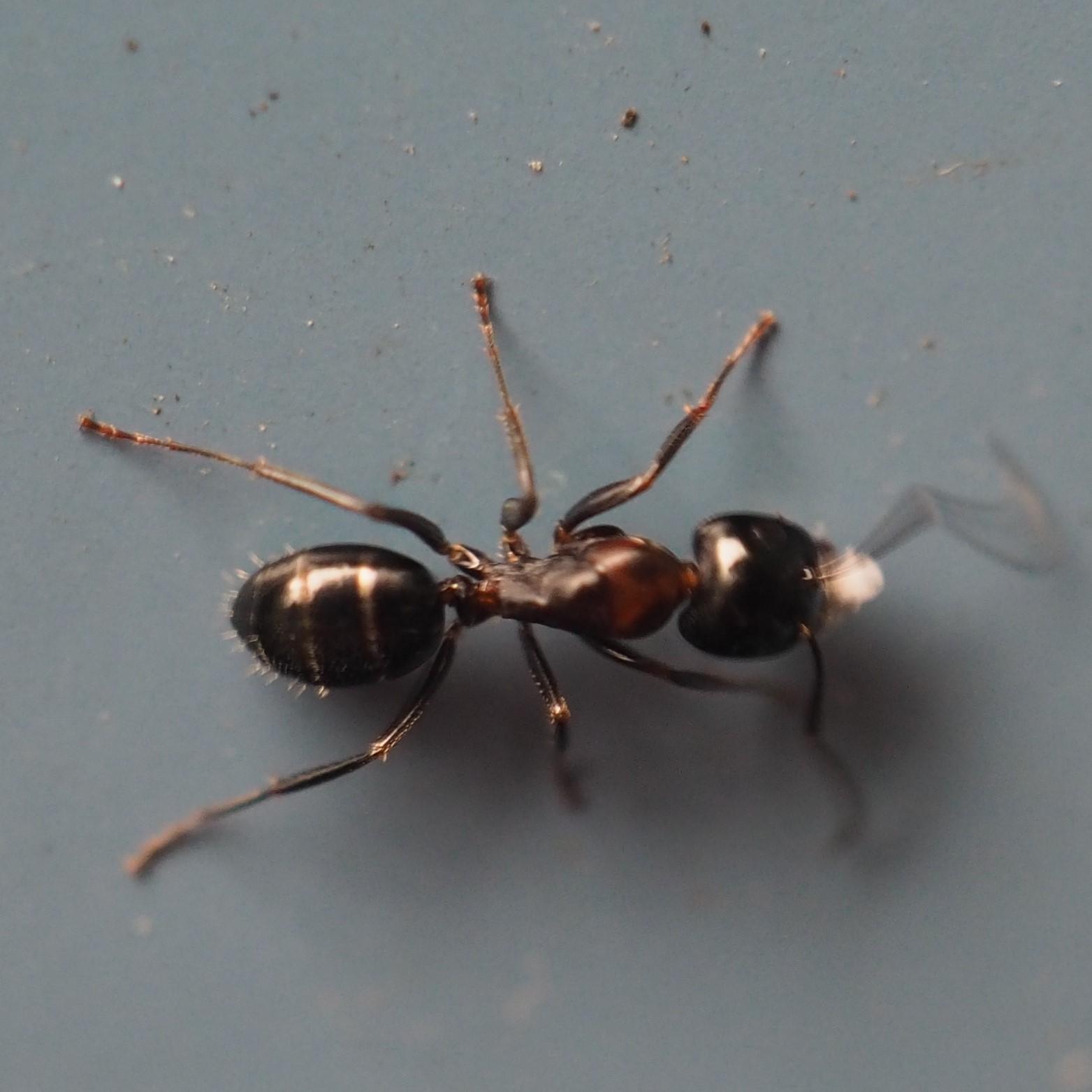
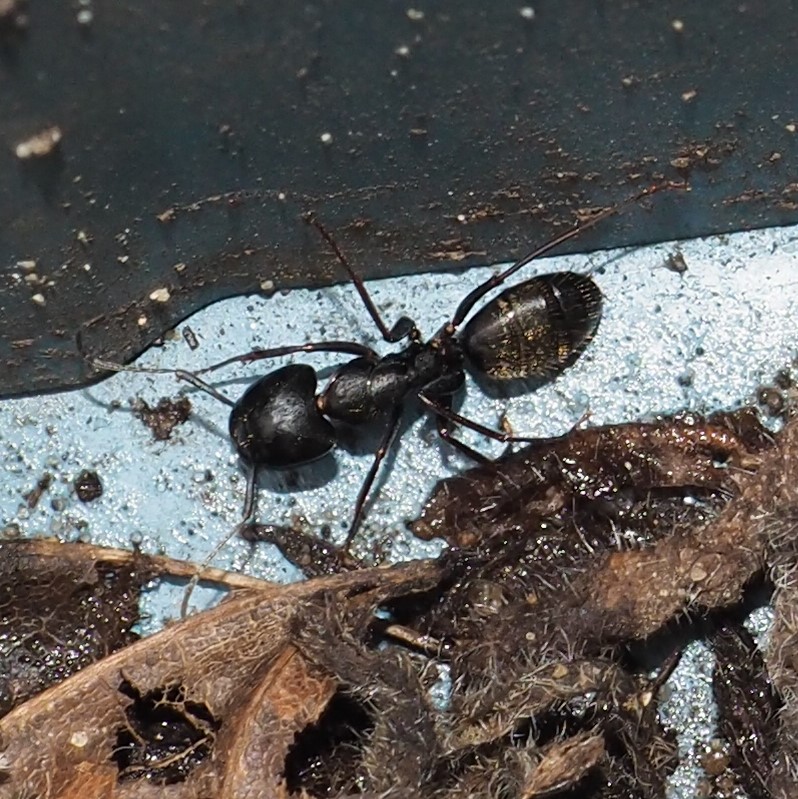
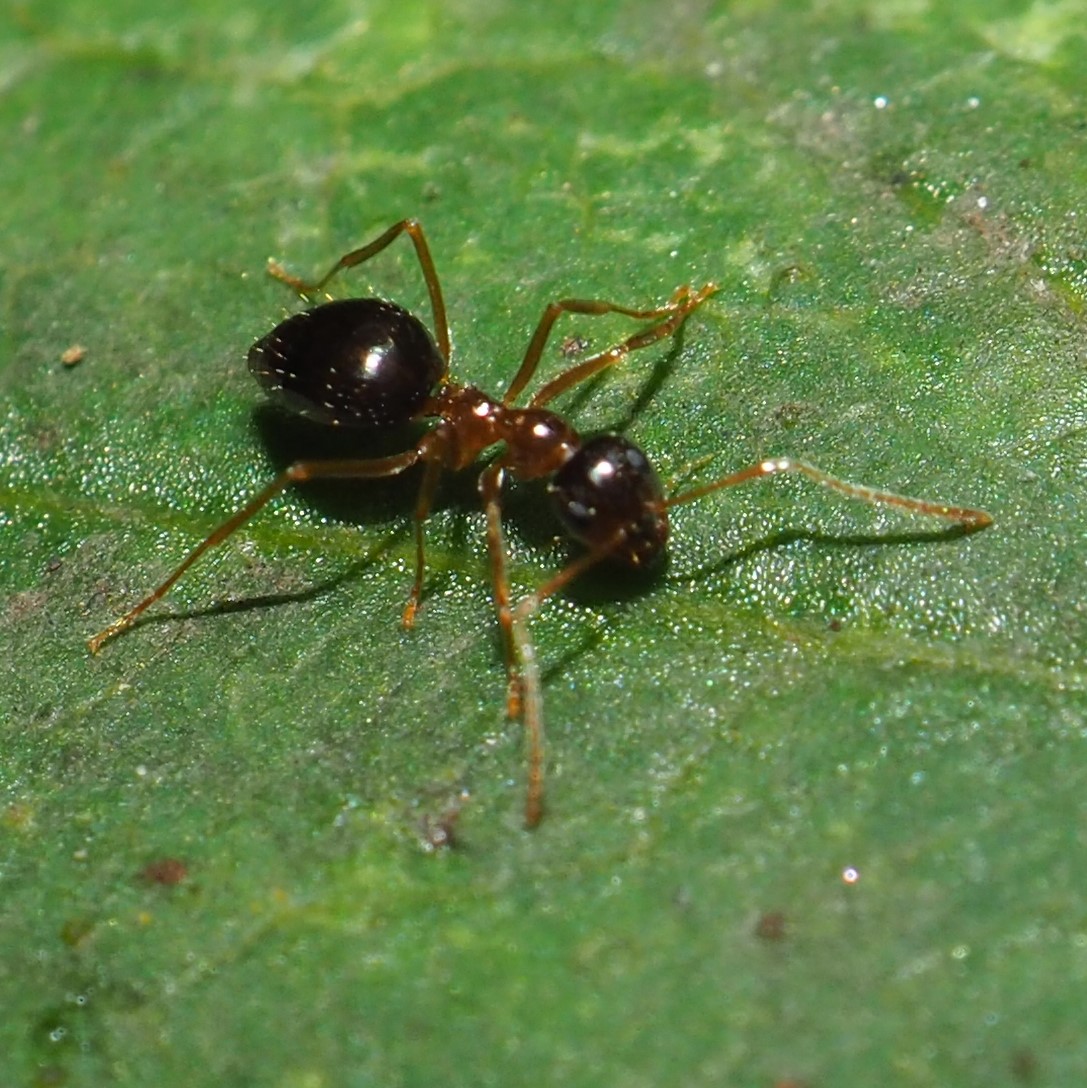
That was until the workmen who came to seal the deck for the first time in about 10 years. They couldn't seem to pull up one of the flower boxes on the deck rail (I had nailed it down so that nobody knocked it over in the middle of the night), and when it did come off, the ants came scurrying to save their eggs and larvae (middle image). Peter Slingsby of iNat identified the ants as belonging to th Odorous Ant genus Tapinoma, and sure enough, I've seen the Odorous House Ant here before. The pictures are awful partly because the ants were running so frantically and partly because that day I hadn't realized the Flash attachment was loose and hence not working. The Camera Shop in Lansing suggested over the phone that I push the attachment in more tightly into its housing and it worked but a day or more AFTER taking these pictures. Anyway, you can see the difference in size between the eggs and the larvae.
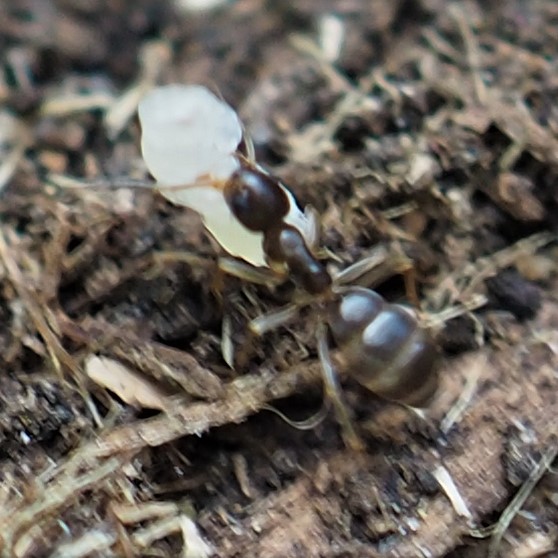

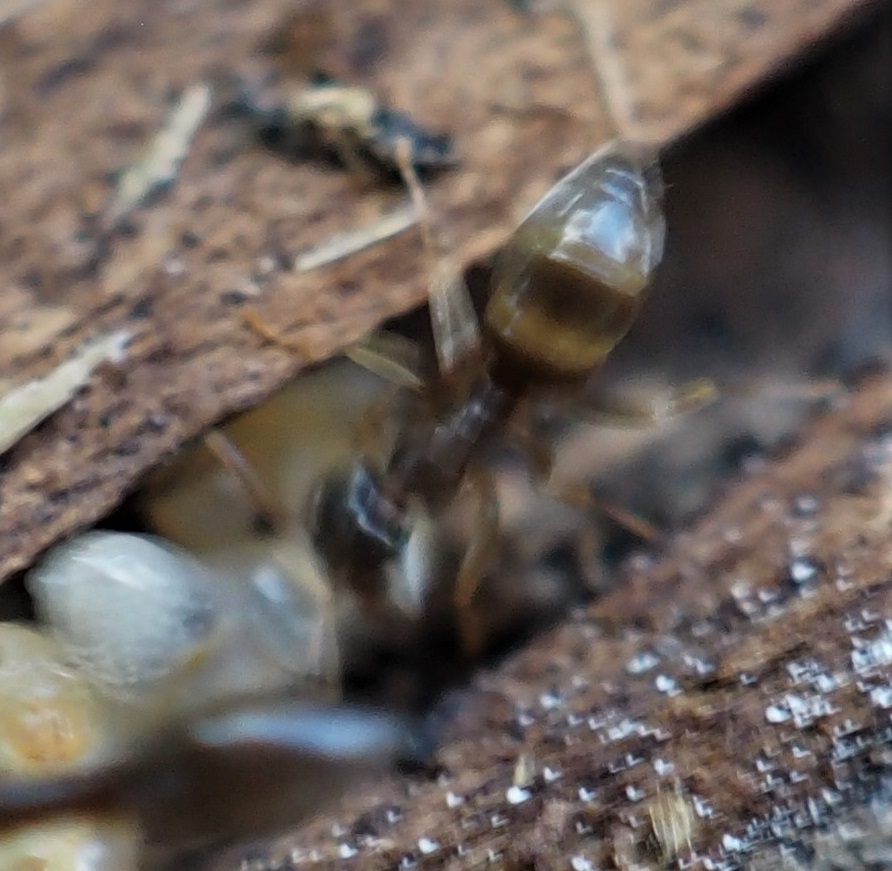
Some old friendly Barklice dropped by. First is Metyphyllophorus novaescotiae - I have such a warm spot in my heart for this particular barklouse as it is the first one I ever got an ID for years ago. I had called it a beetle for months but finally someone on BG identified it for me. I'd never even heard of a barklouse! The second one has been around for some weeks now and I had asked if it was a Psyllid, but one person on iNat said, no, it was a barklouse too.
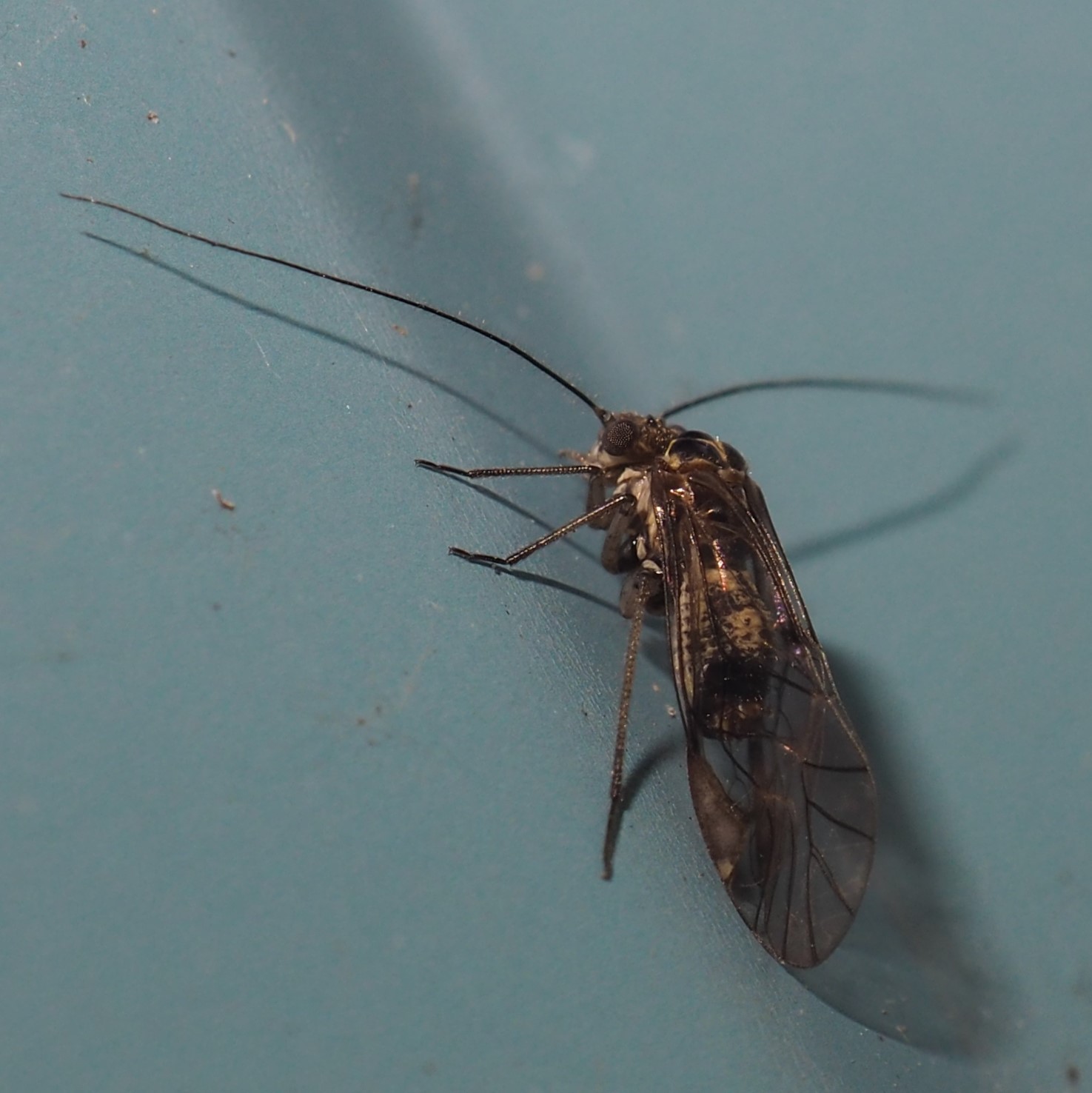
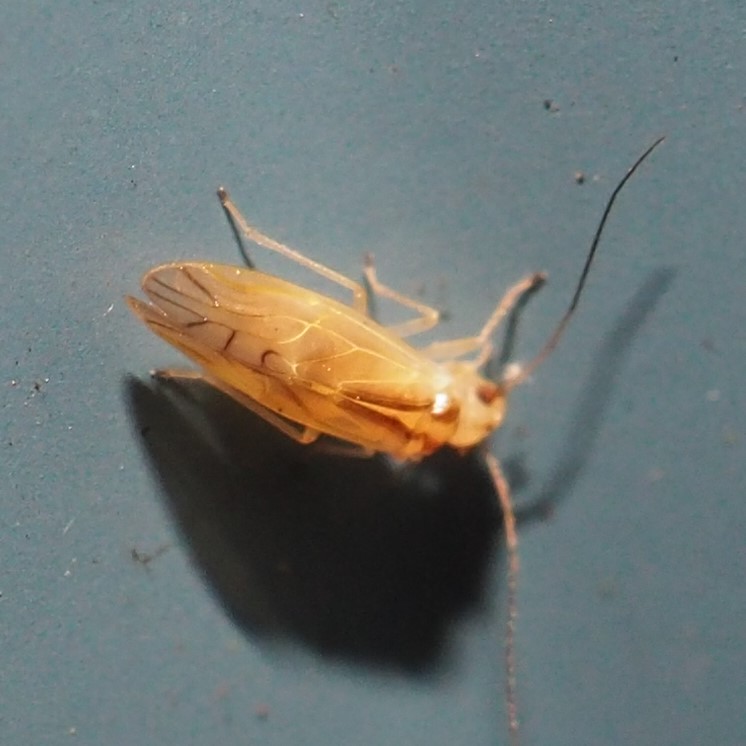
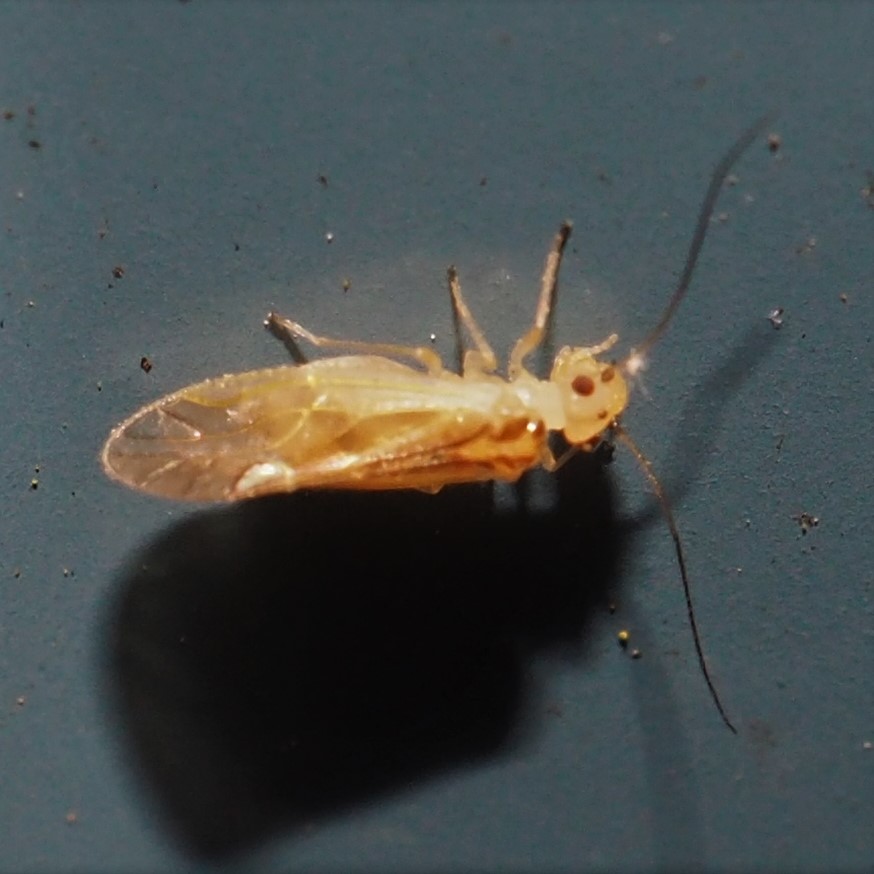
Boy, they go on and on about the dearth of bees these days, and certainly most of the summer they have been in short supply. But when the goldenrod came into its own, so did the Bee population! The honey bees are so really beautiful!
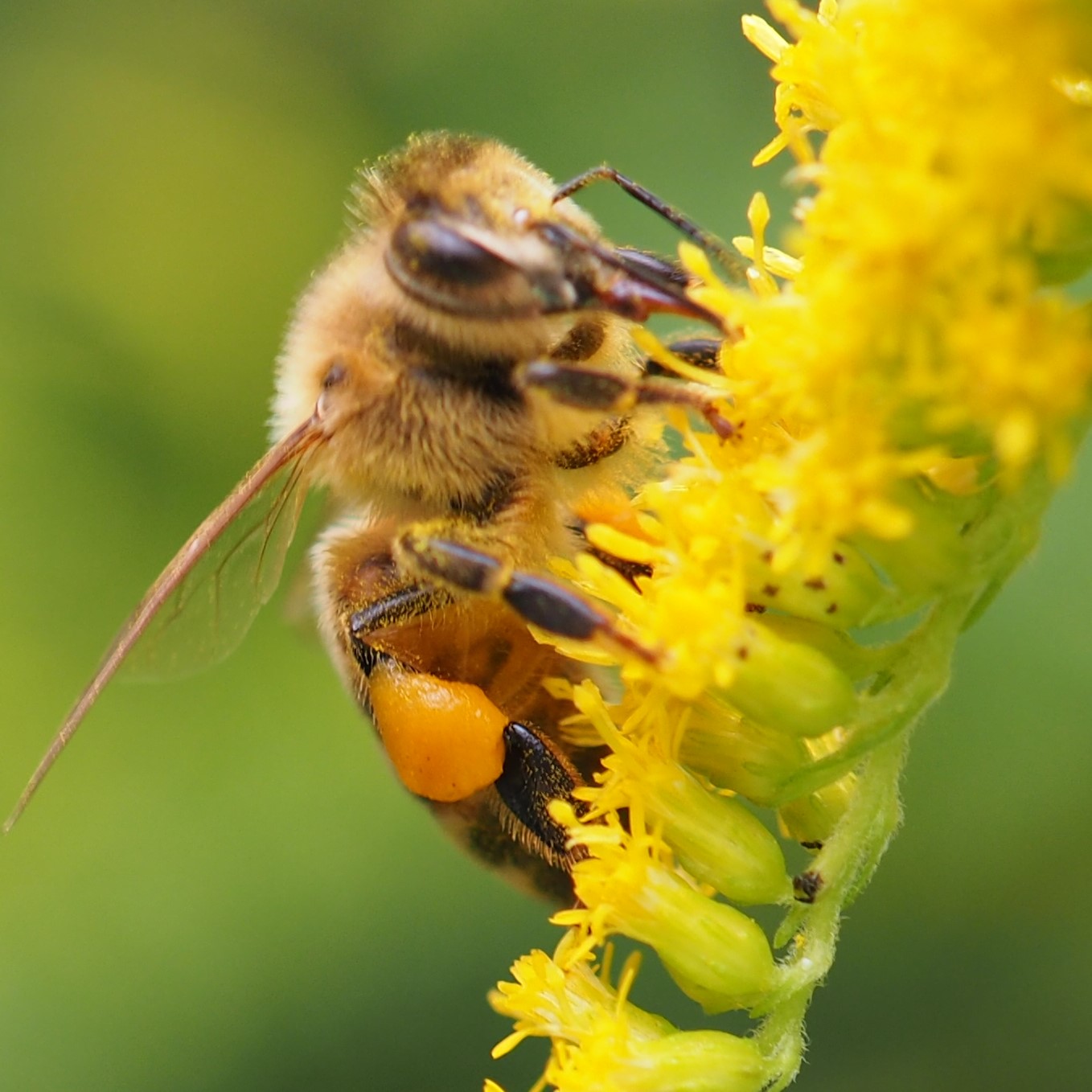
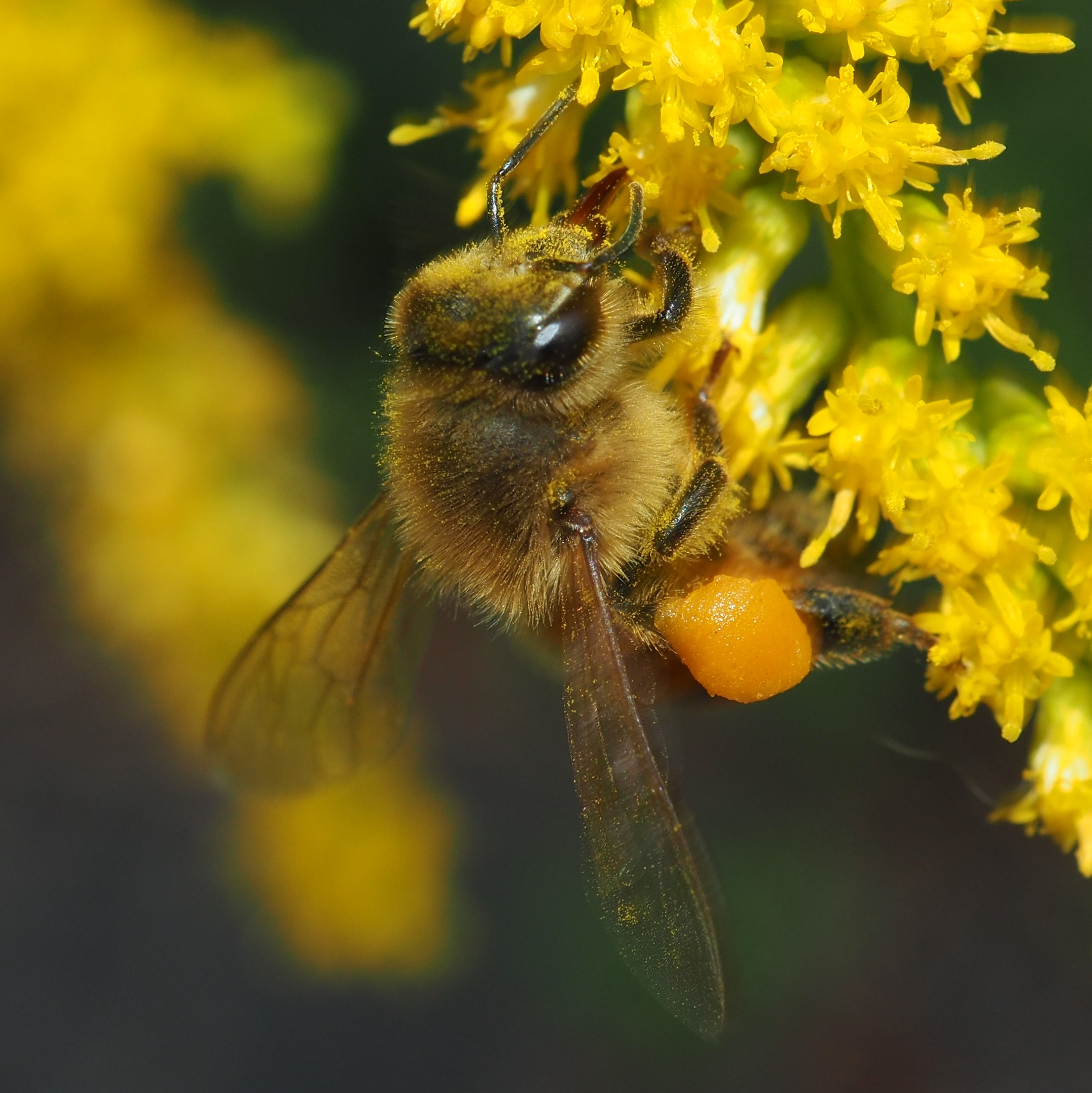

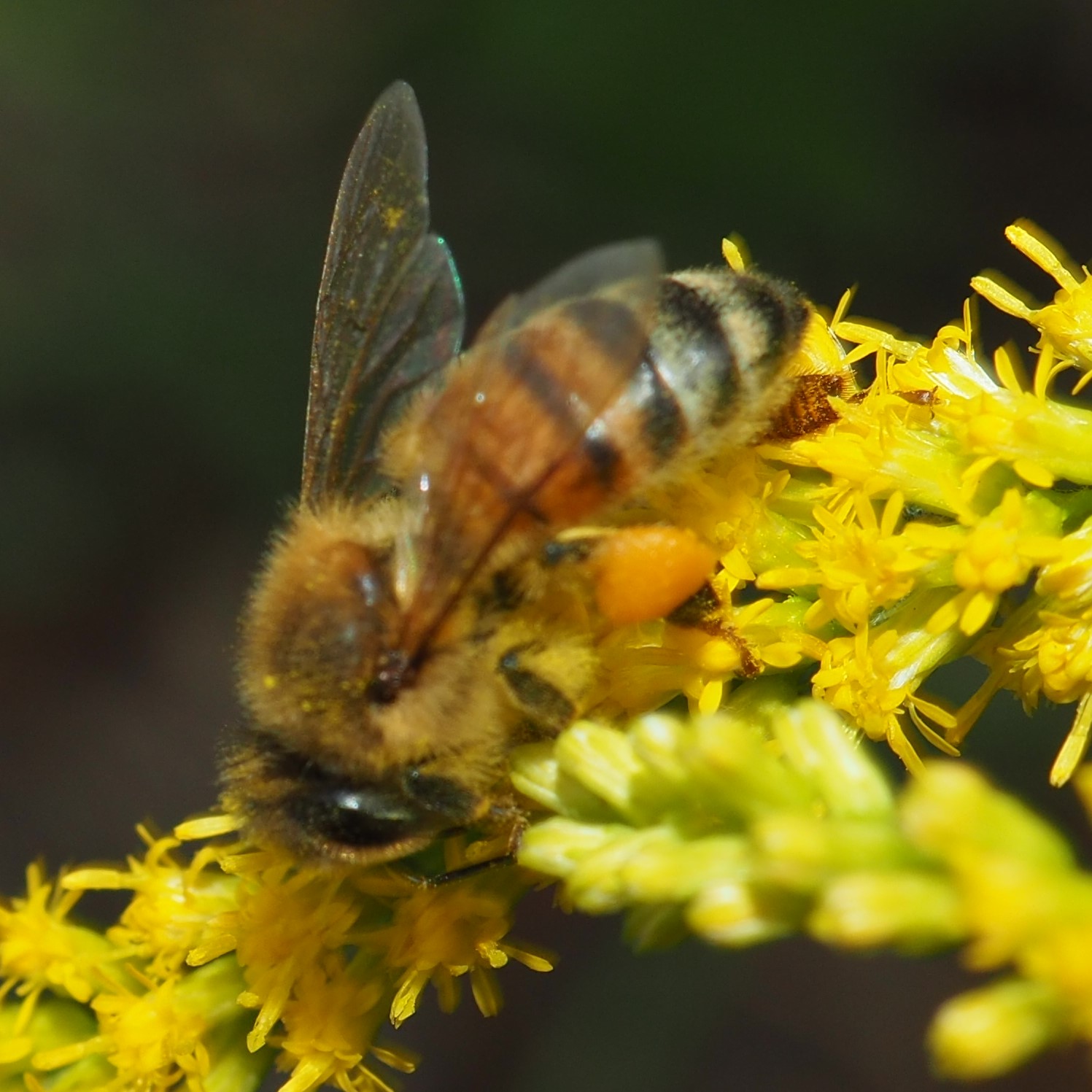
This (pictures 1 and 2) might be a Fairy Bee. It is certainly a sweet-faced little thing! Third is a largish bee or wasp with a good deal of white pollen all over it. Fourth is a kind of Bumble Bee if I understand the world of Bumble Bees. It was not especially large, like most of the Bumble-like Bees that have been around this week.
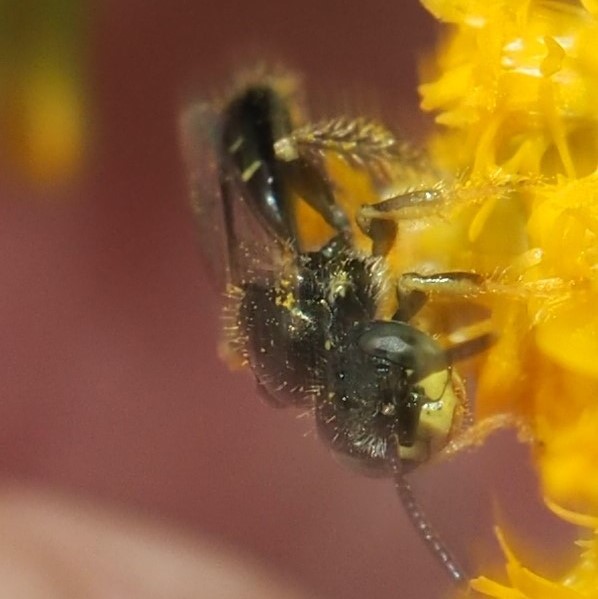
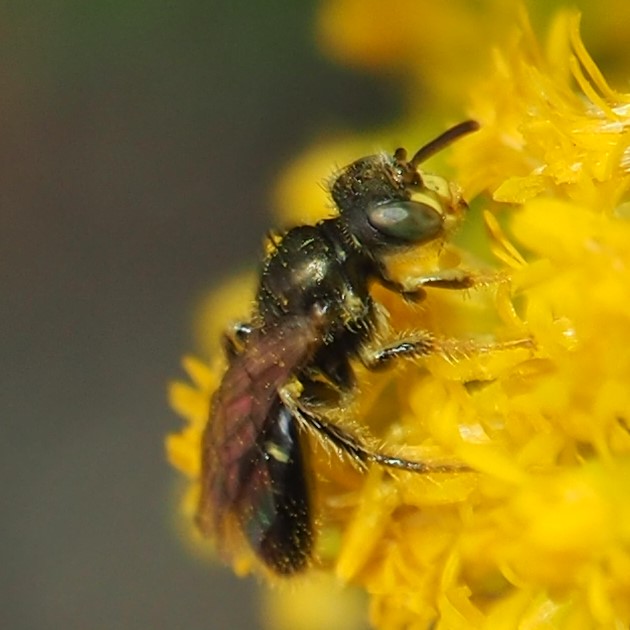
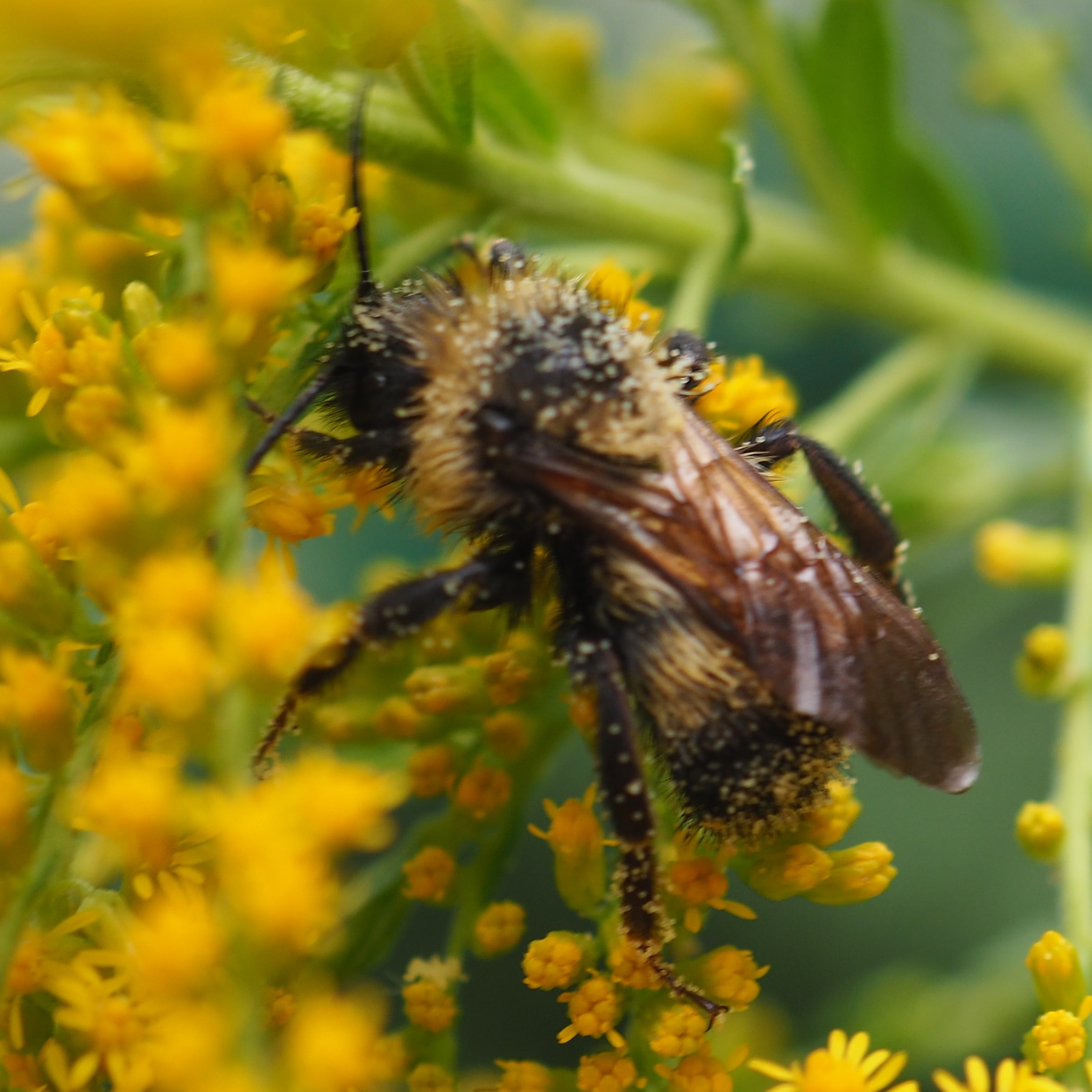
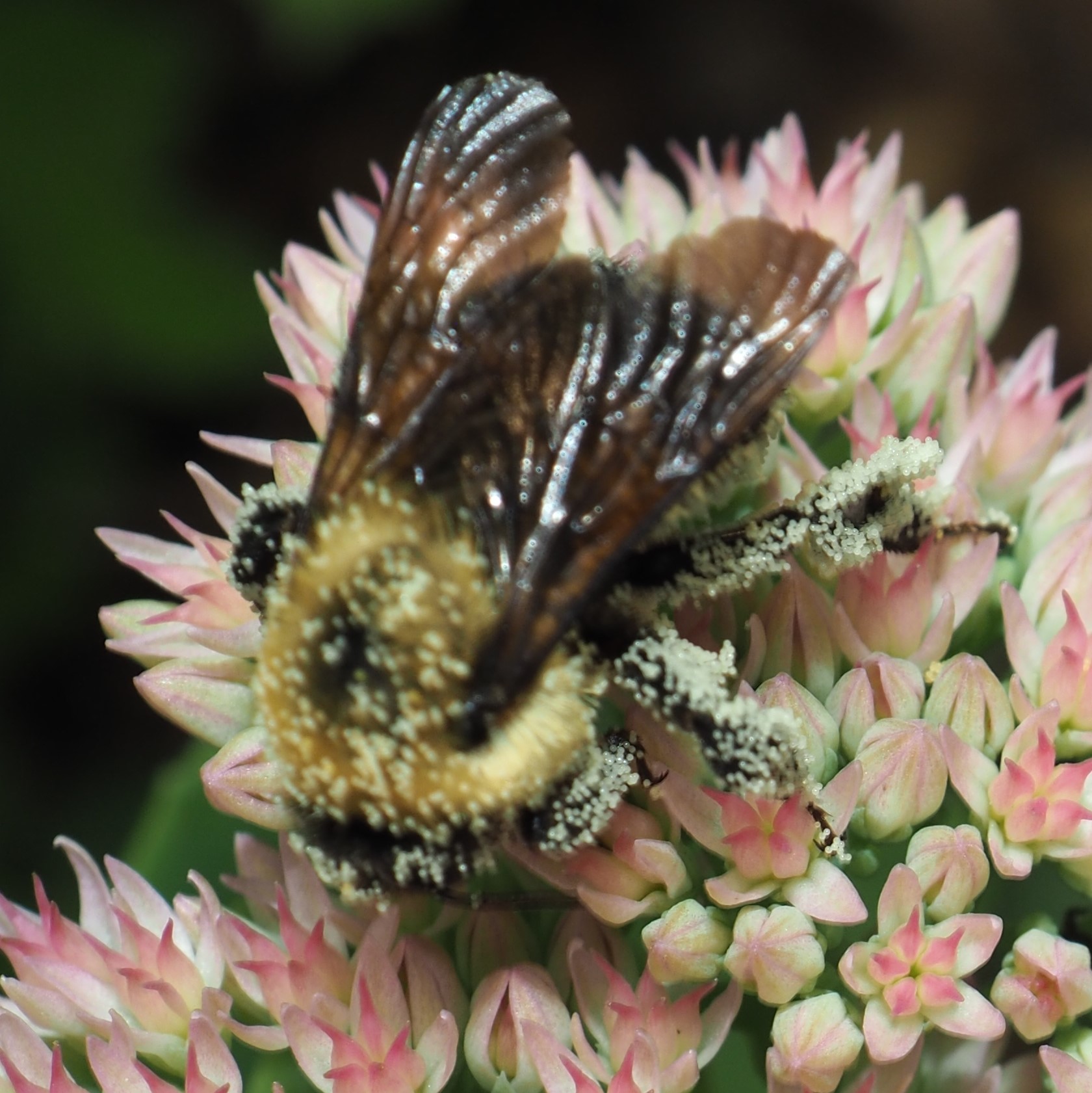
First is a small Bumble Bee. Second may be a different kind. The next two pictures are of a stripy fellow that was around a lot this last two weeks.
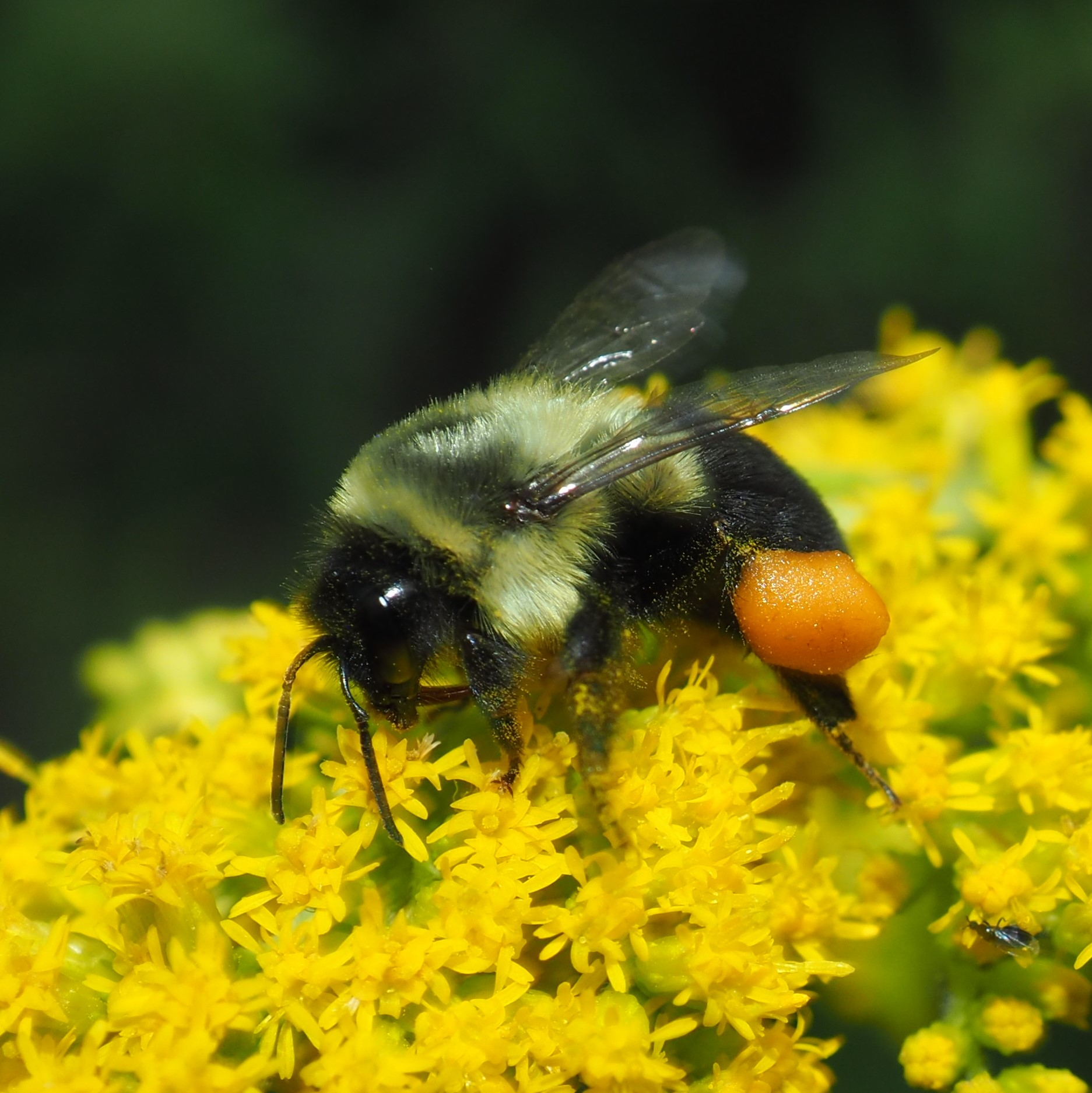
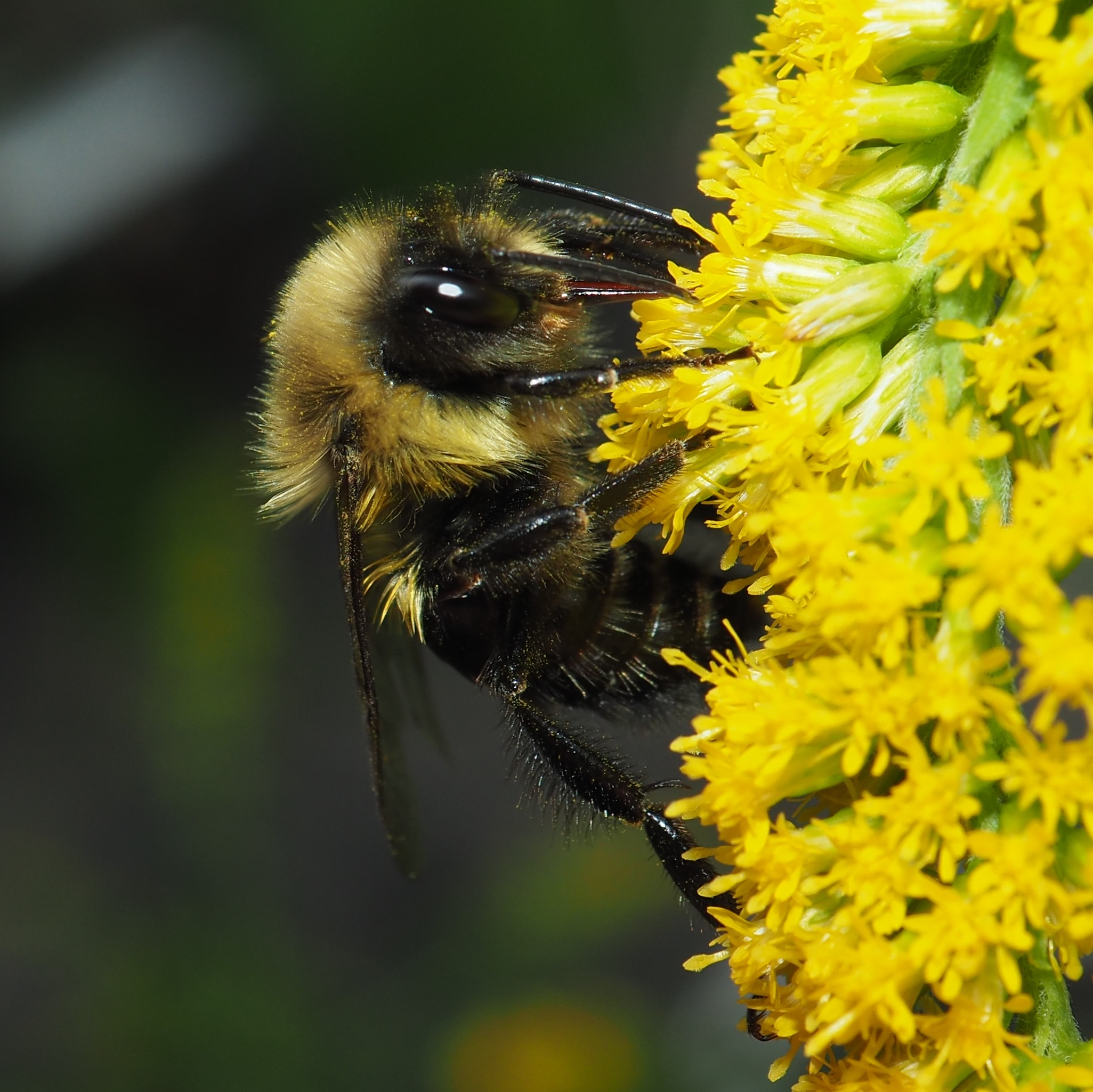
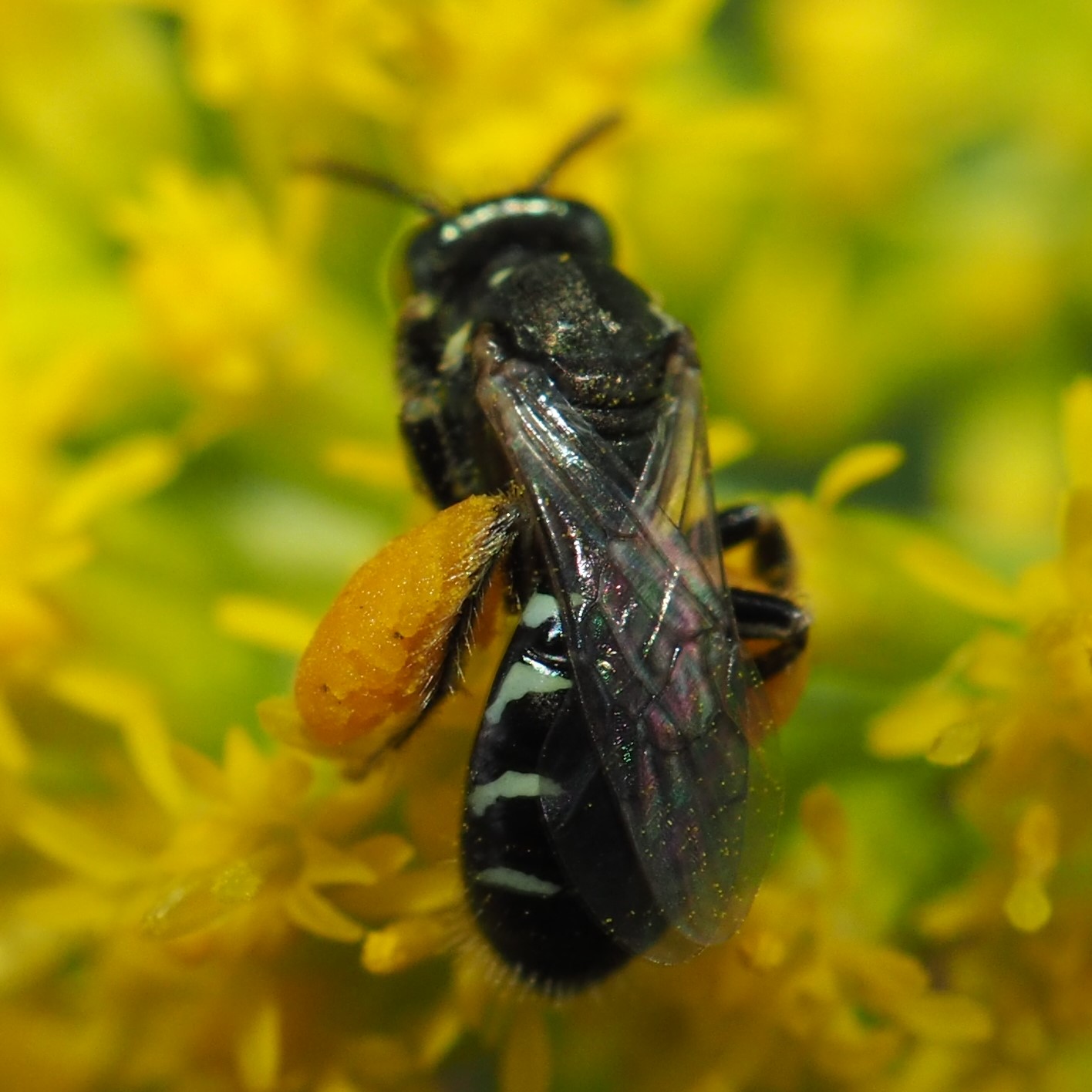
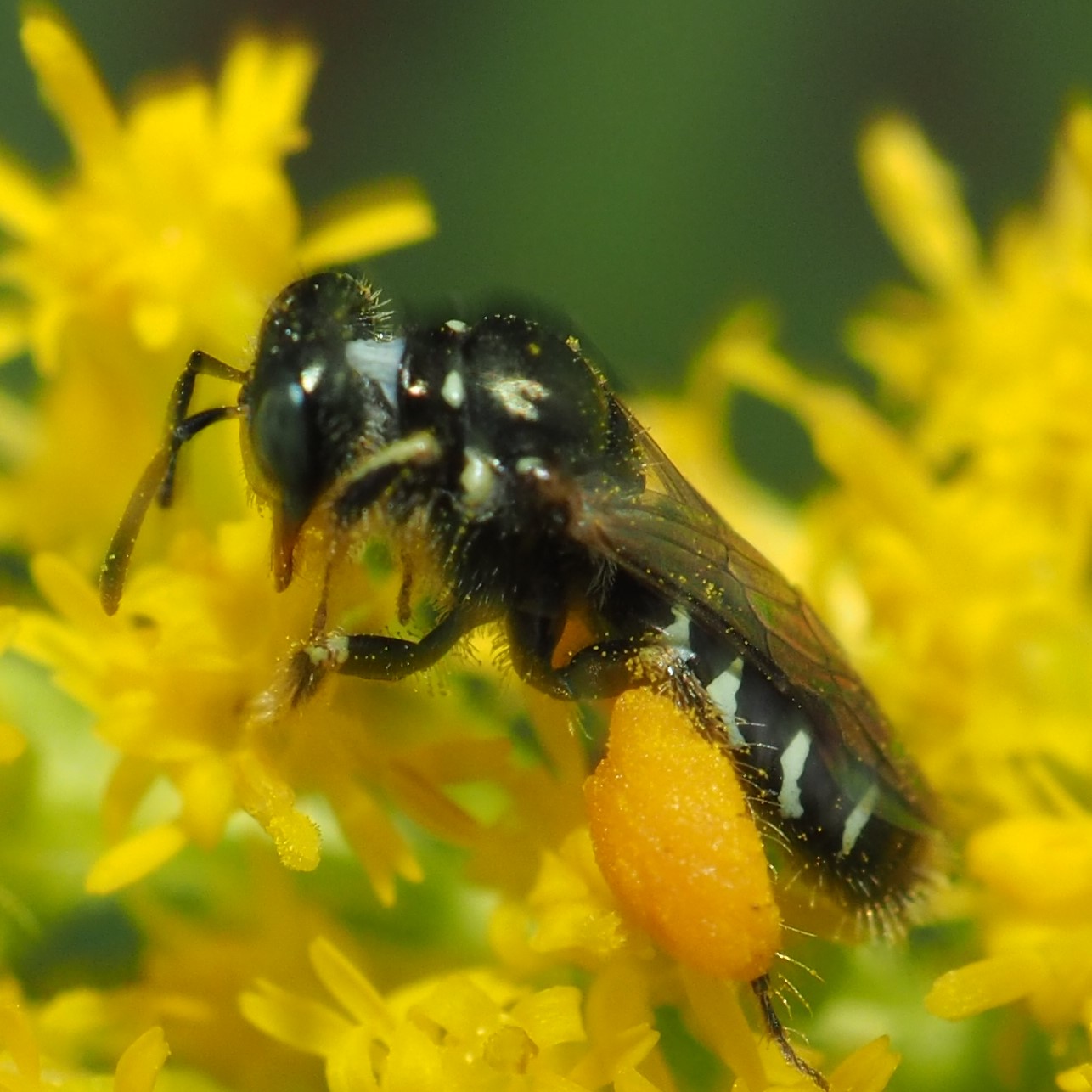
Here we have a Striped Cucumber Beetle. Then a Flea Beetle, I think. Finally, two Locust Borer Beetles. I never saw them mating.
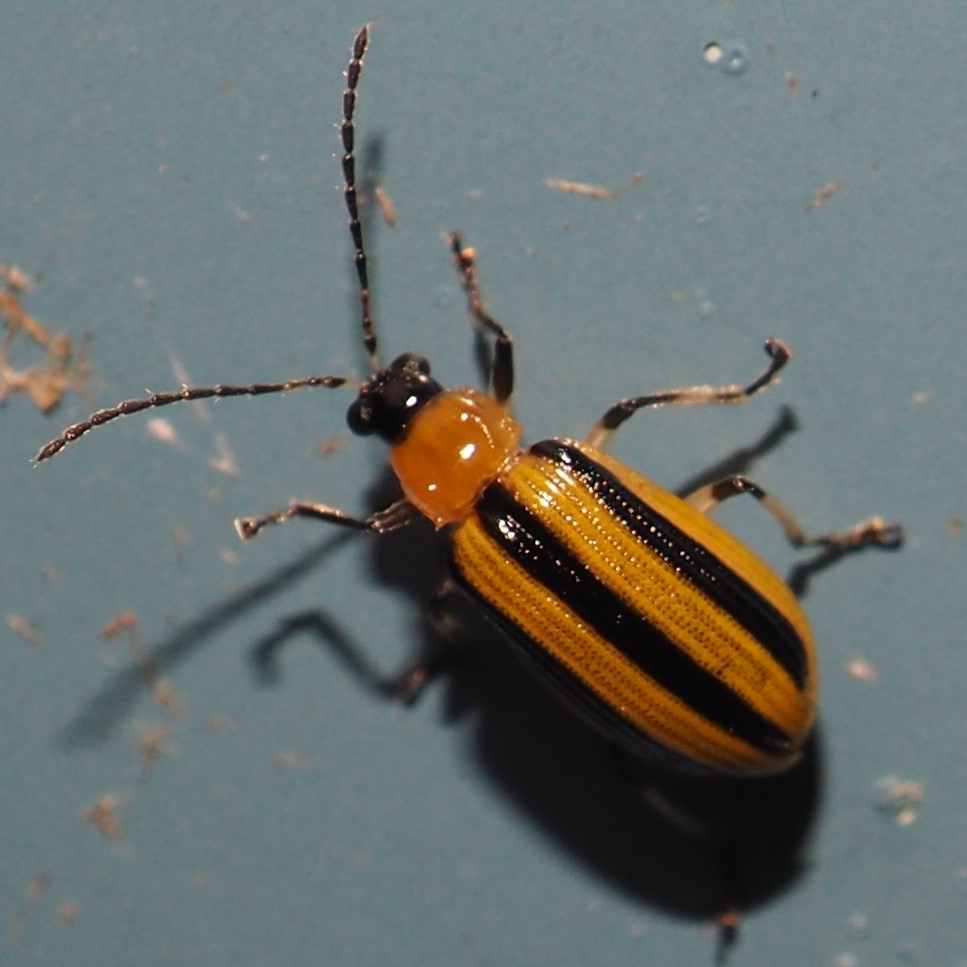

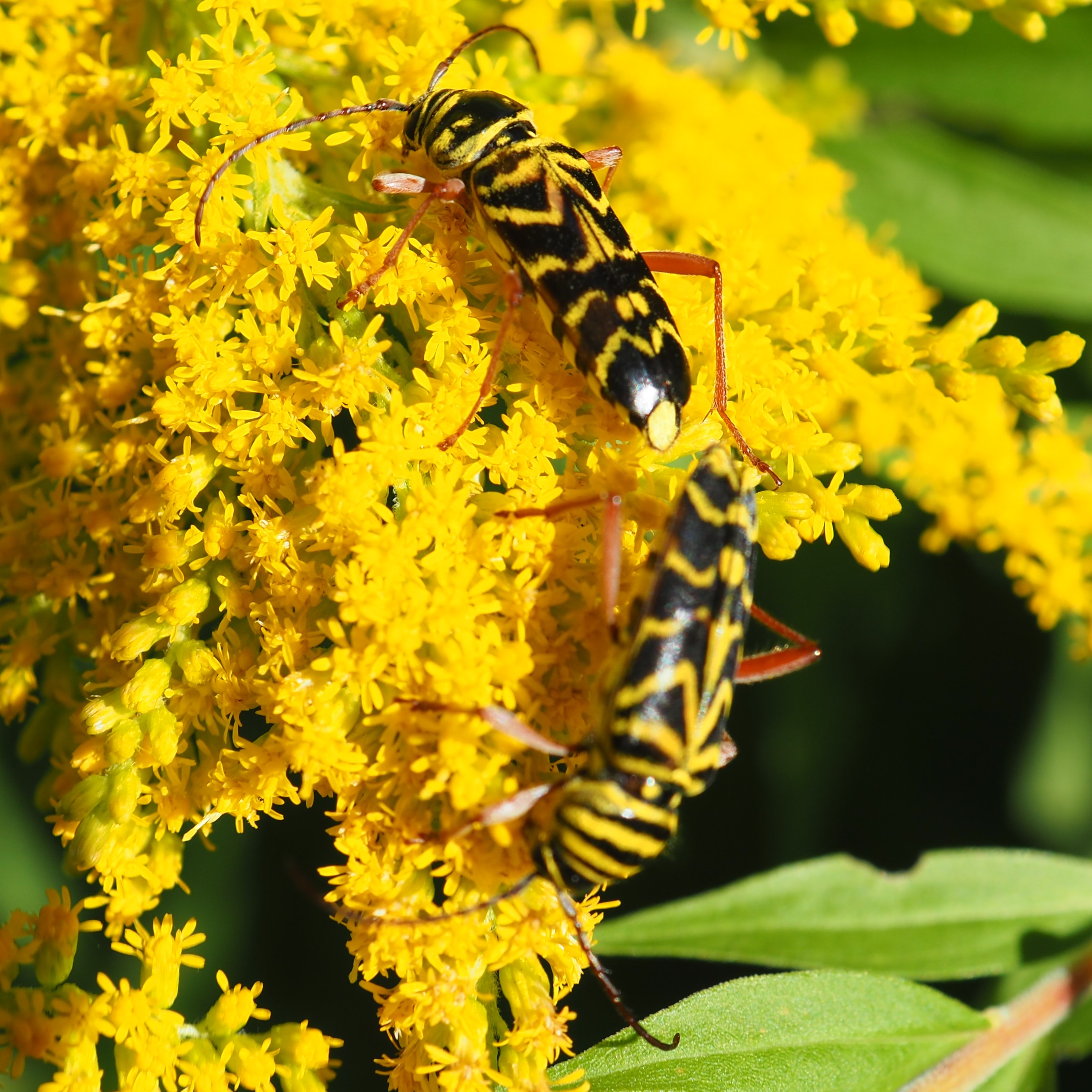
Here's an Asian Lady Beetle, trying to hide from me between leaves. Second is the larva of this beetle. Third seems to be the spent skin left behind when the larva was moulting between instars.
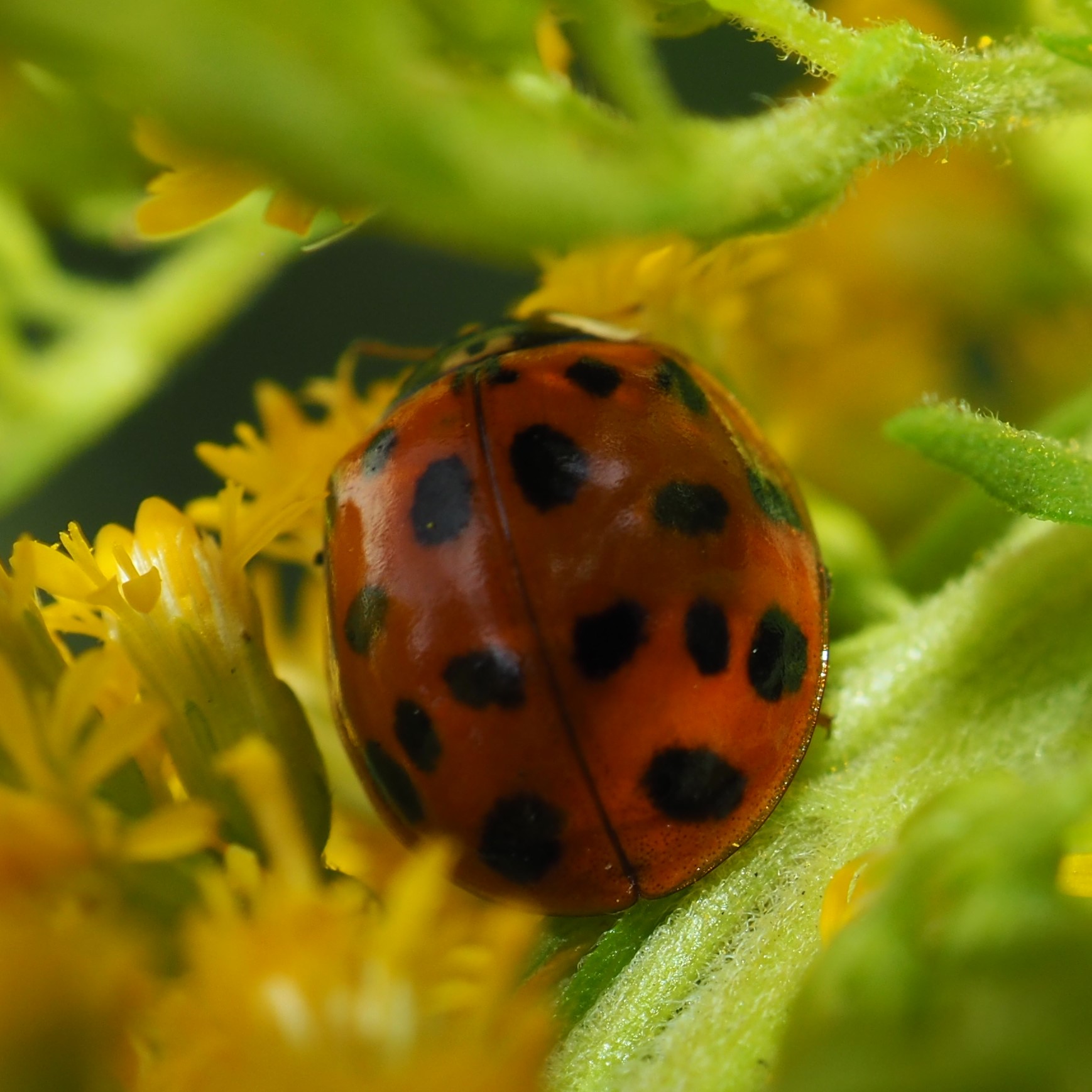
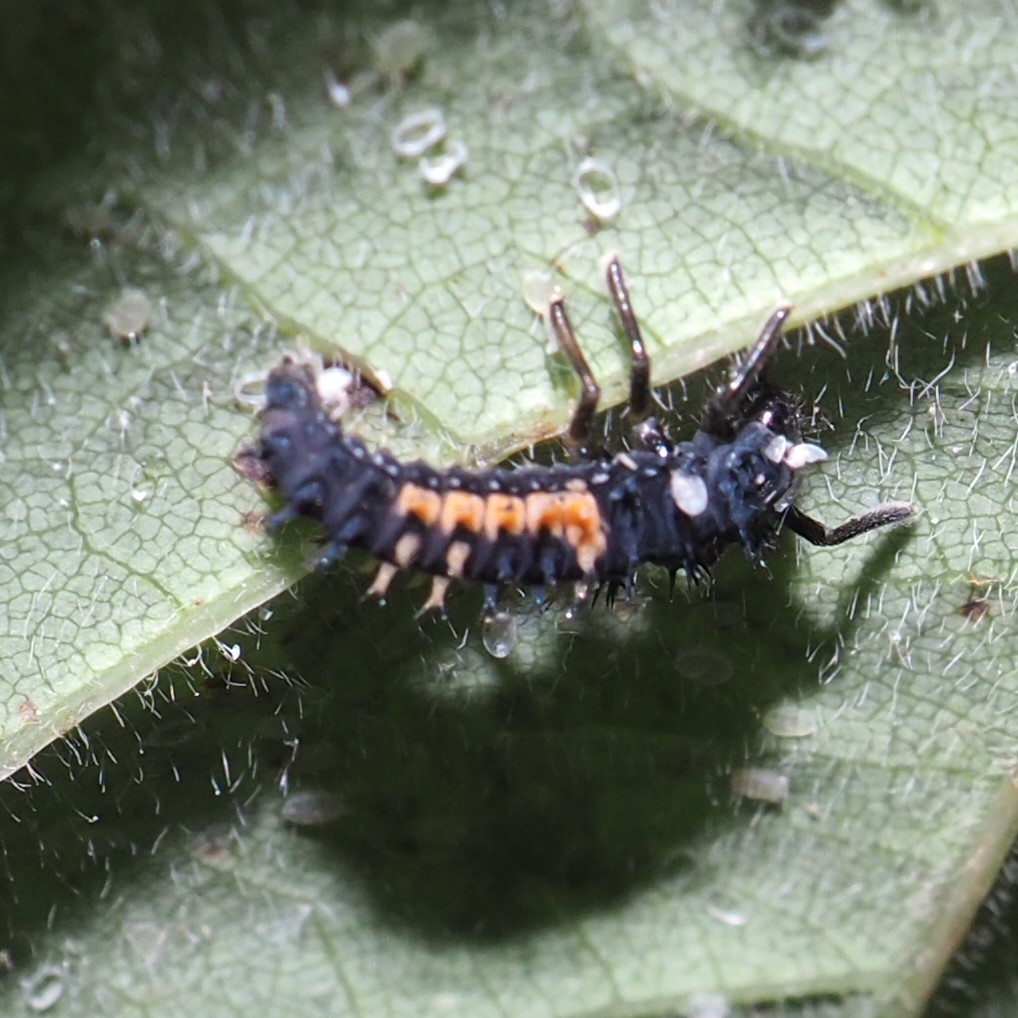

The Ambush Bugs were the stars of last week's blog but gradually they have faded into some other place and I only got a few pictures of them after that. The Goldenrod on which they could be found has also quickly turned brown. Too fast! But here are the best of the pictures this week. First is in warmer colors, second with more black, and third, taken in July 2017, has always reminded me of a certain political figure whose face often is used to caricature a turtle.
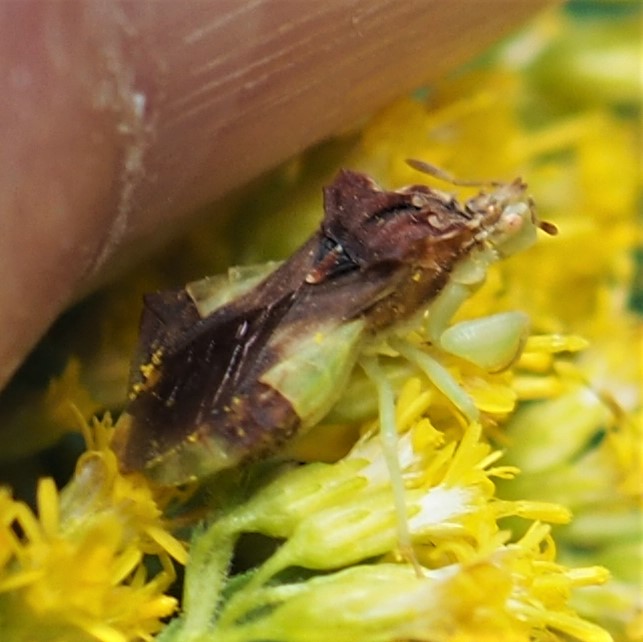
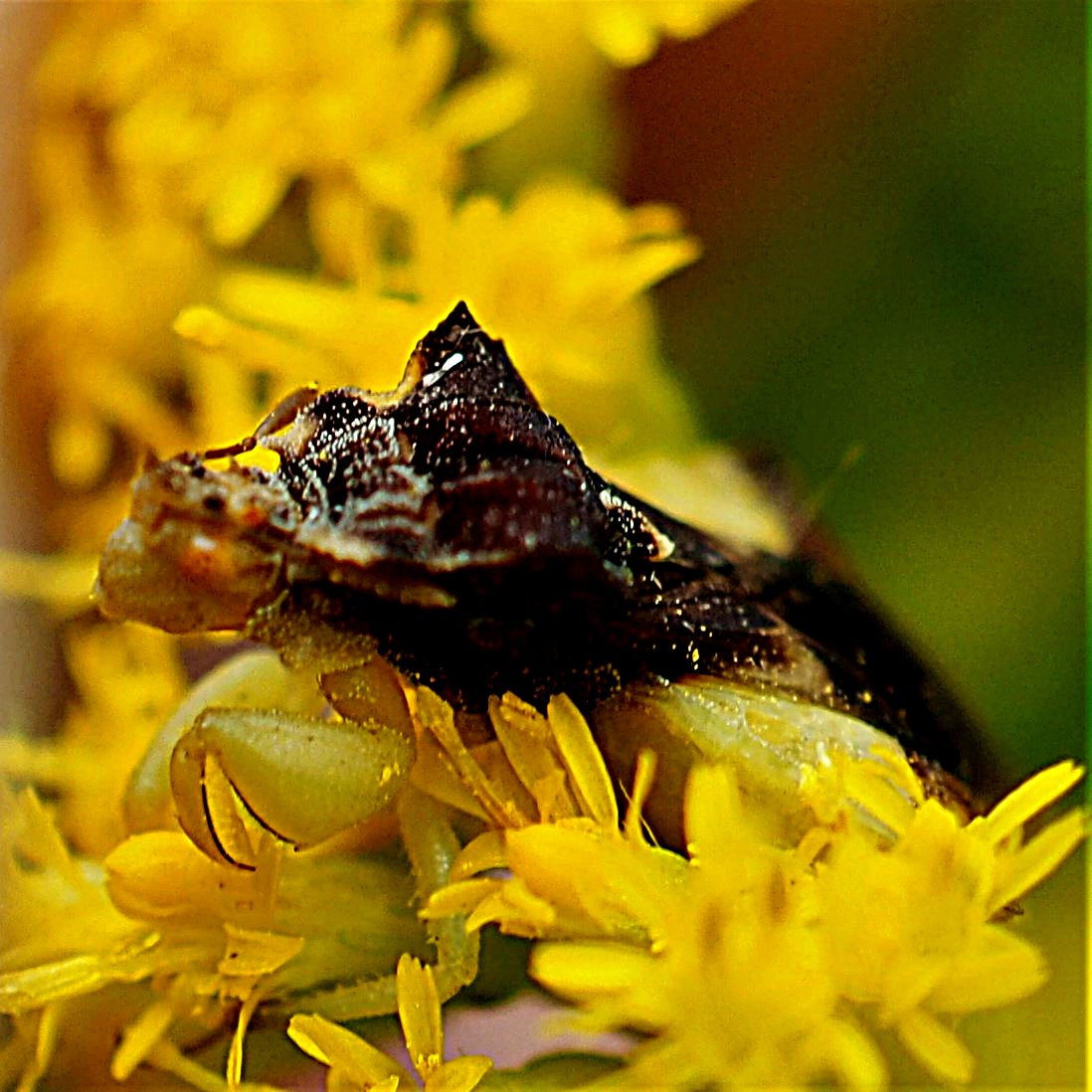
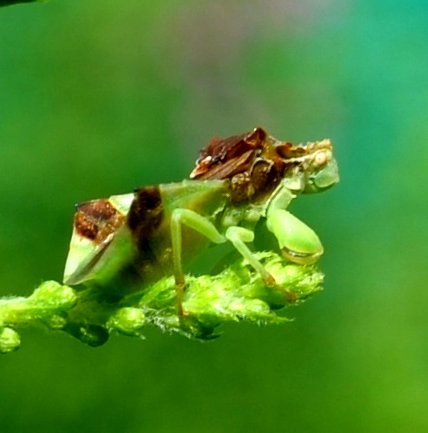
The other well-known carnivorous (insectivorous) insects in this territory are the Assassin Bugs in the genus Zelus. Warning: I didn't notice when this bug walked onto my finger. They can actually cause a good deal of pain to the foolish footpath if they decide to draw their slurpy-maker. Don't do this. We almost had a nice Praying Mantis yesterday. My neighbor Debby the teacher brought home a large gravid female Chinese Mantis but in trying to transfer her to my goldenrod, she (the mantis) took off and flew strongly to the lower branches of a huge Maple tree across the street. Third is a Chinese Mantis from my friend Kathleen's garden.
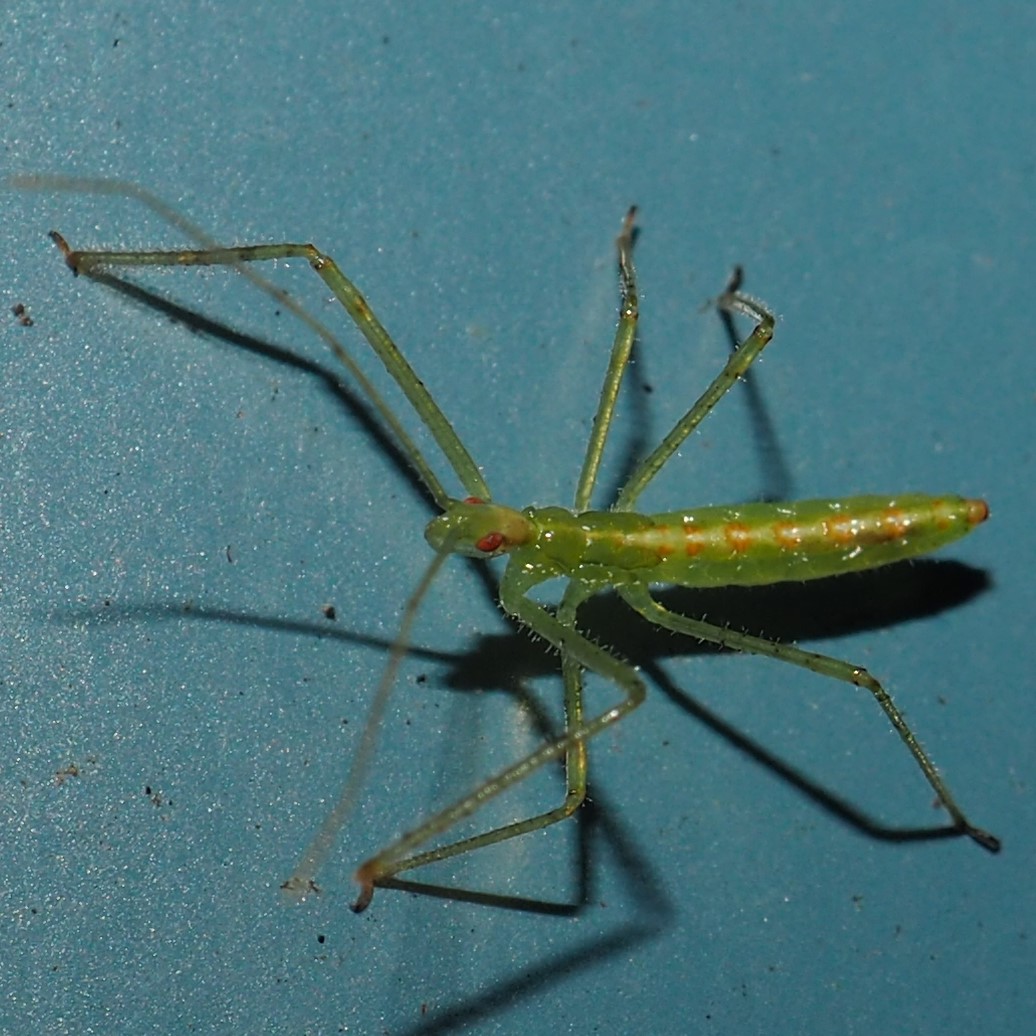
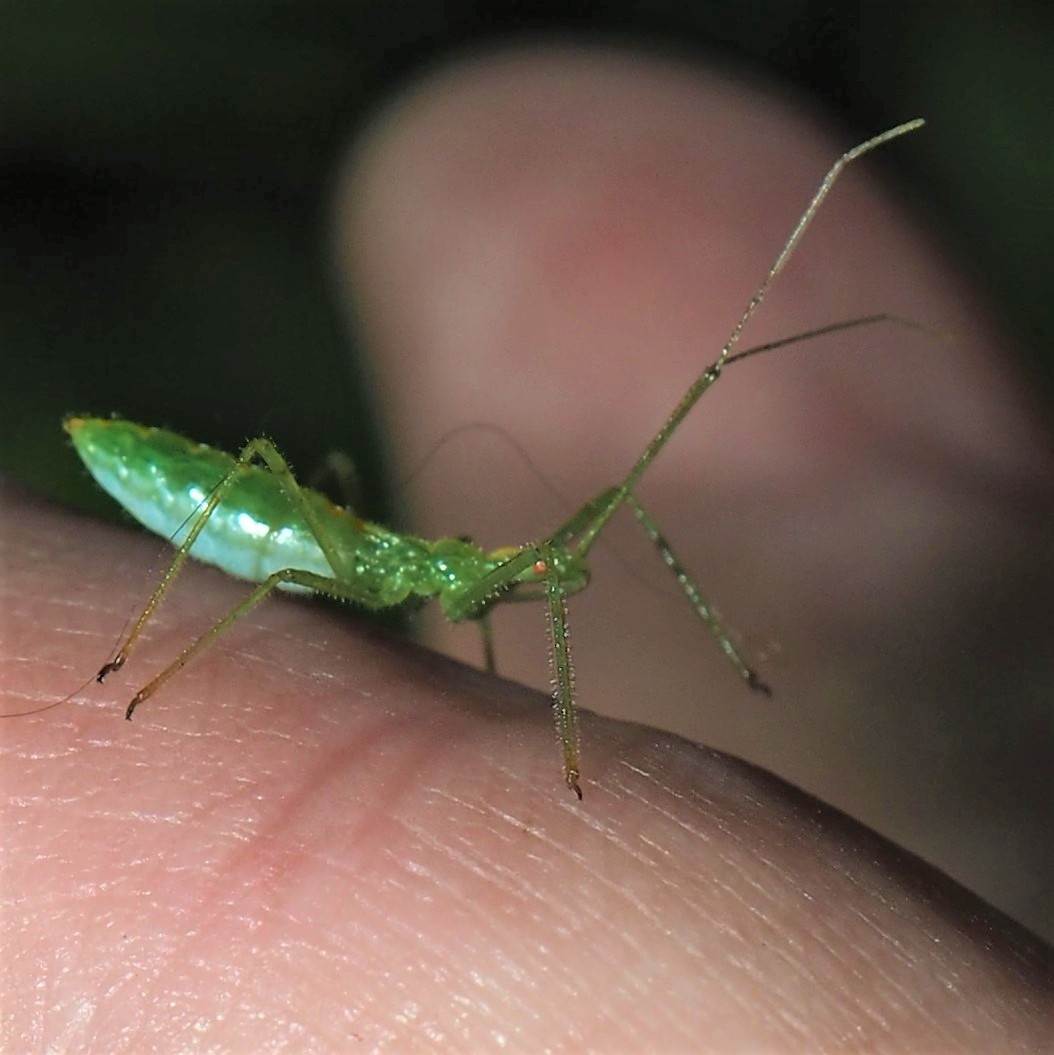
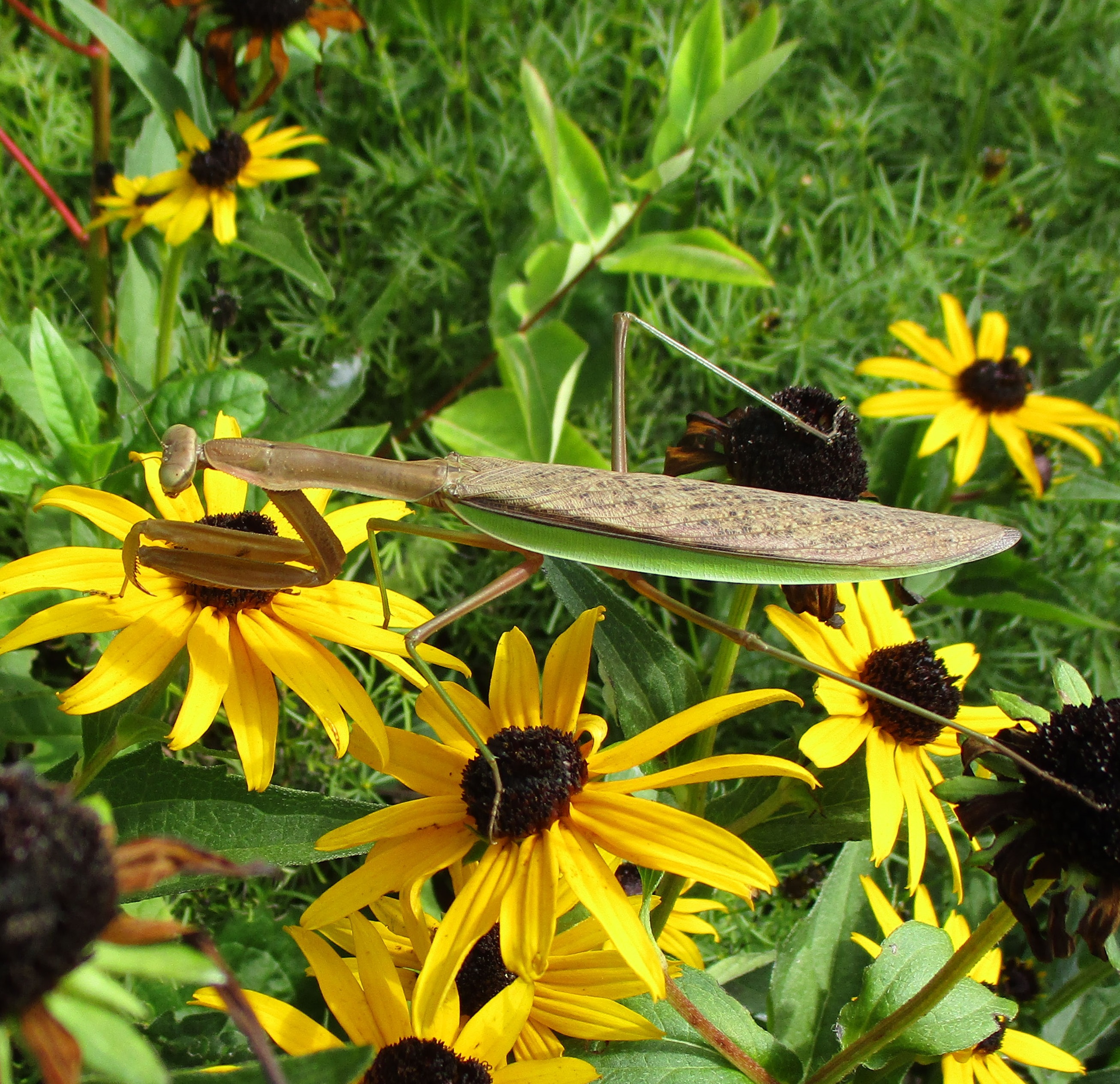
Those were the well-known carnivores. There are many more but these three are the ones that are the most exciting. For one thing, this Mantis is a huge insect. The others are fairly small and the Ambush bugs are so highly camouflaged that I went for years not seeing them because I had never heard of them. Let's turn to the Leafhoppers. There were quite a few kinds this week. First, the good old Candy-striper. One in pink shades. Third may be a Japanese leafhopper, but I'm not sure.
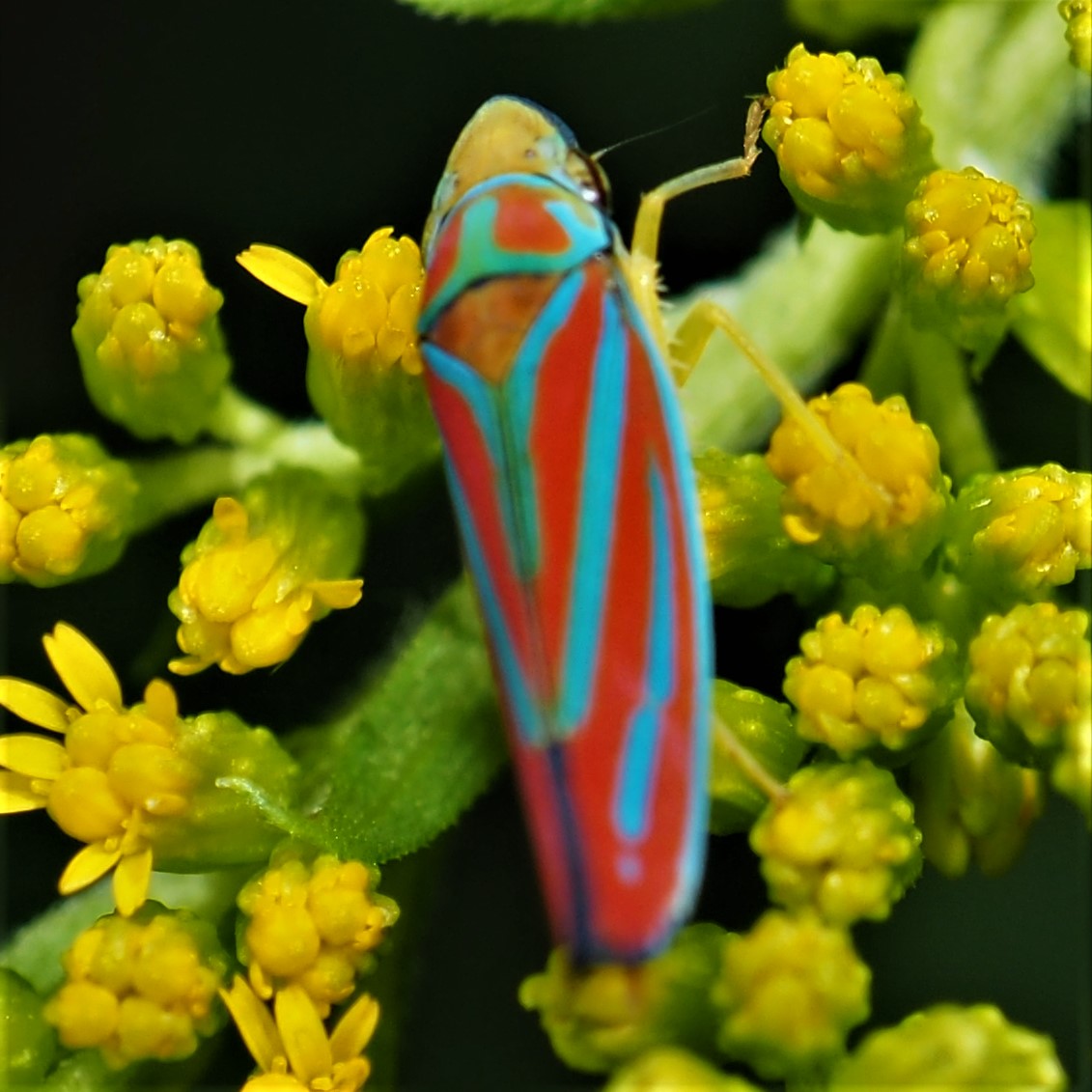

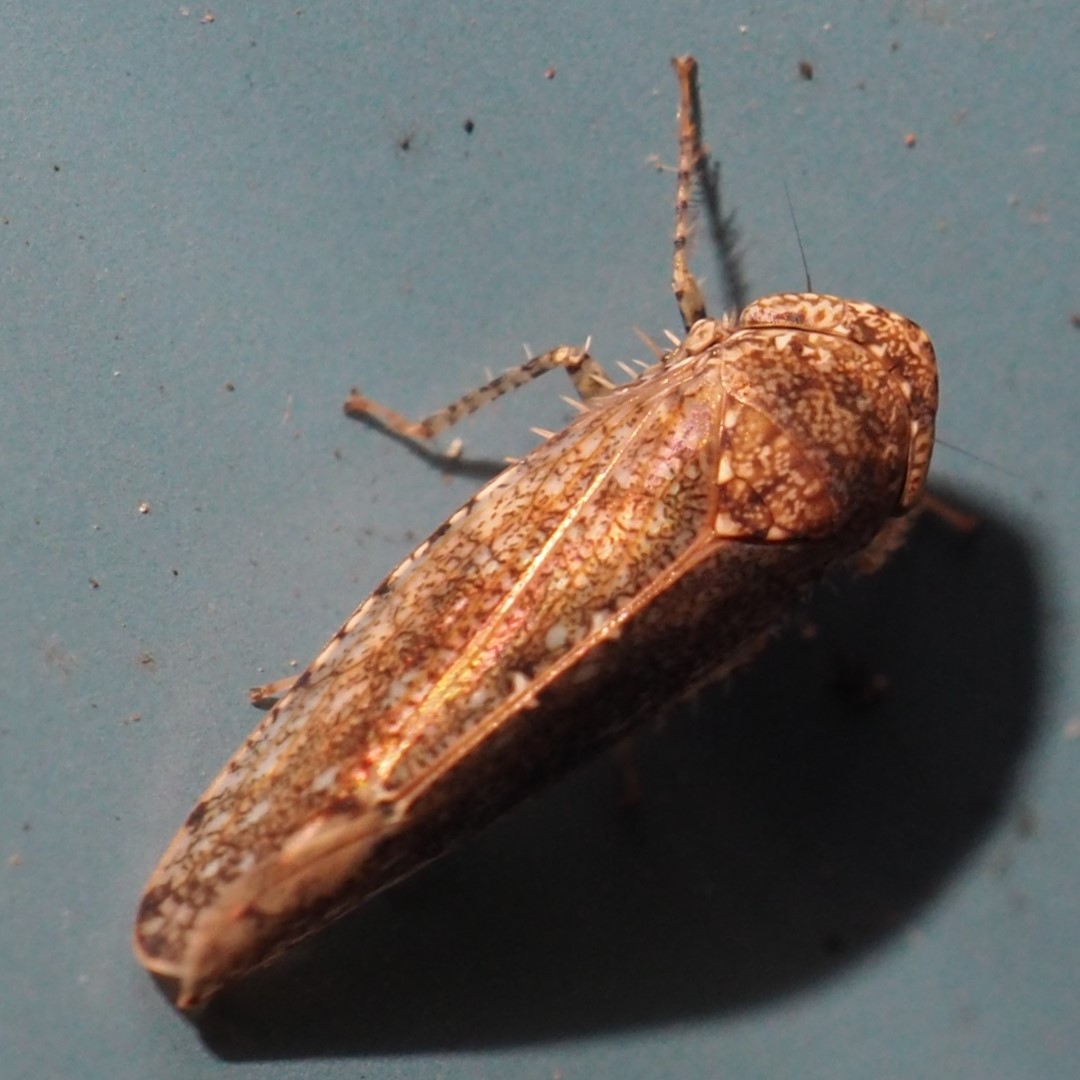
More leafhoppers. This first one, like a few others, was shot while my flash wasn't working. Duh! Number 2 resembles genus Scaphoideus. The last two are most likely Jikradia olitoria, the adults of those cute little curly nymphs!

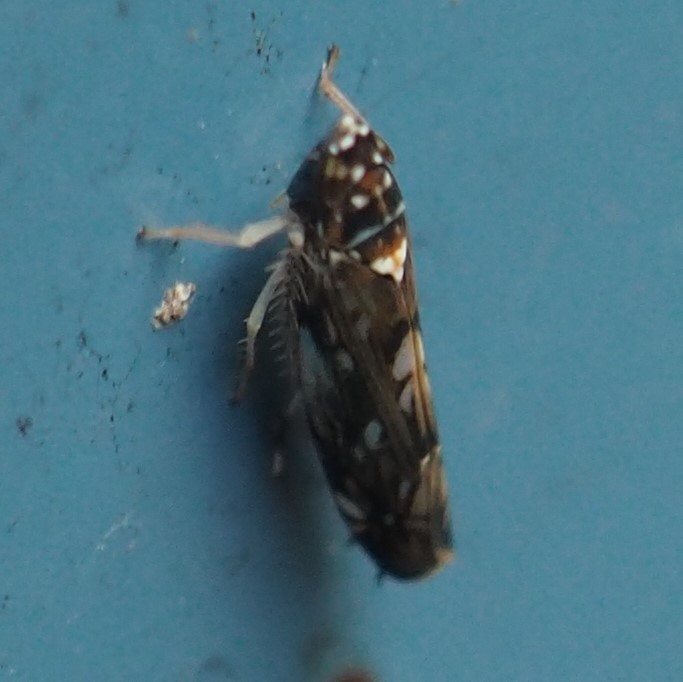
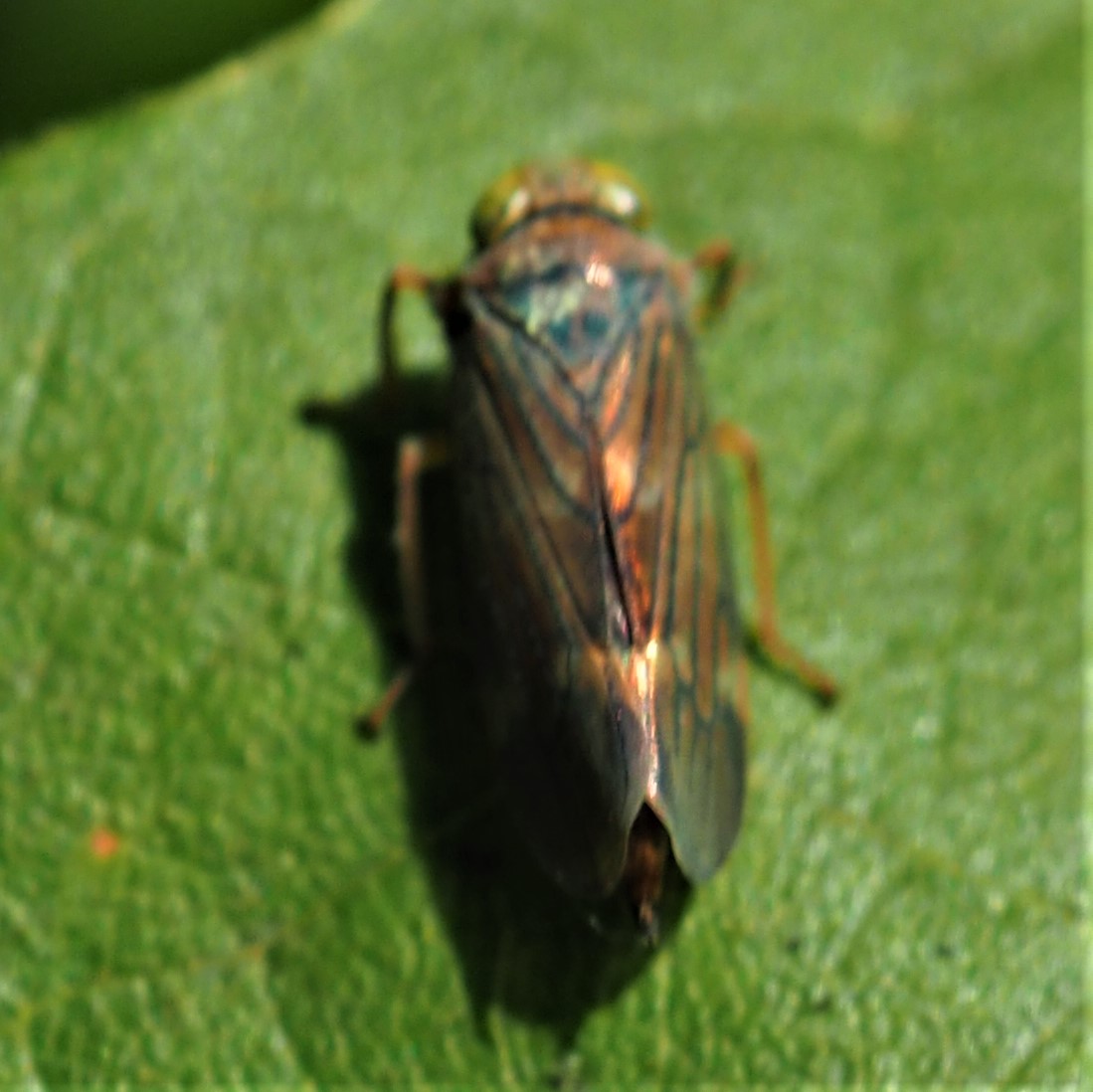
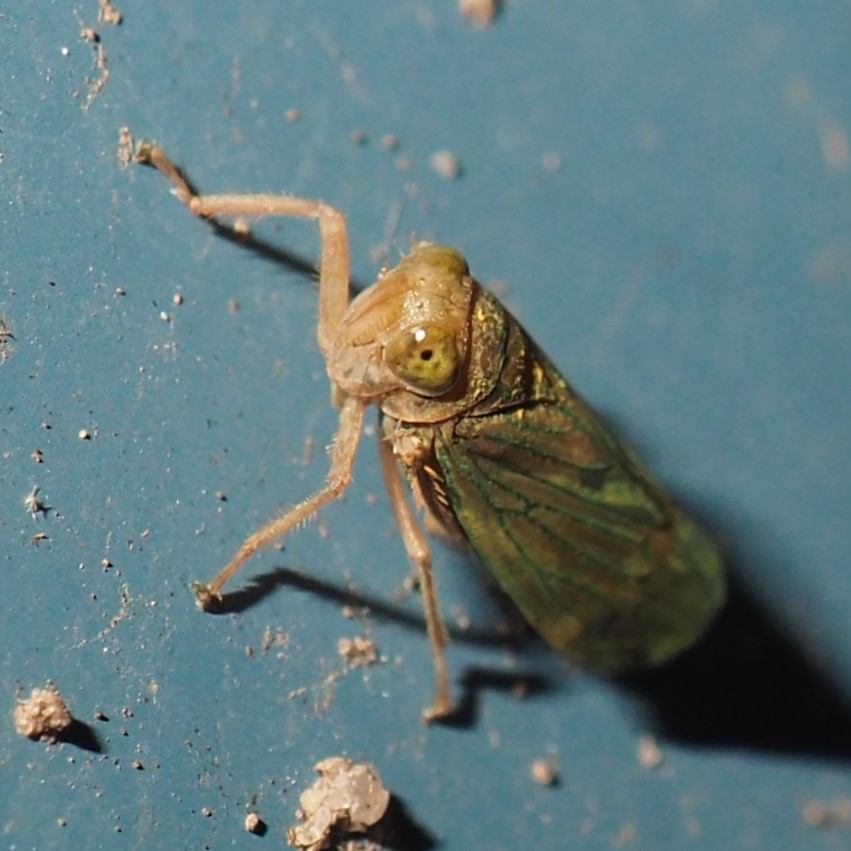
A little bit more on our Two-mark Treehoppers, the ones that inhabit the Redbuds. The other day I saw this adult looking for all the world as if she had laid that egg/egg mass. The leaves on the Redbuds seem to be drying up - their pods are about ripe and I think those trees and saplings will be turning in for the year pretty soon. So I'm not sure when the eggs are likely to hatch. Picture 2 shows a mysterious growth that seems to be coming out of that egg/egg mass. These bugs still are capable of causing much head-scratching!
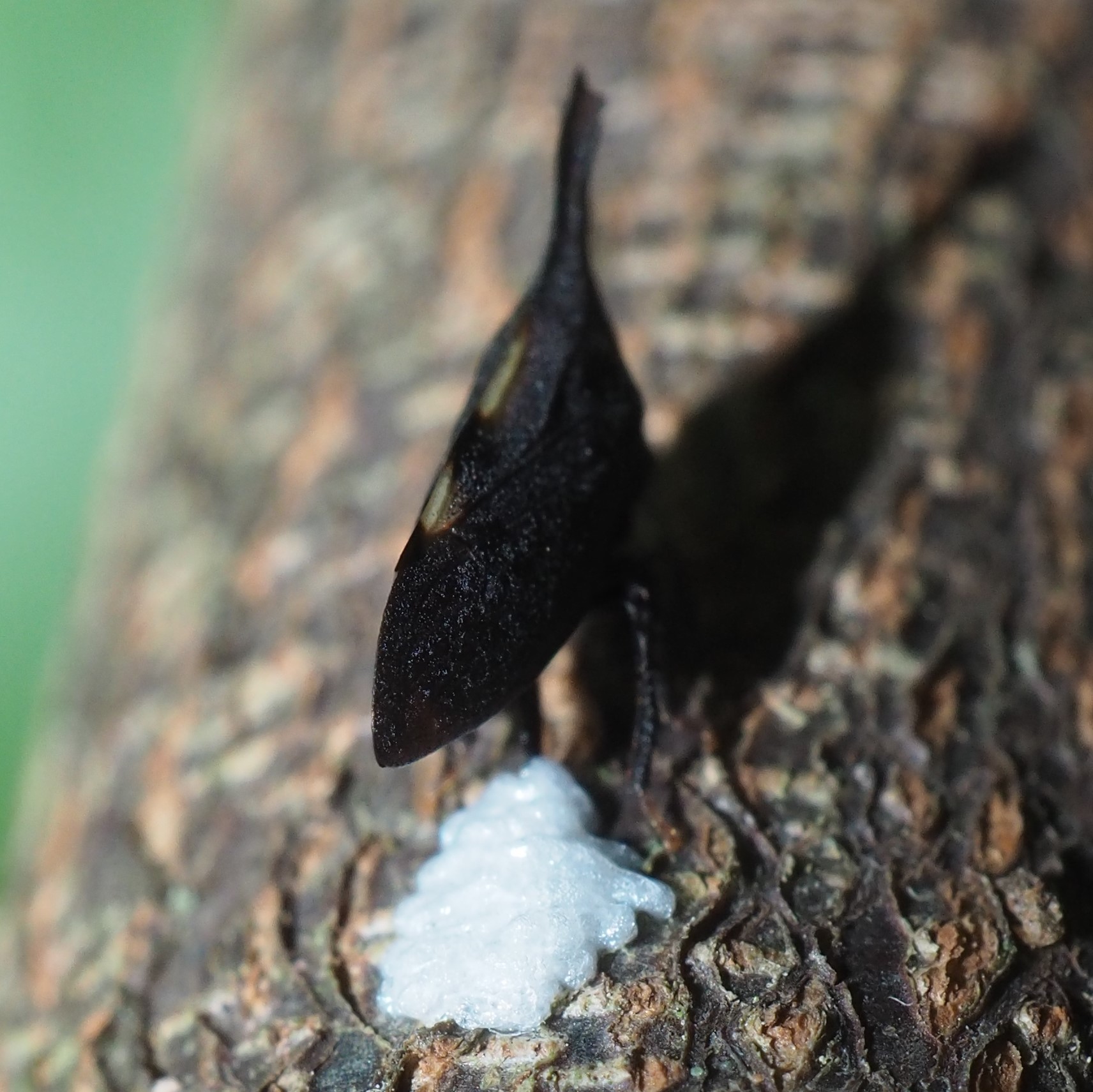

I heard a cricket cricking and saw this one sitting on my neighbors' sedum. It was identified on iNat as a Robust Ground Cricket of genus Allonemobius. Mathematicians, what is All One Mobius? Yesterday I saw something land near my feet, and found this well-camouflaged Grasshopper. No ID yet.
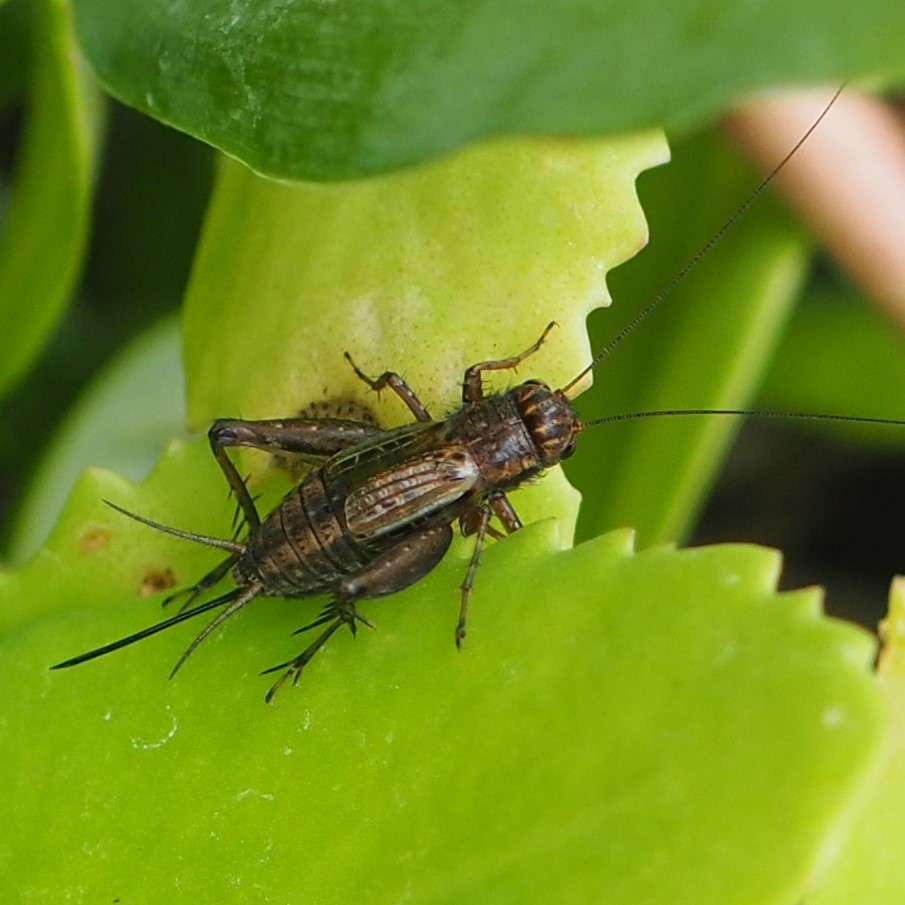
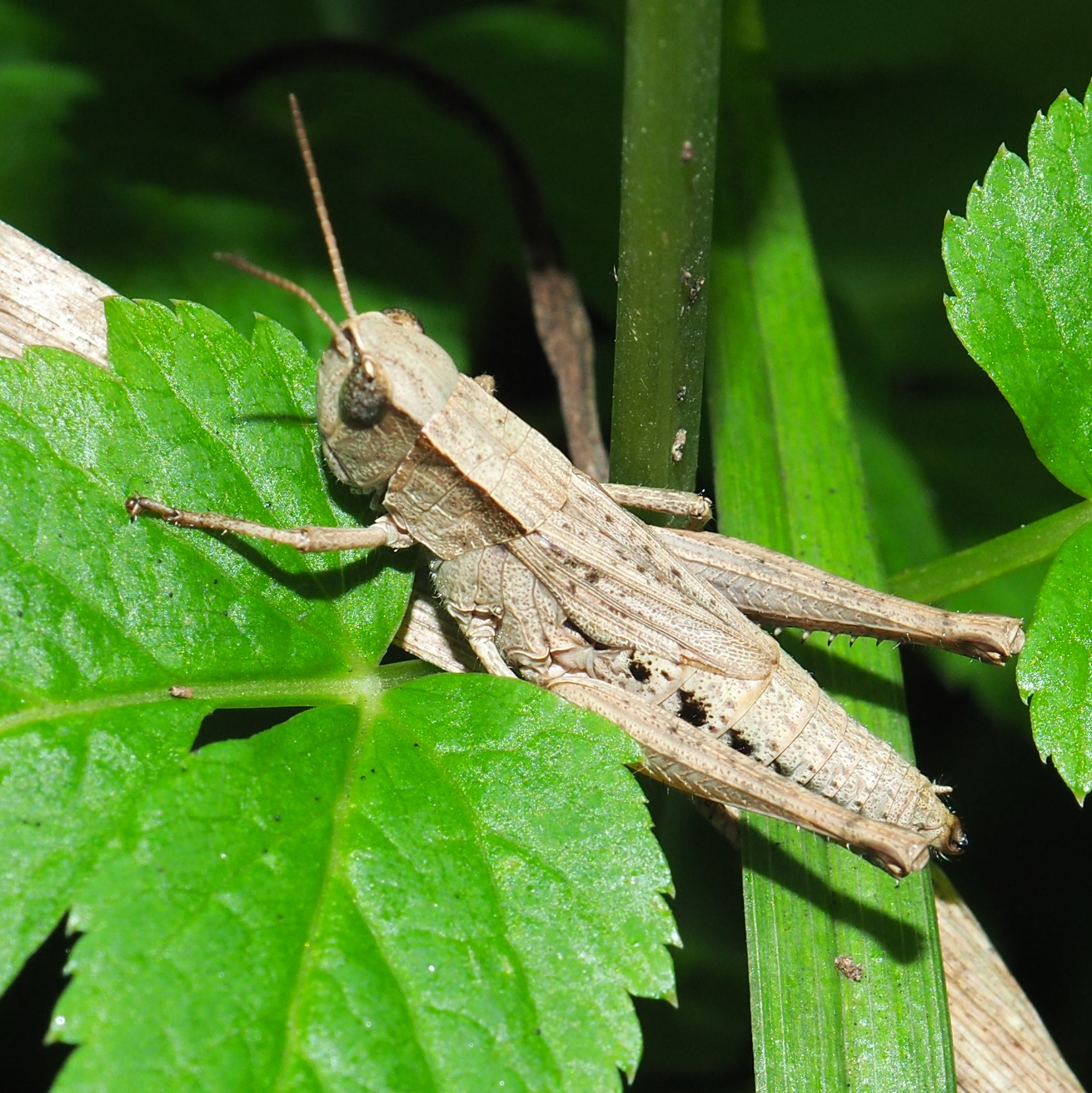
A big surprise yesterday in the pond. I had just fed the fishes lightly and sat down to enjoy watching them eat. Suddenly the two red tortoiseshells were joined by a tiny red fish with little black spots. After a while, I realized that there were a couple more little brown fishes, and then another very tiny little fish (two small to photograph from where I was sitting). So life is coming along for the fishes. I sat there for a while and called "froggy" and finally was rewarded by a view of Froggy.
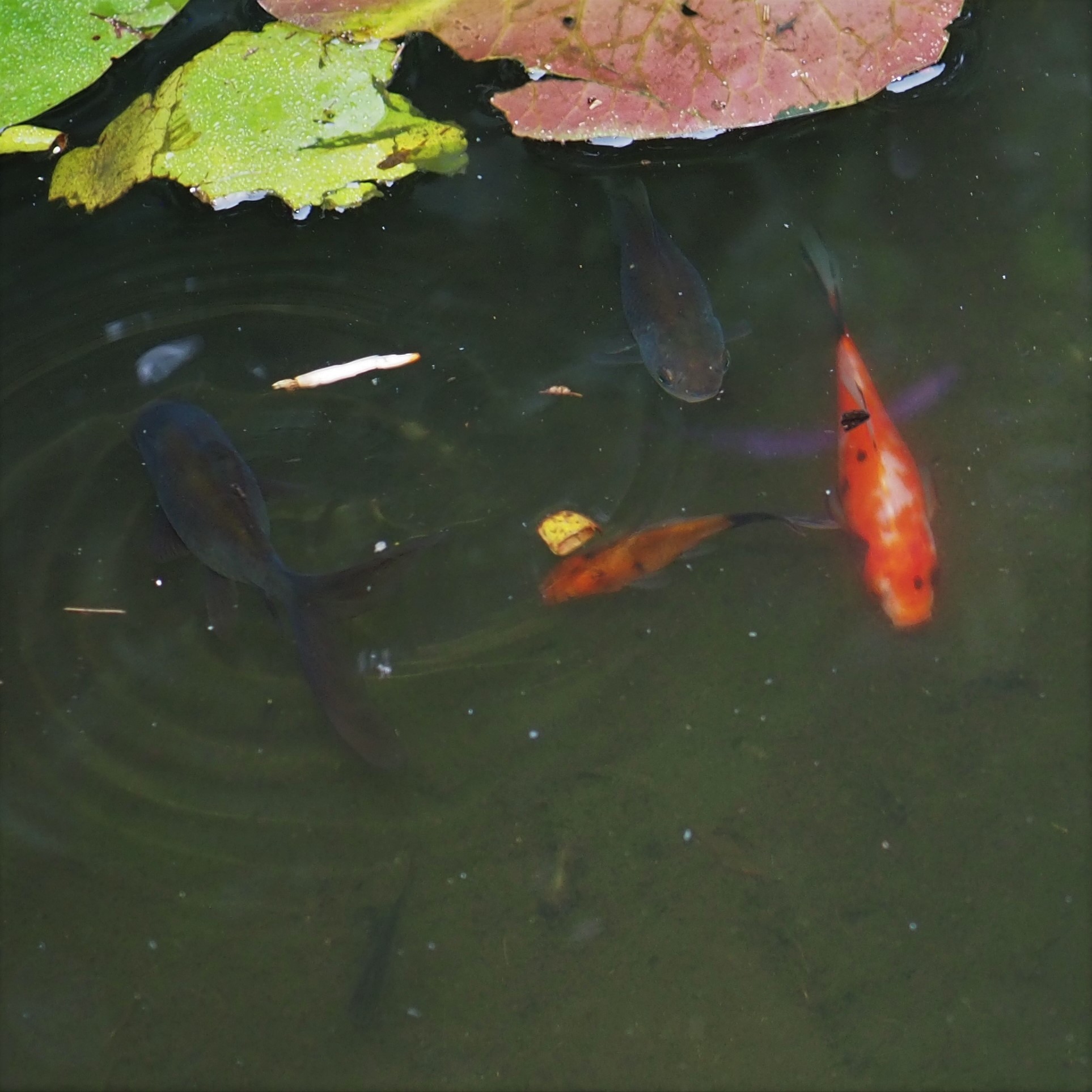
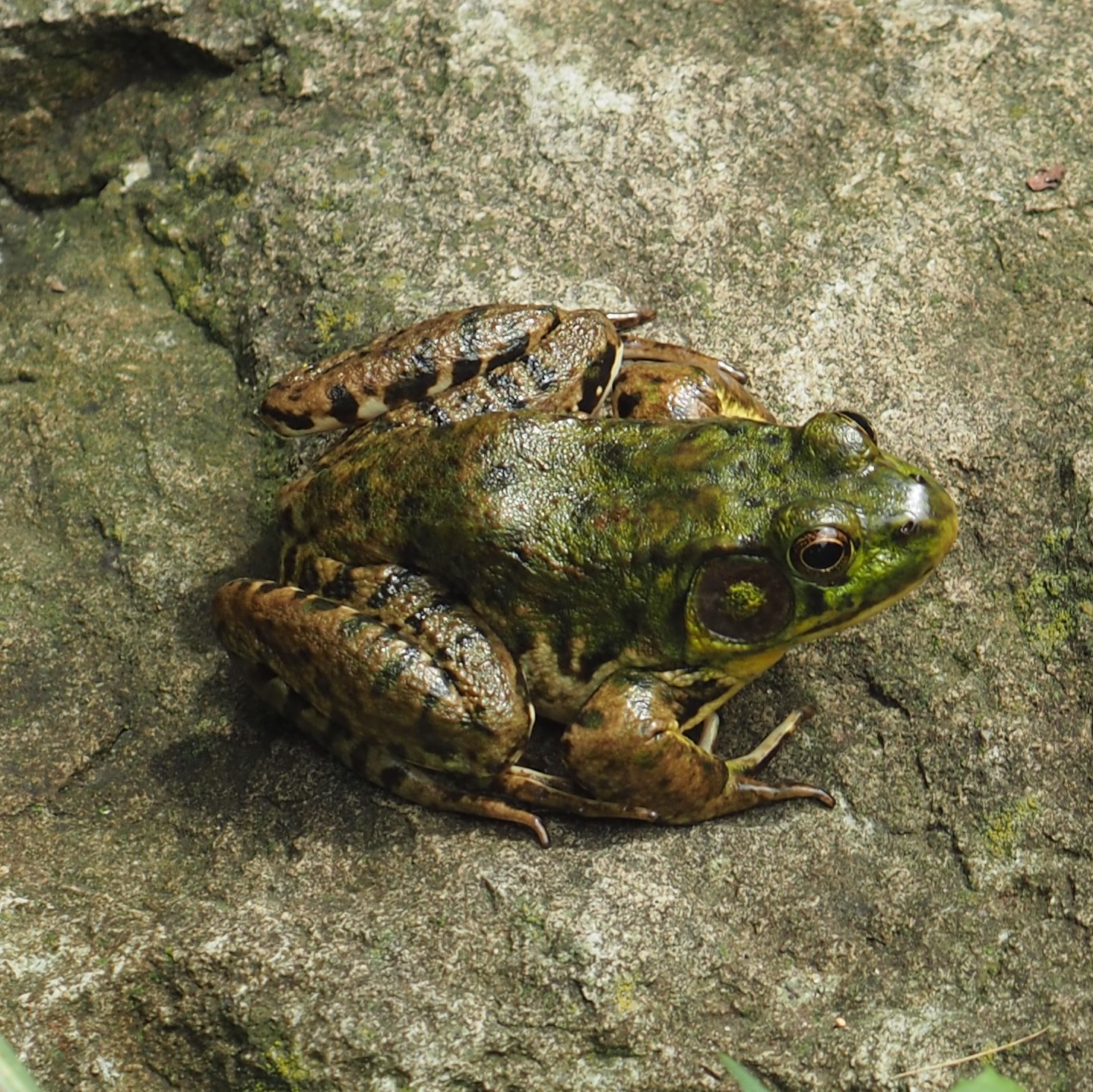
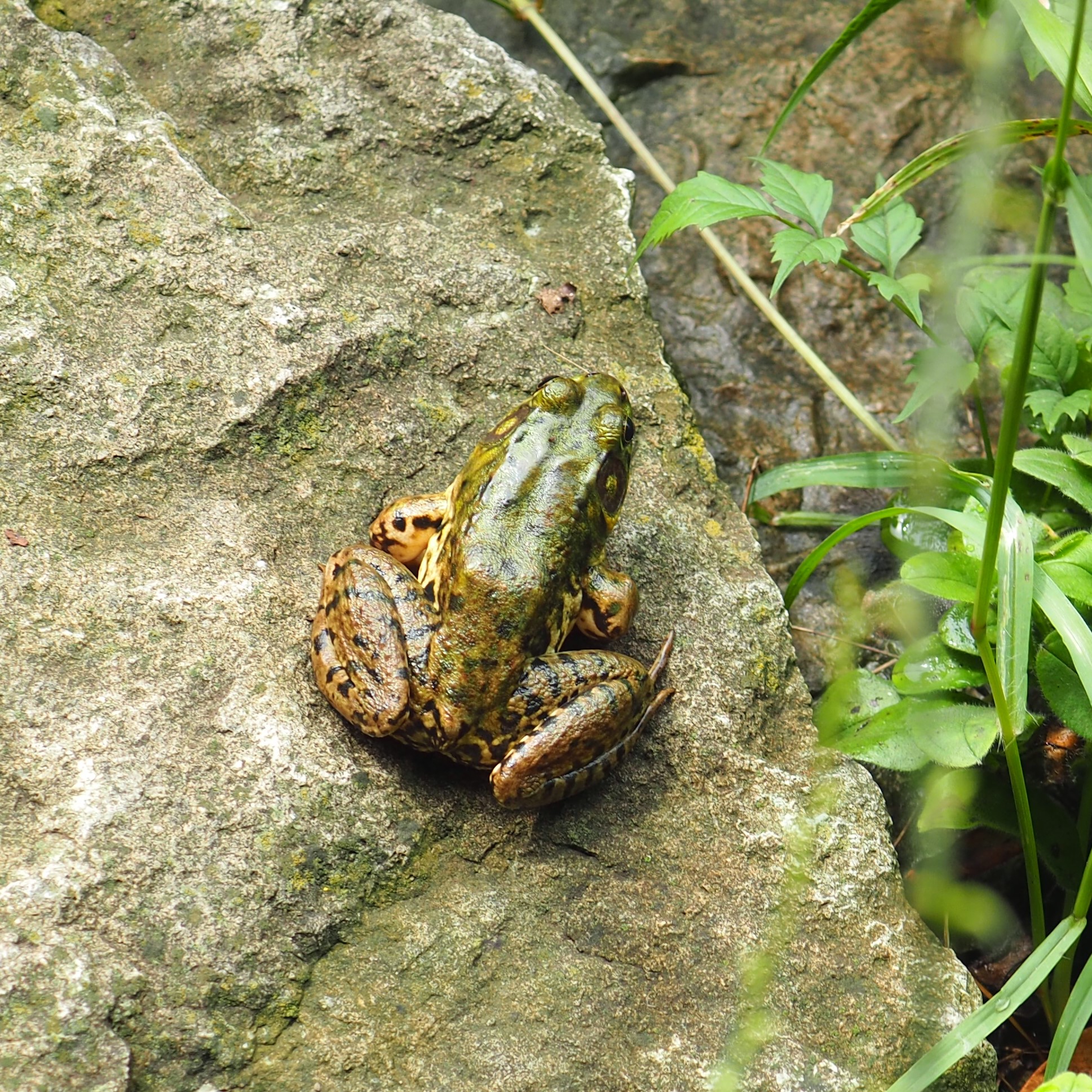
A new Hover Fly settled on the goldenrod yesterday - it turned out to be a Cobalt Hover Fly (Pelecinobaccha costata). We still have the little hover fly Toxomerus geminatus (picture 2). I don't know what the little blue-black fly is on the orange zinnia.
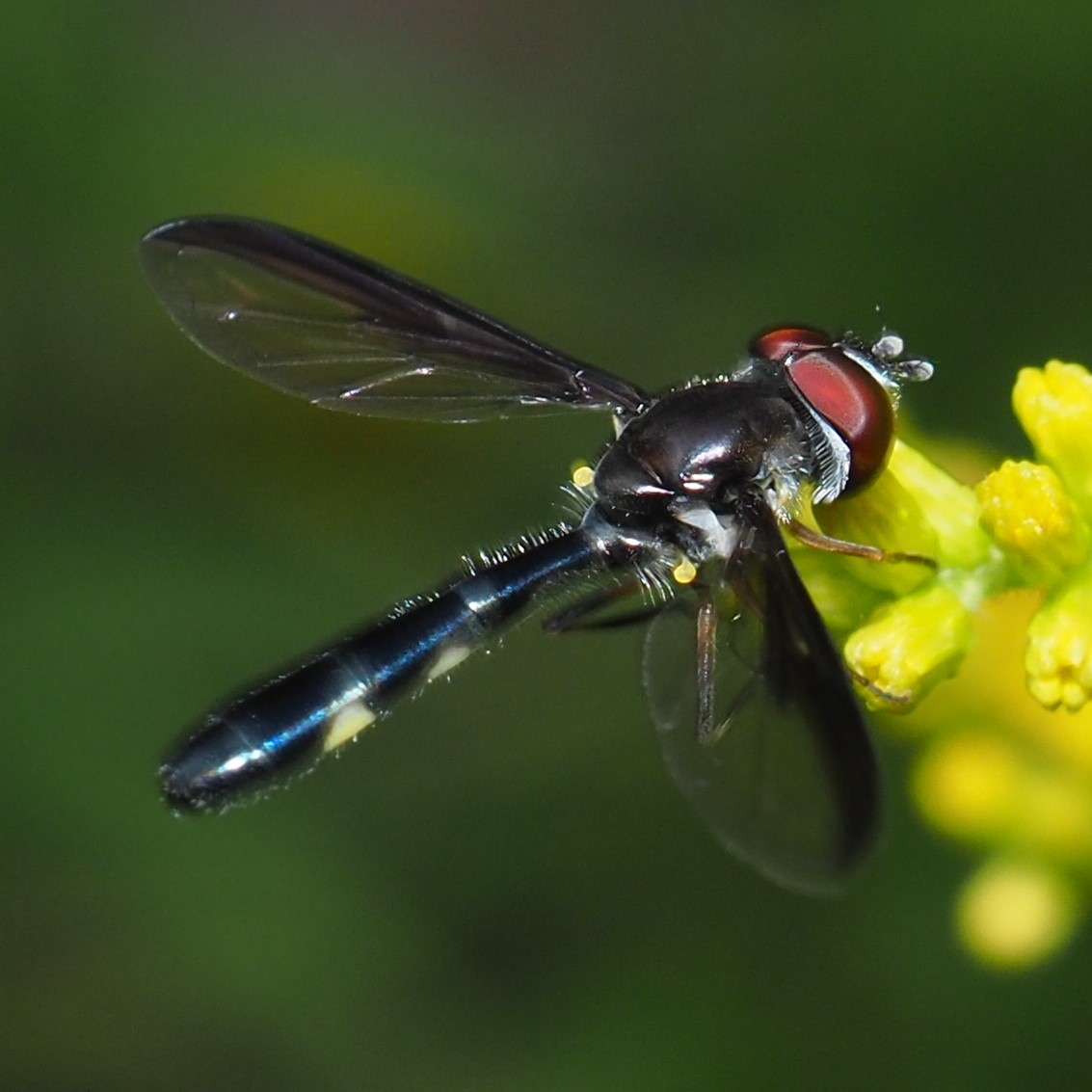
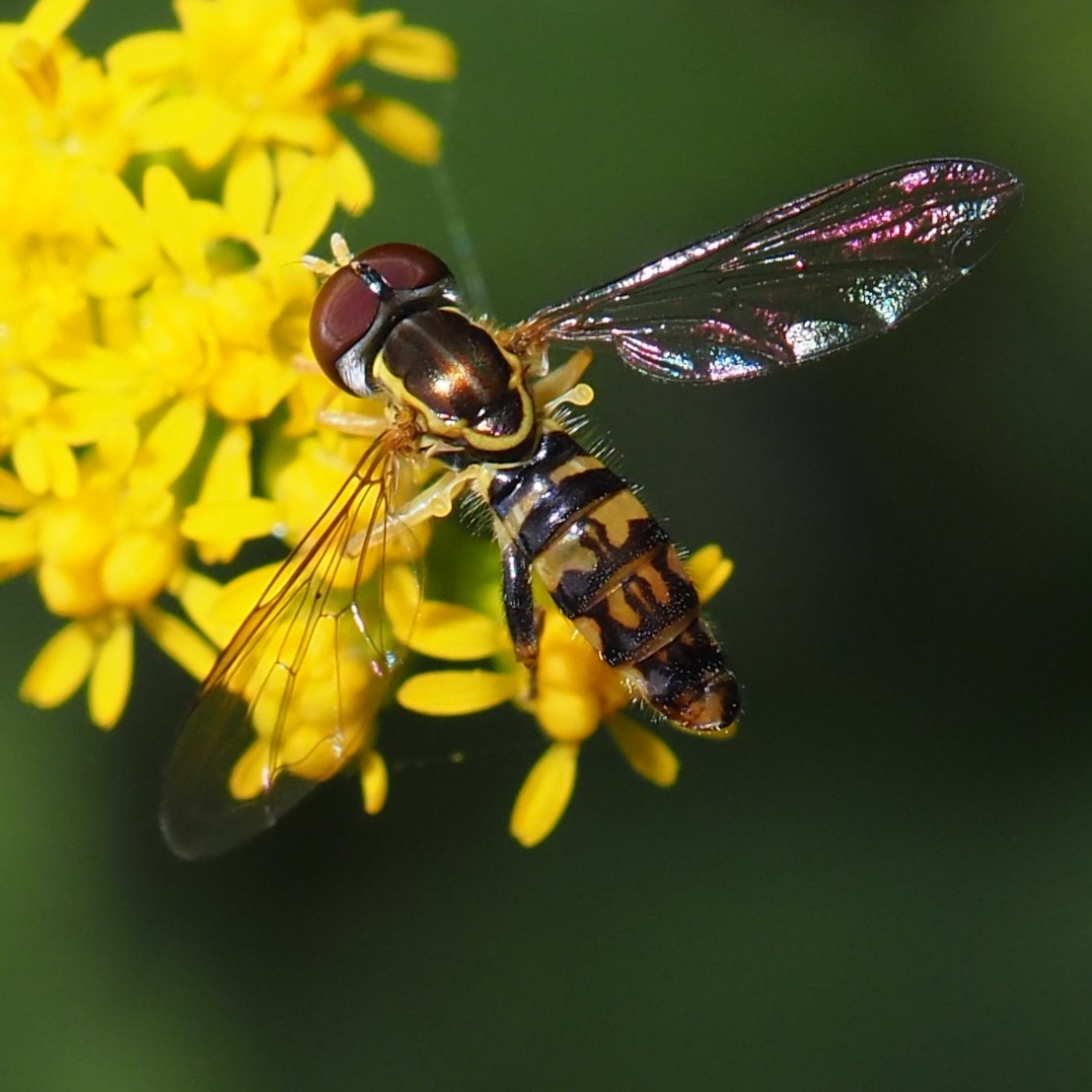
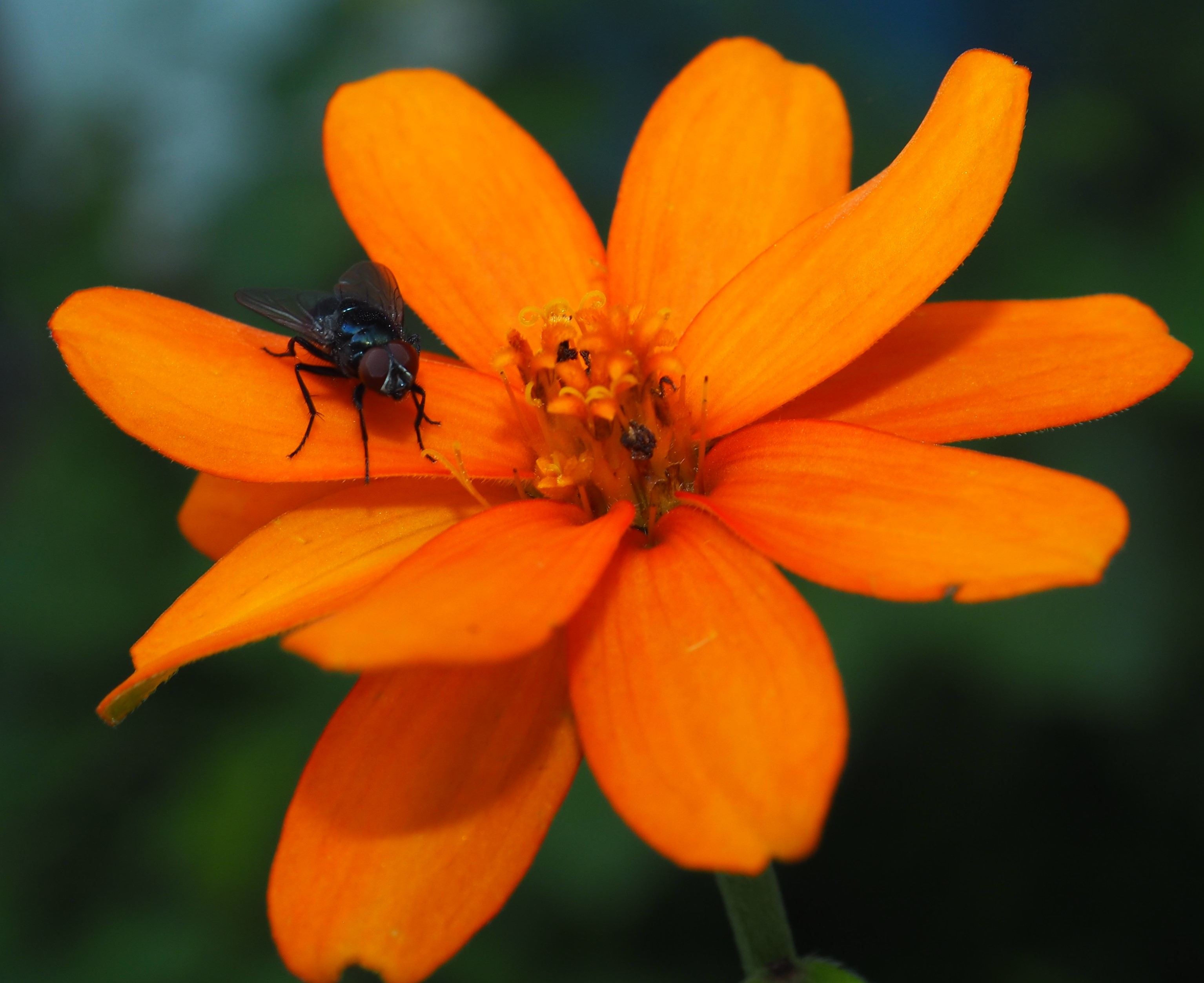
This fly looks a lot like Minettia lupulina, but the abdomen is stripy, not yellow or pink. And here are a brown and a black Moth Fly.
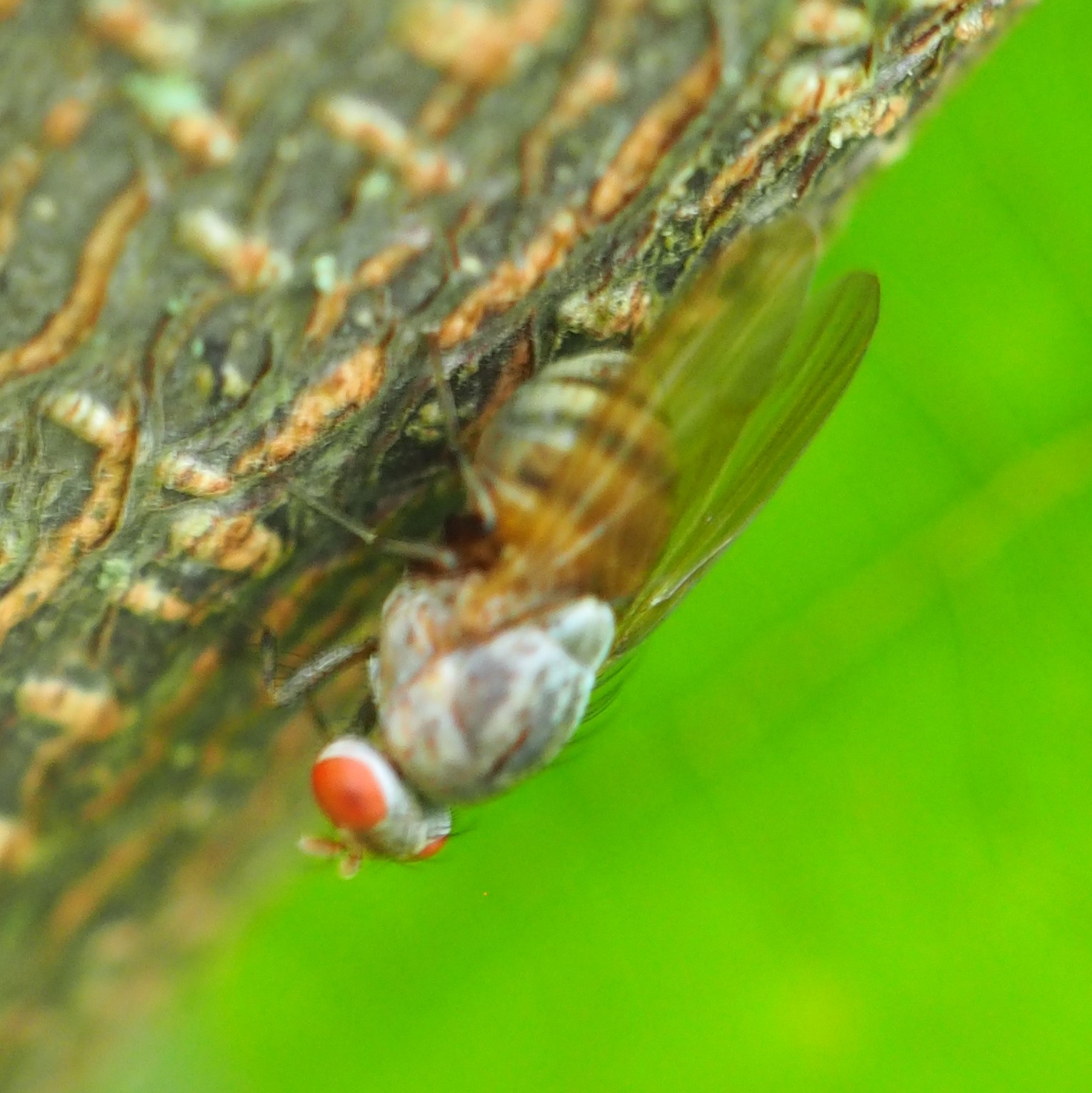


First, a Sarcophagus Fly, which lives on dead bits of other creatures. Second, I believe, is a Hemorrhoidal Sarco Fly, based on its red butt. I'm not sure what the pretty orange fly is.
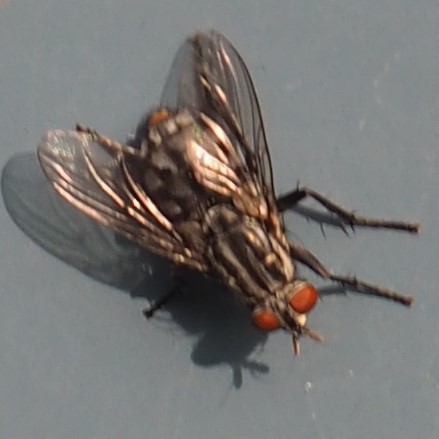

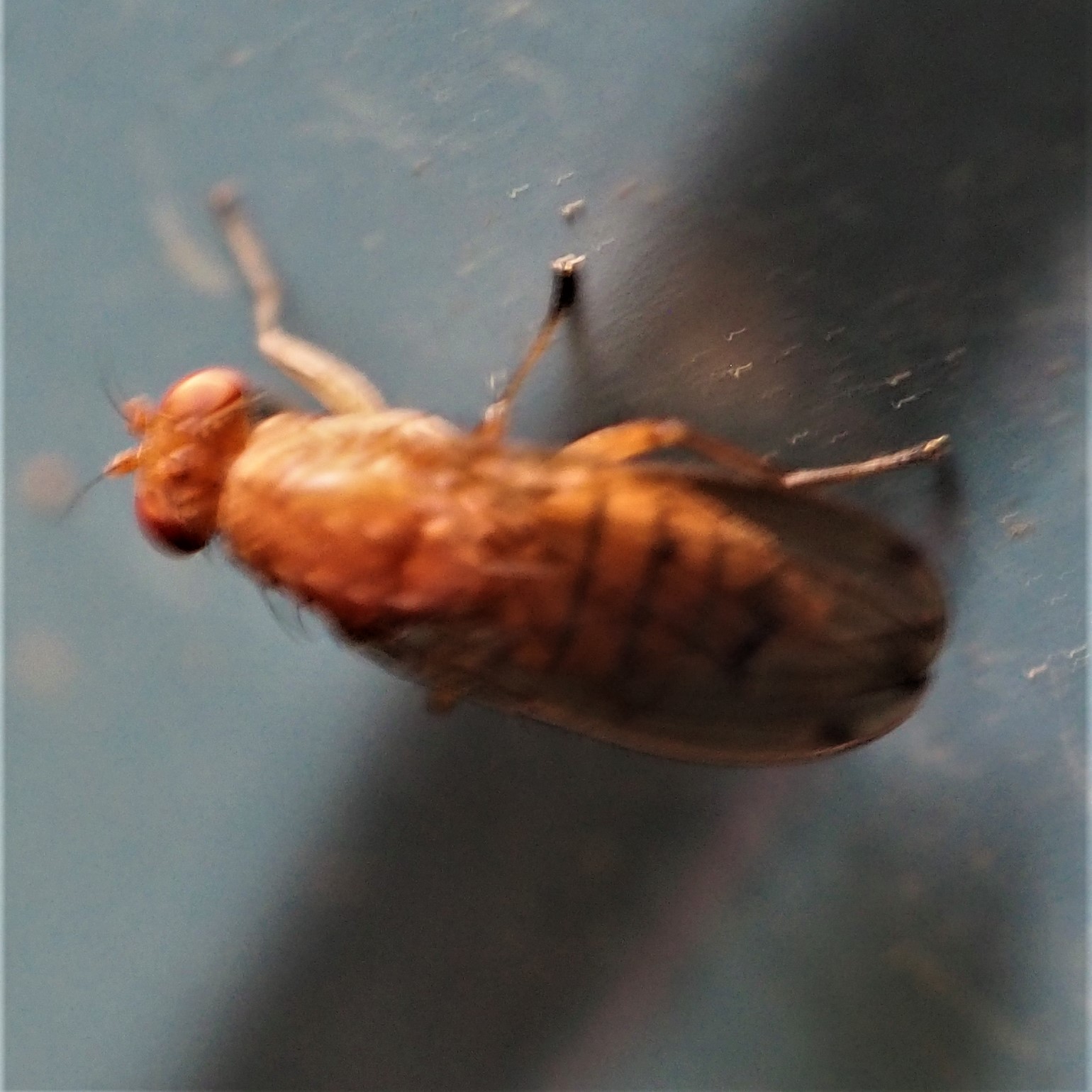
Here is another creature that I never see till Goldenrod season - the Ailanthus Webworm. It's another of the little things that I always think Mother Nature got out her paints to color. Here are also a couple of color morphings.

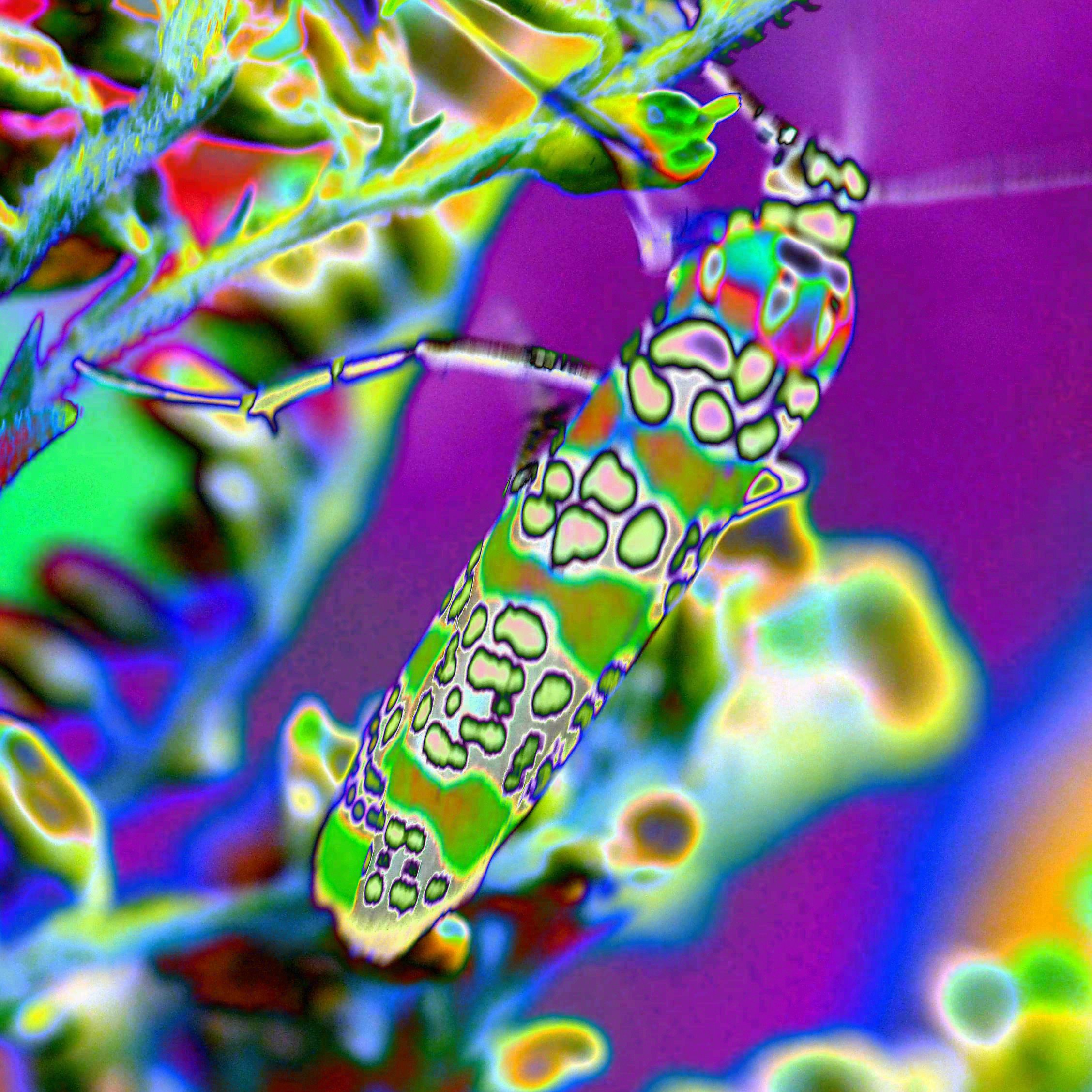
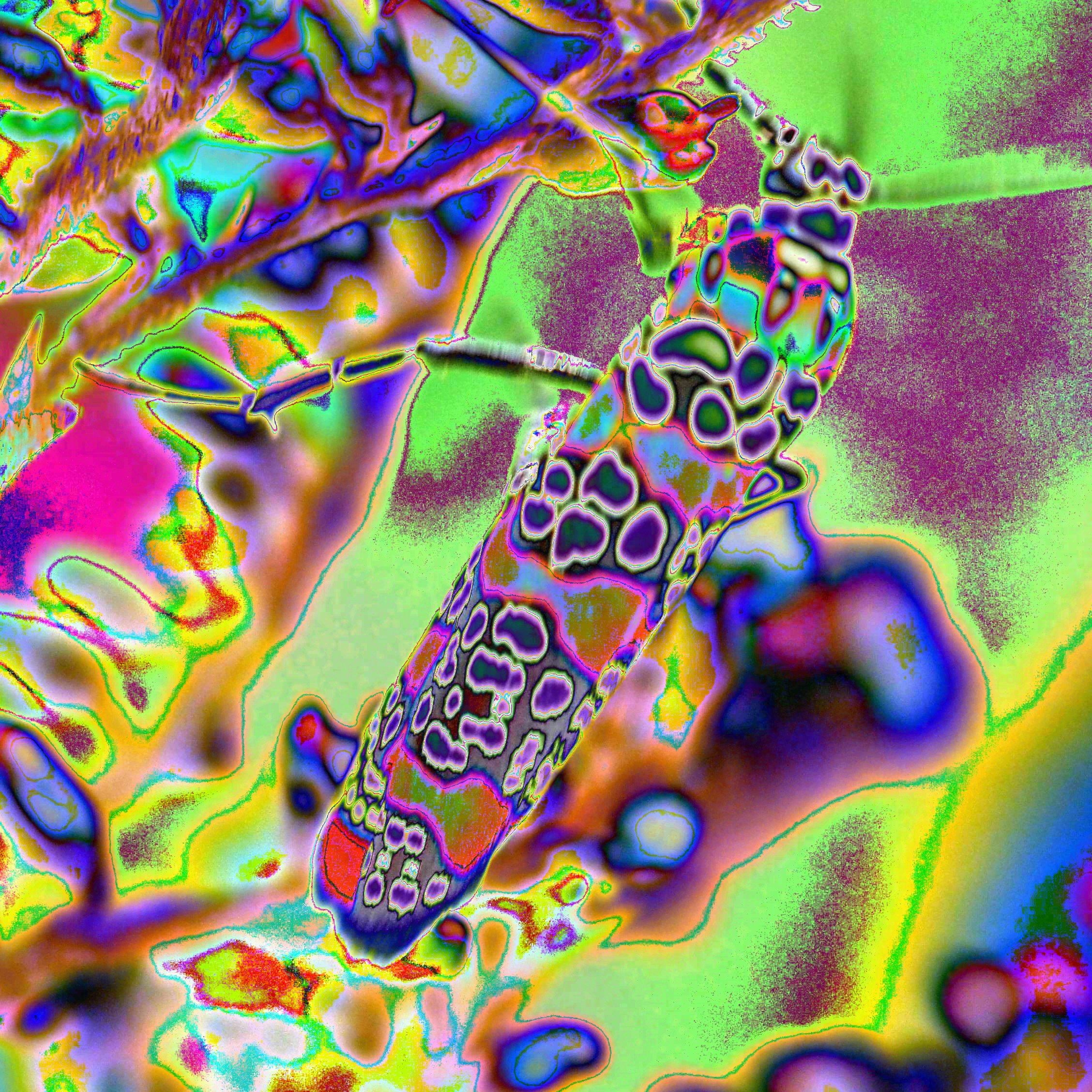
The shop wall was busy with different kinds of little moths.
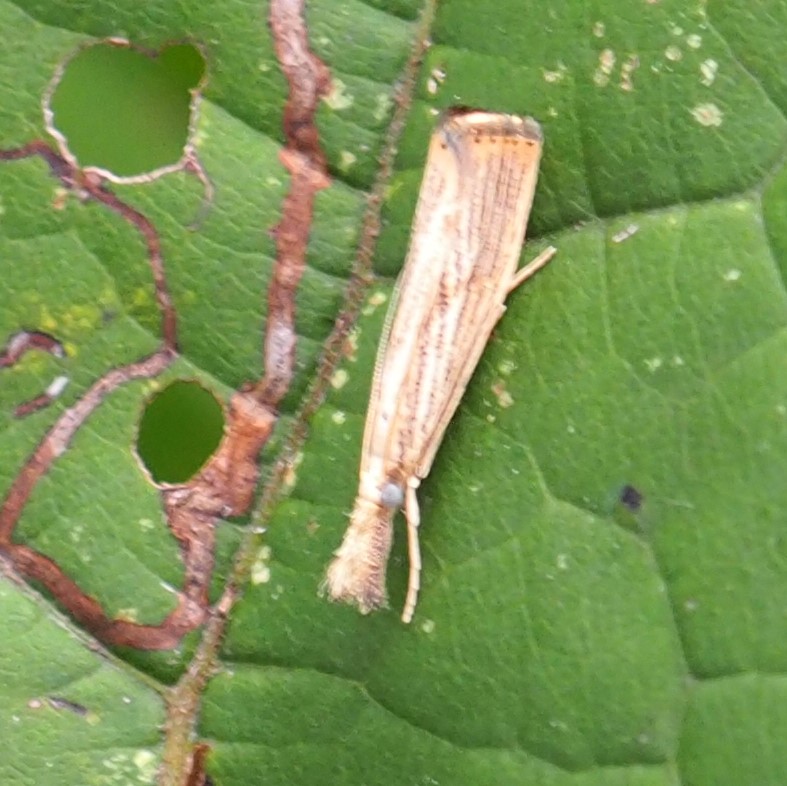
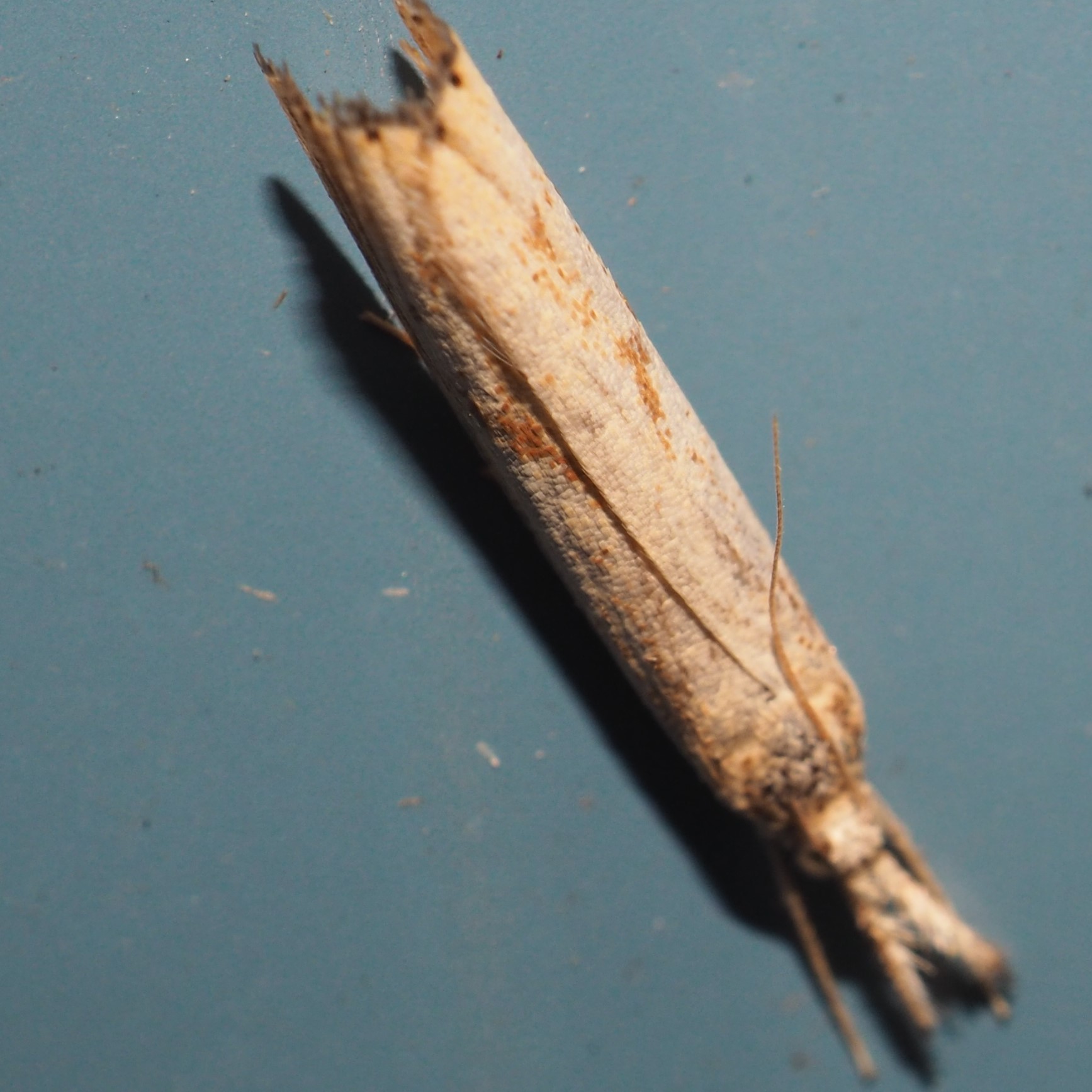
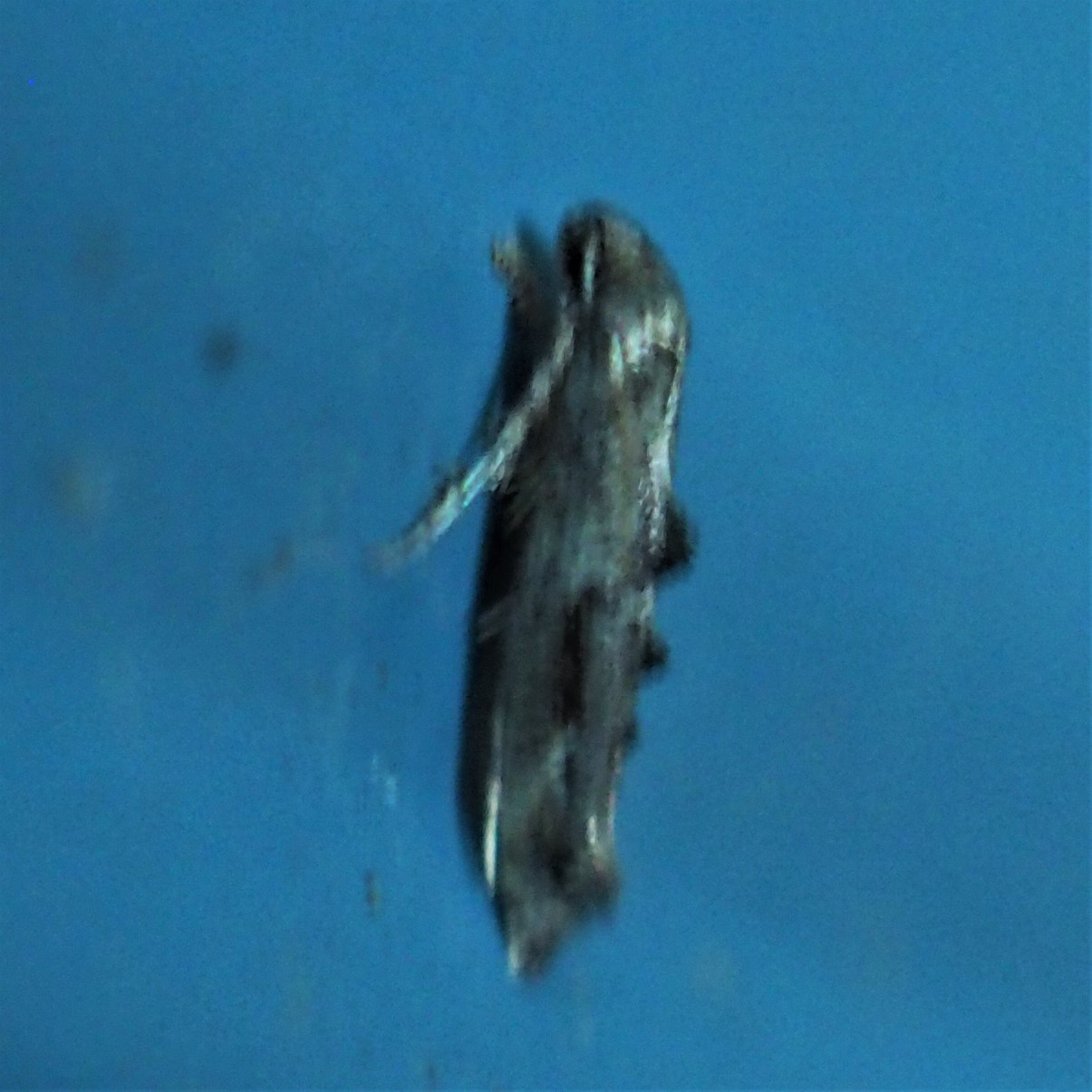
Here are a couple more little moths, a Wooly Bear (the caterpillar of some kind of moth), and a Scorpionfly busily chewing on some prey.
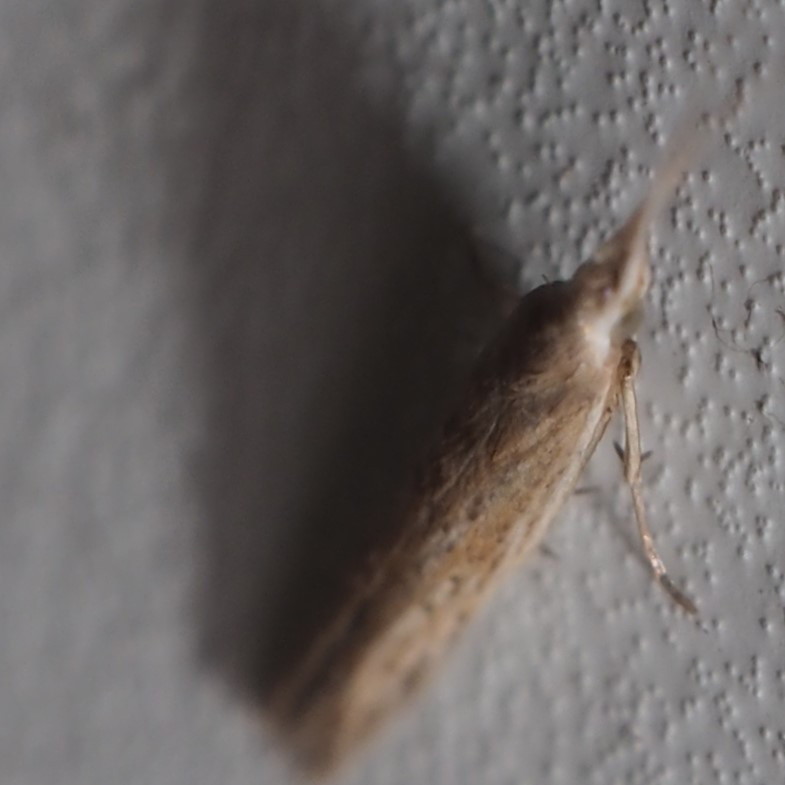
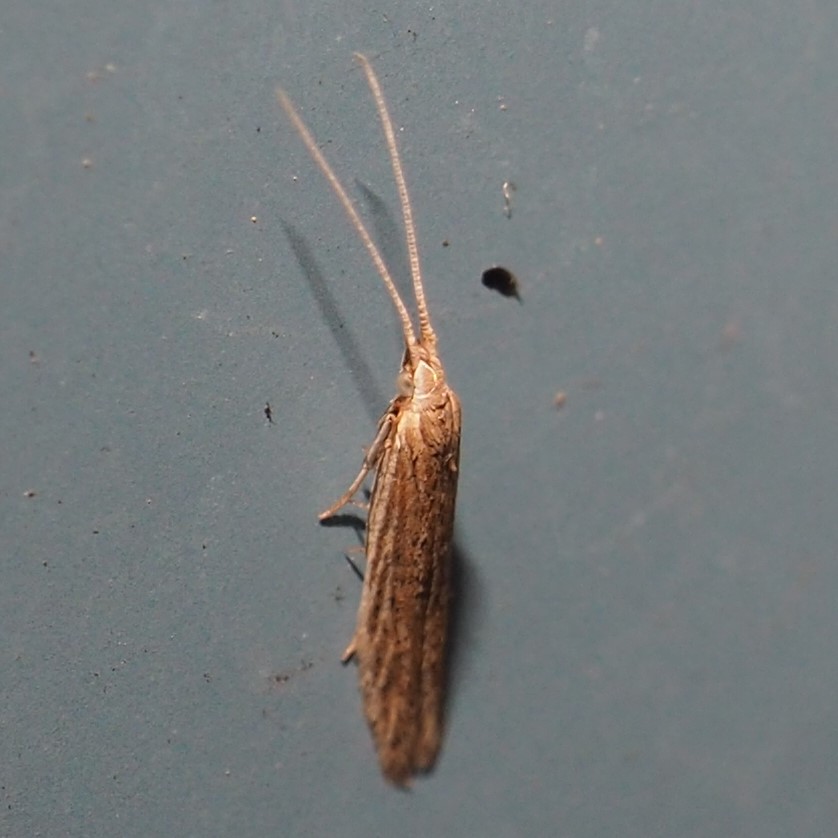

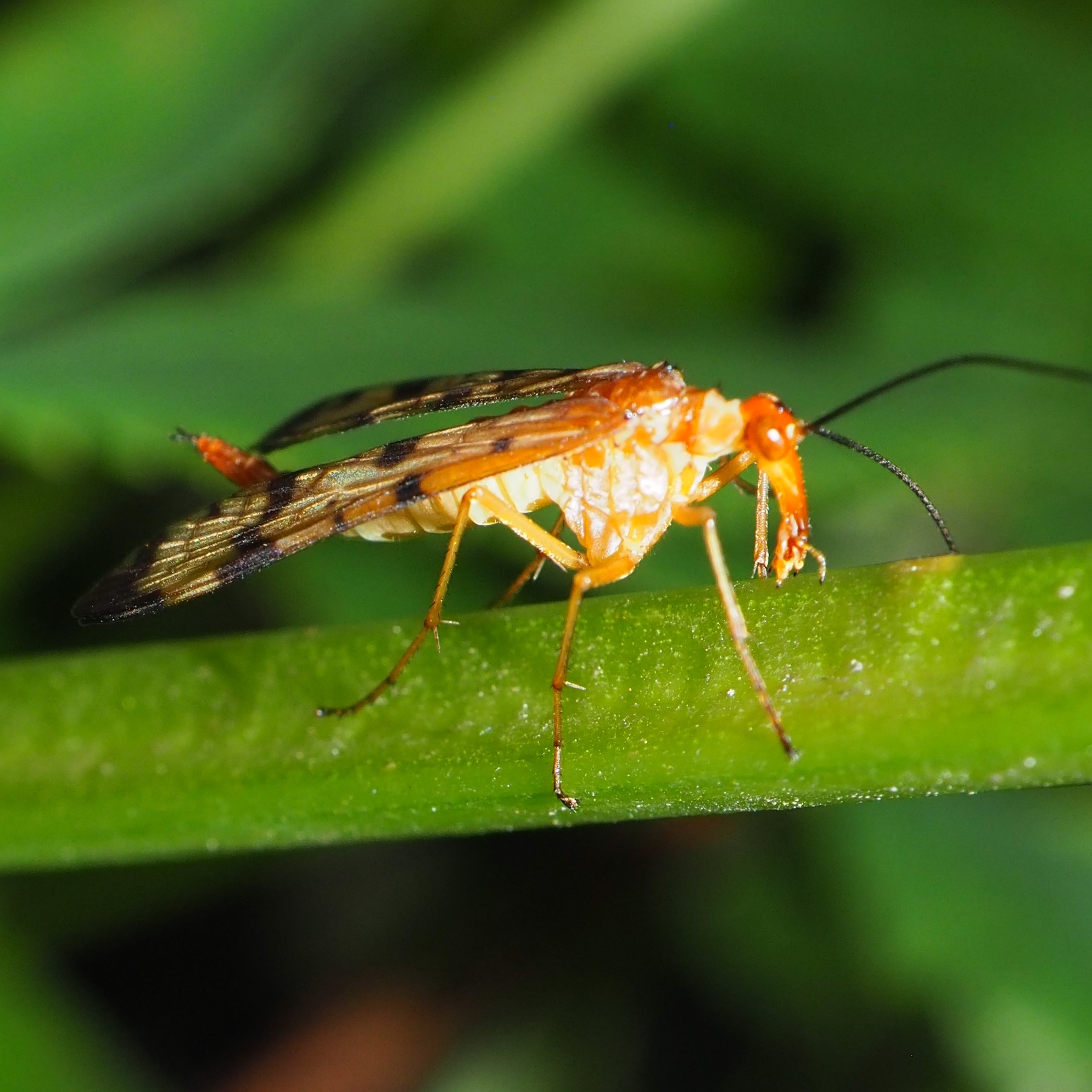
Goodness Gracious, are we up to the Spiders already? Naturally the Common House Spider was the most common. Number two shows a spider that looks like CHS (the Common House Spider) preparing some supper. I had been out for quite a while looking for Crab Spiders, but was disappointed. When I came in and settled down to crop and identify new pictures, I worked for a while and suddenly saw off in the corner of my eye a little yellow-green critter on my pillow. It must have come in on my hair!
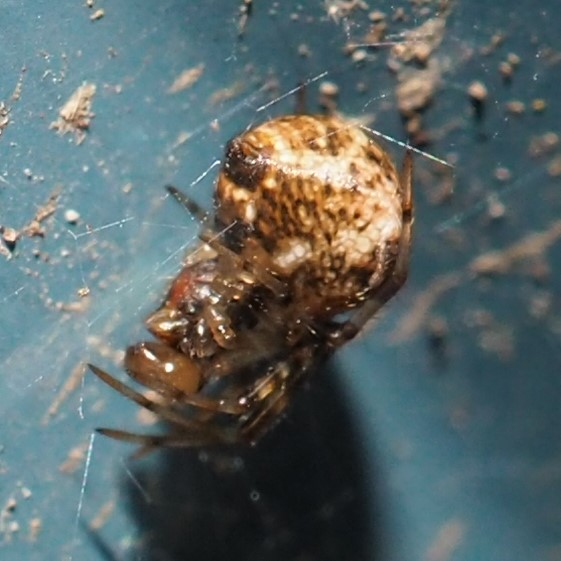

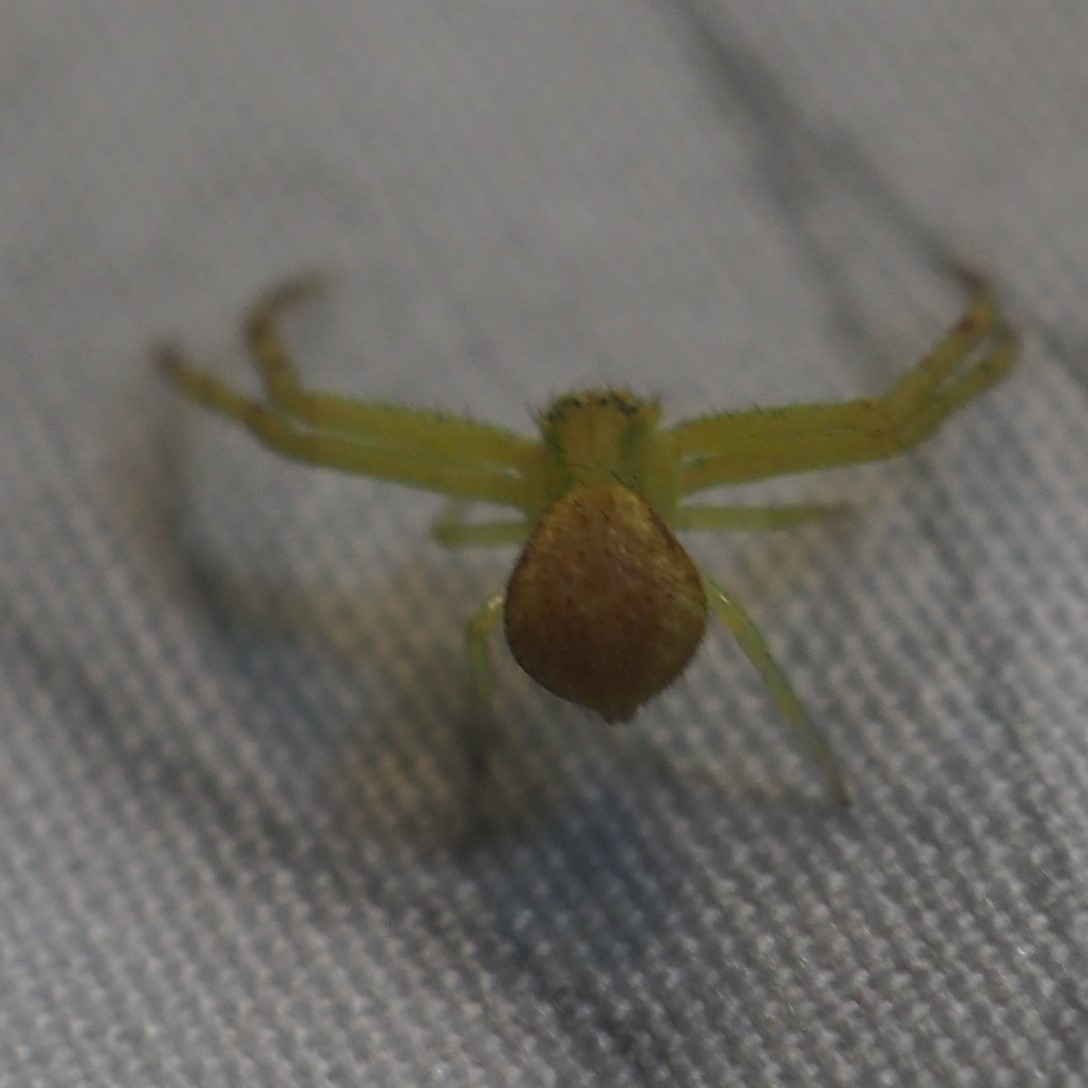
It didn't really want all the attention it was getting. I got up and started shooting it as it ran around on my bed. It got faster and faster, so I scooped it into a pill bottle and popped it into the fridge. After about a quarter-hour, I got it out and let it onto the bed again. It had only slowed down the smallest possible amount. So I re-scooped it and carried it to the bathroom window and let it out onto the ledge. It quickly disappeared over the edge. Now we know crabbers are best photographed on the flowers and don't make good bed buddies. Listen, I hope you aren't learning bad habits from these stories. :-)
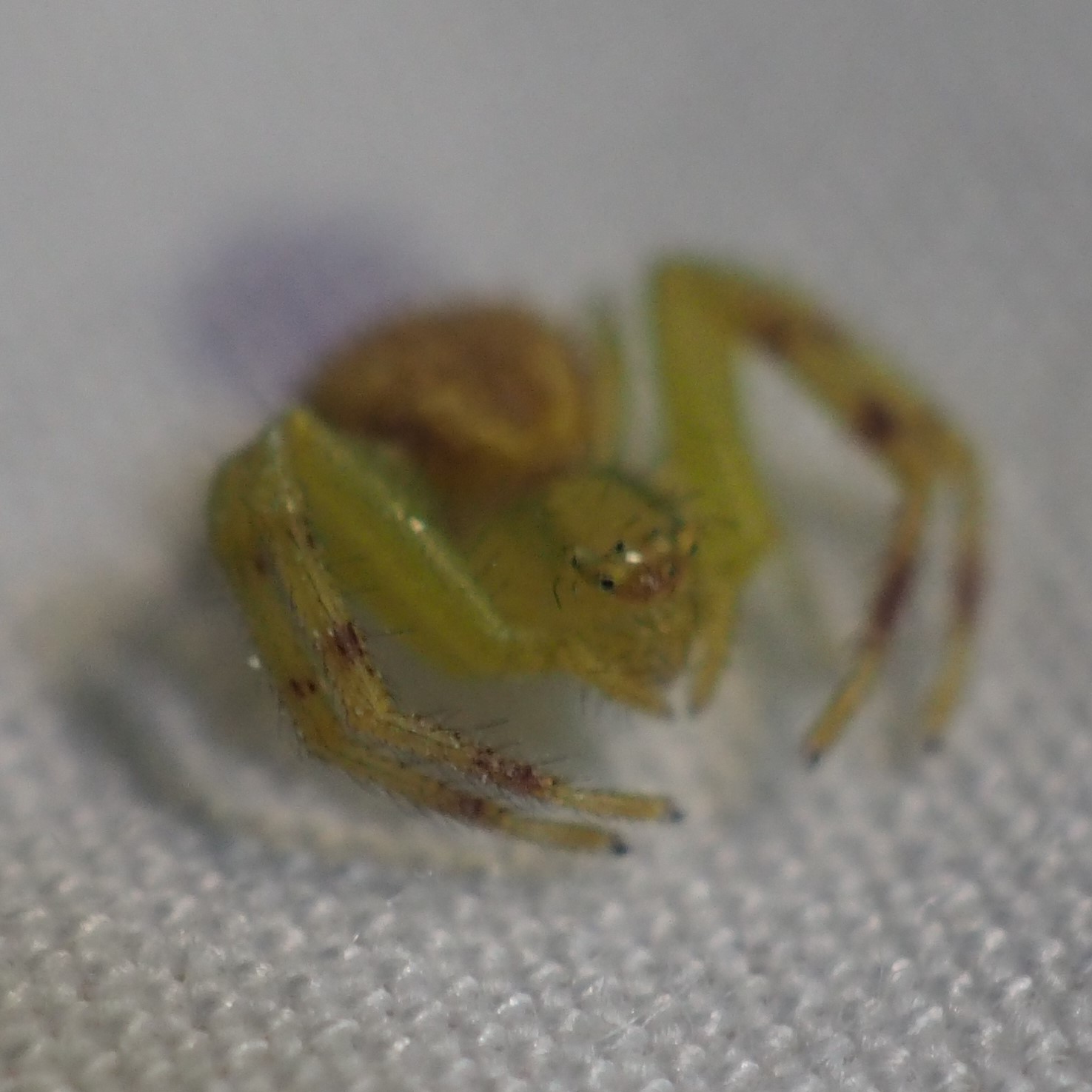
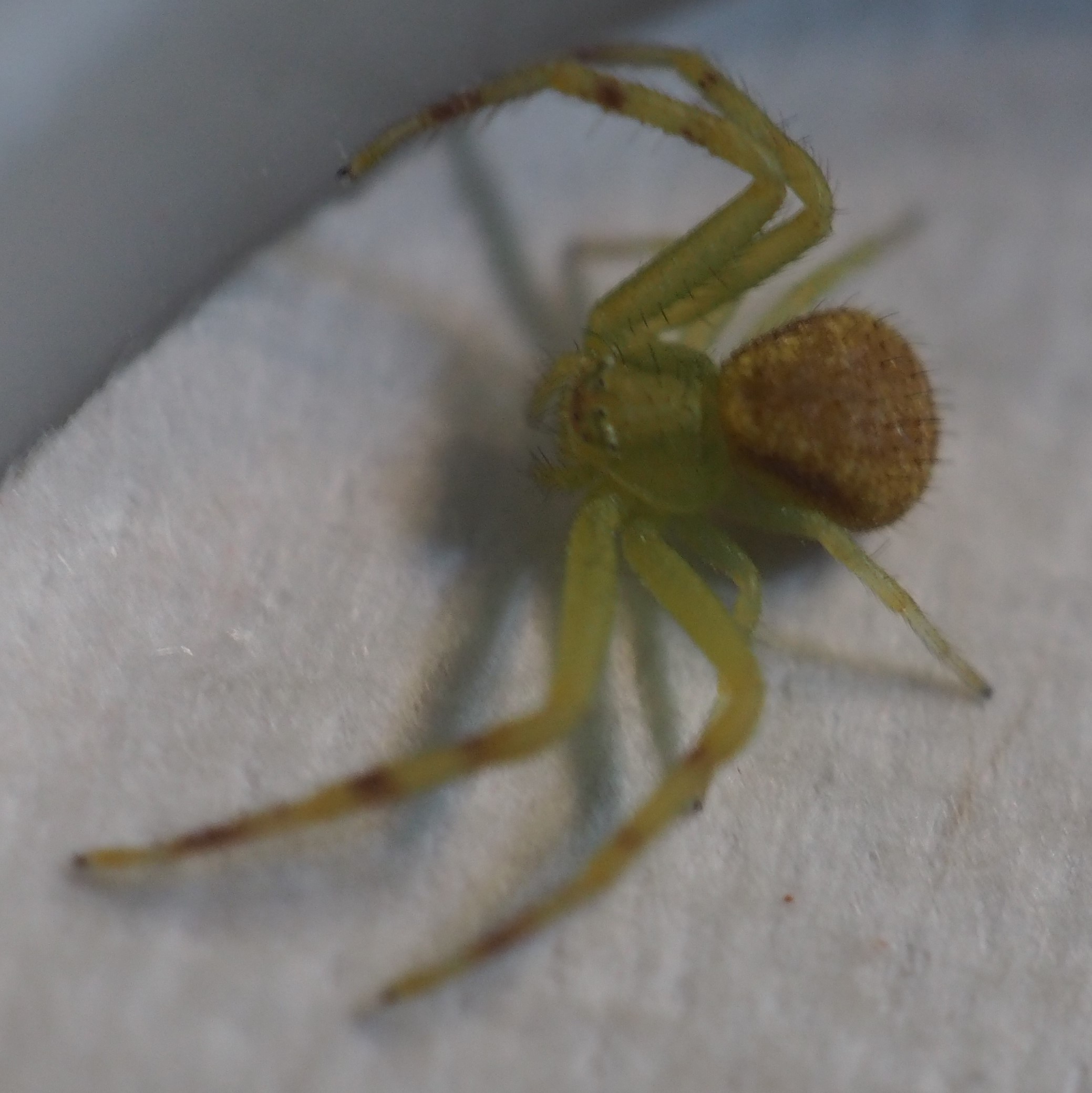
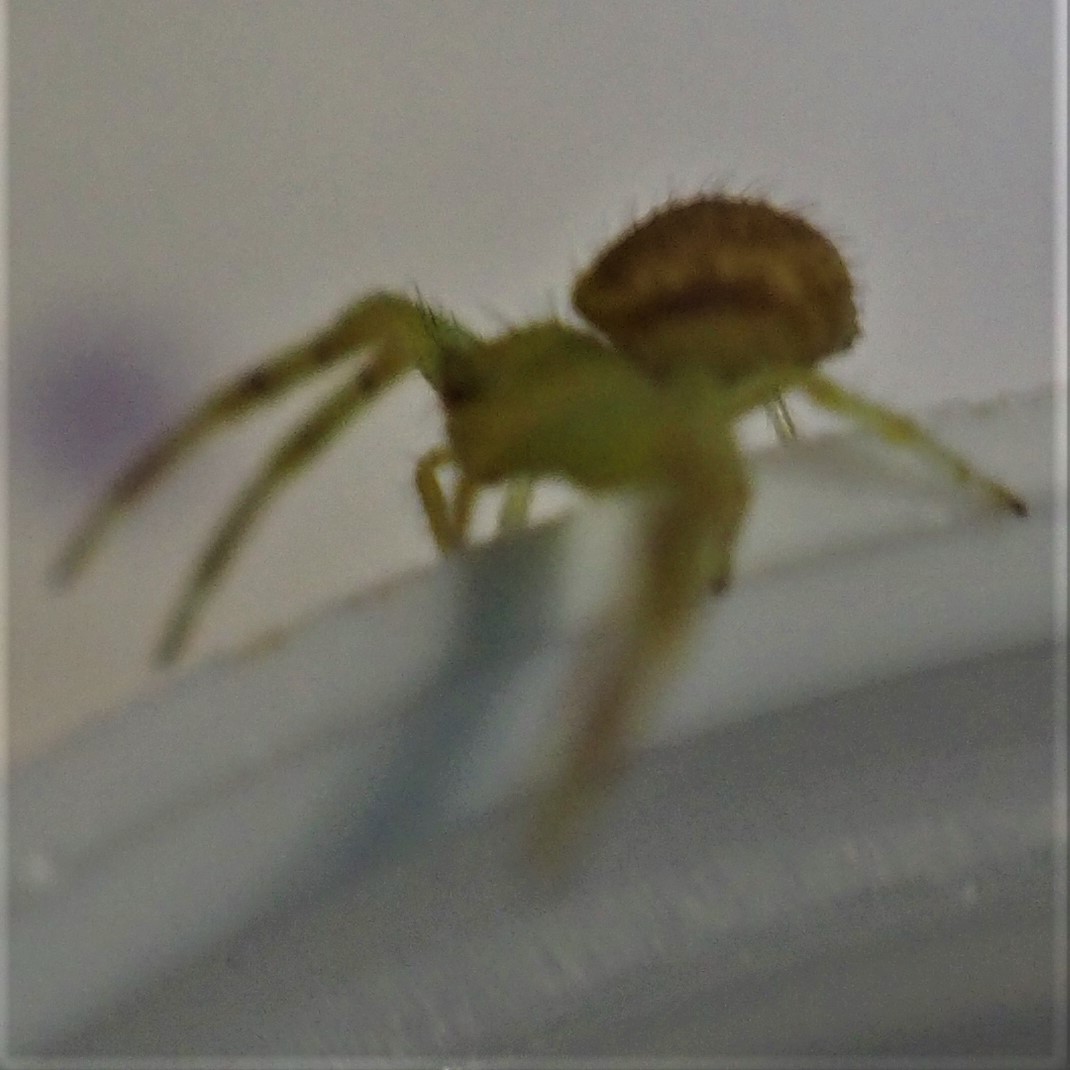
I expect you're disappointed to see so few spiders. But we'll more than make up for them with our wasps. Here's a small bee or wasp, all black. Second is that tiny Potter Wasp, Eumenes fraternus. It really loves the Autumn Joy Sedum, which has finally pinkened up (is there such a word?). Third is another tiny wasp, just about the size of the Potter Wasp.
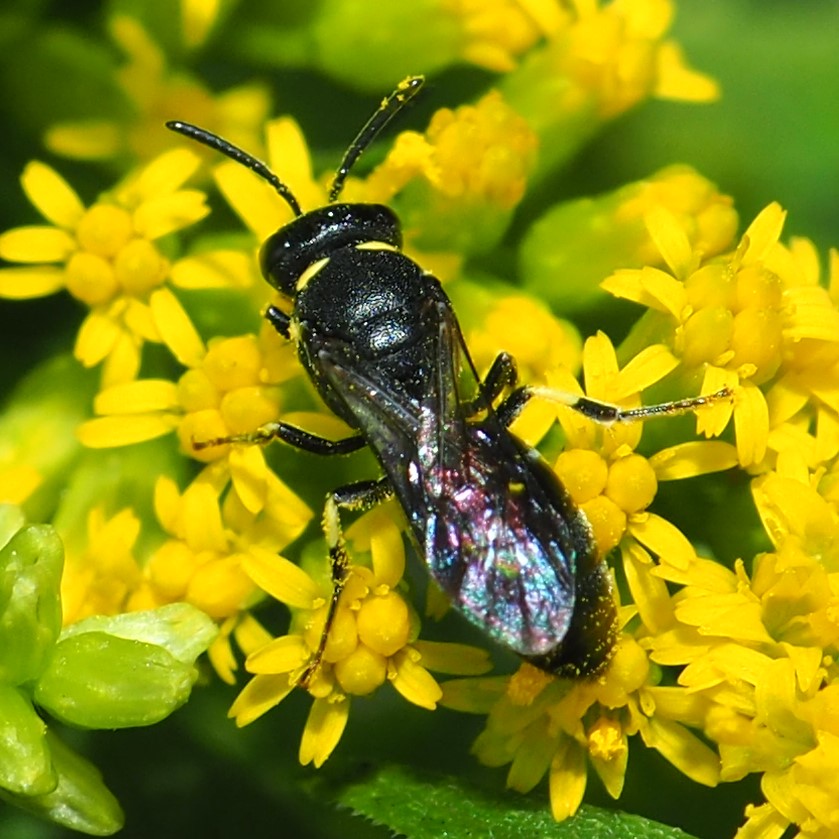

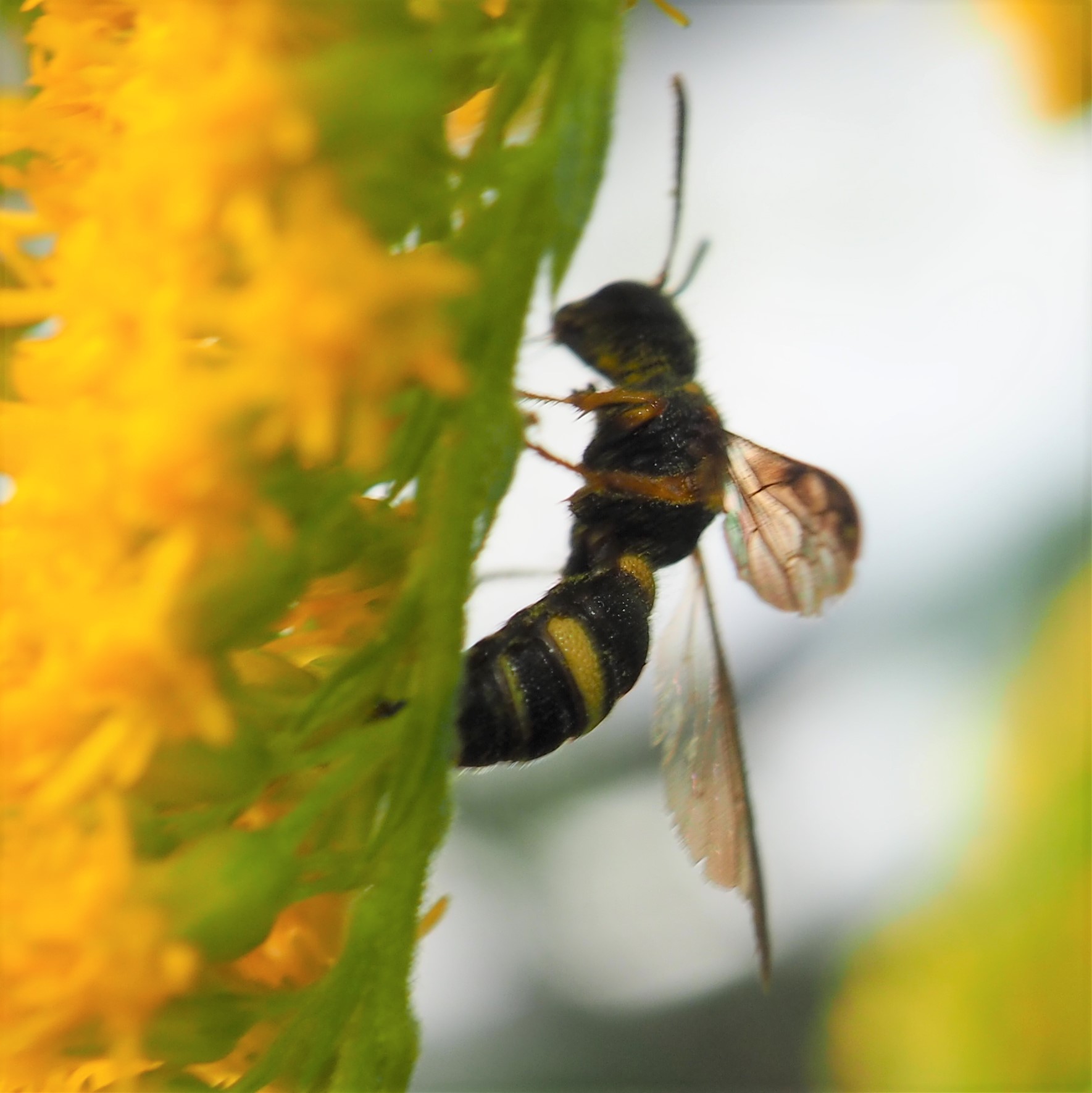
Is this a sweet face or what? To me the big brown eyes seem very human. I believe it is the Common Aerial Yellowjacket, Dolichovespula Arenaria. It is so hard to distinguish it from the Vespula Flavopilosa, the Downy Yellowjacket. Both of them are covered in soft down. The Downy has down a bit yellower while the Aerial's down is a bit darker. The faces are the best way to distinguish them.
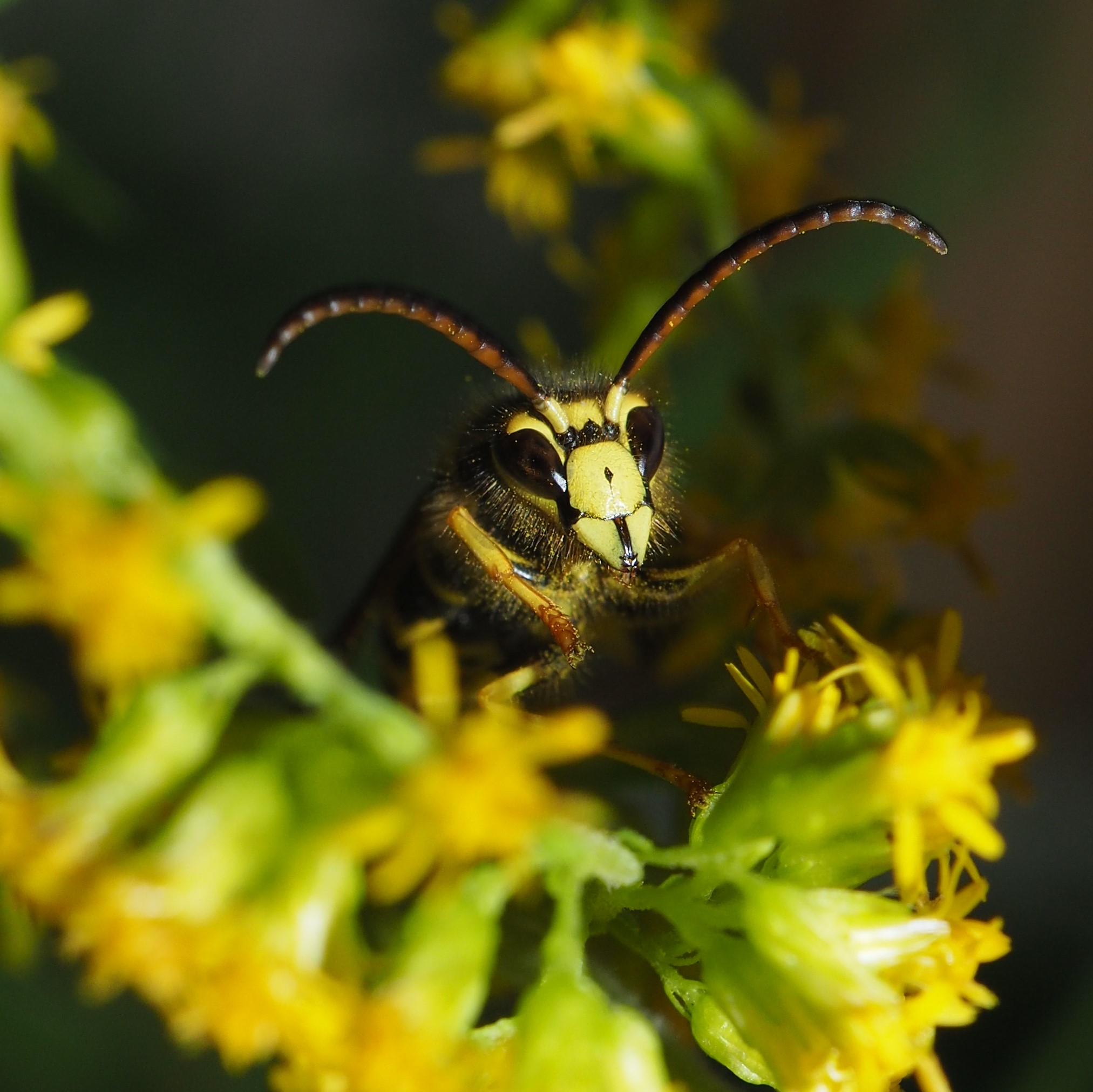
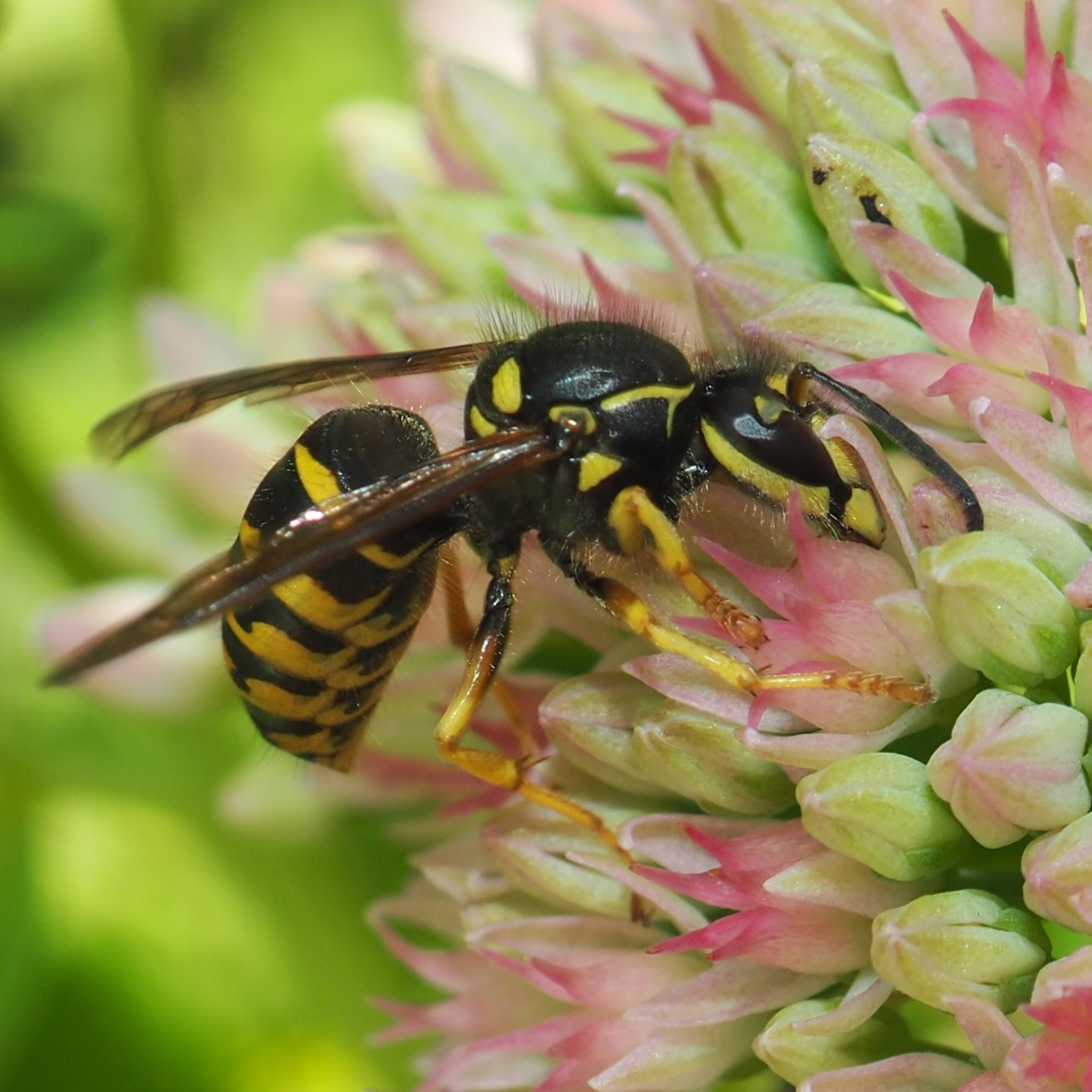
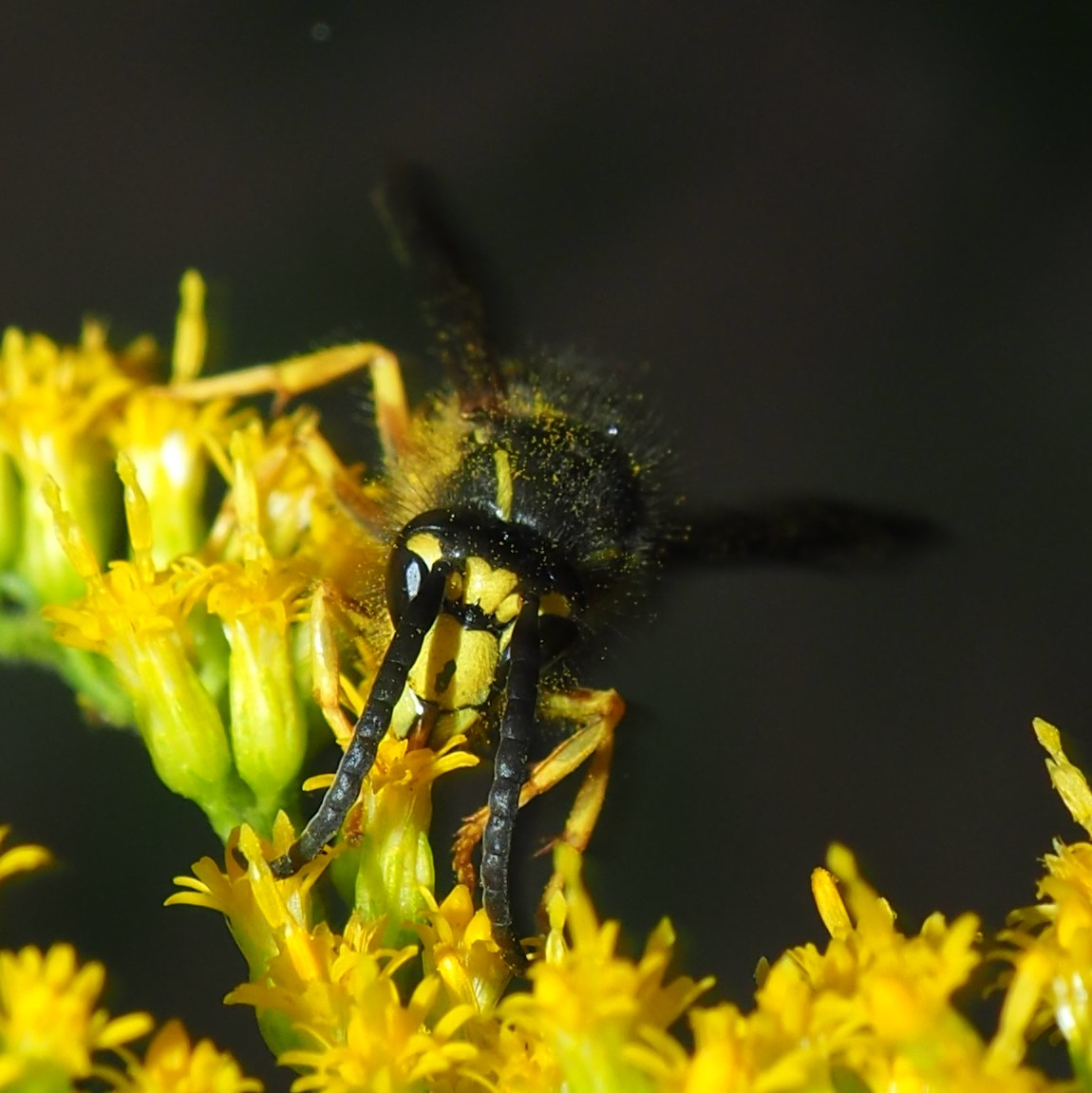
Those Oak Galls are amazing! The Bald-faced Hornets just can't seem to get enough of the galls. Sometimes one and sometimes two of the hornets nibbling on the delicious galls. To think that for years they have frustrated my attempts to get a clear picture, especially of the face.

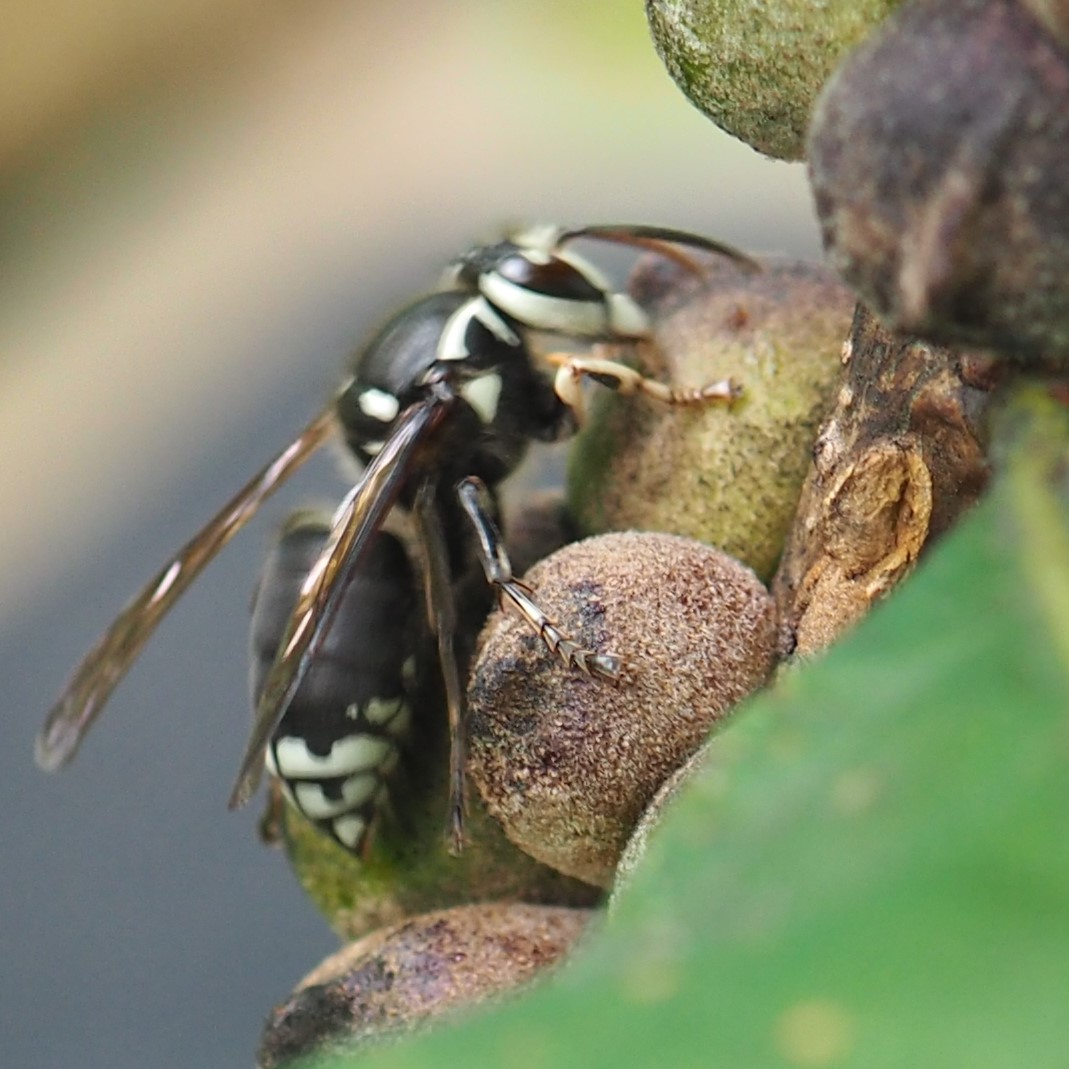
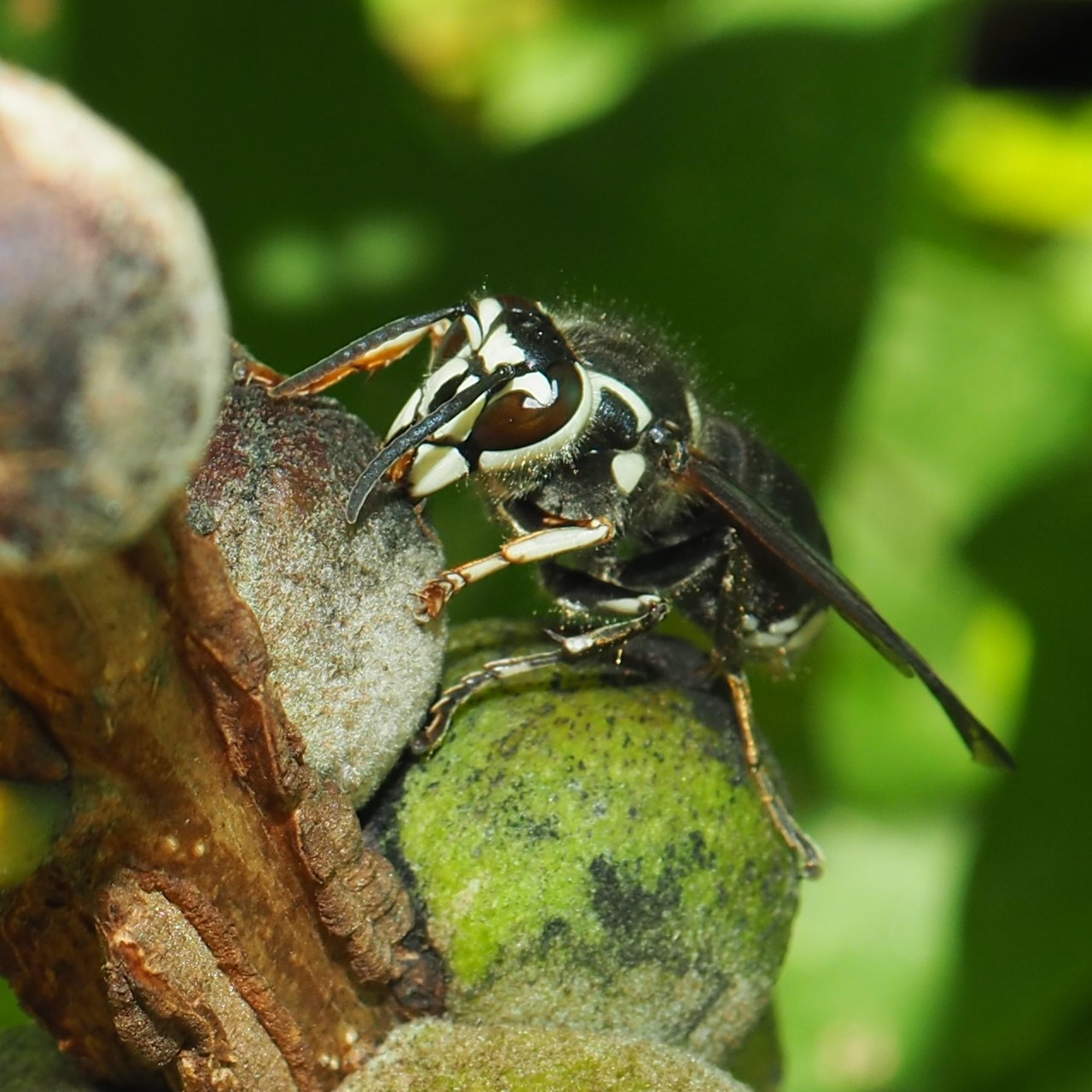
We saw several Ichneumonid Wasps. Images 1 and 2 are one that we've seen before. The last two are a different one. Hint- look at the antennae.
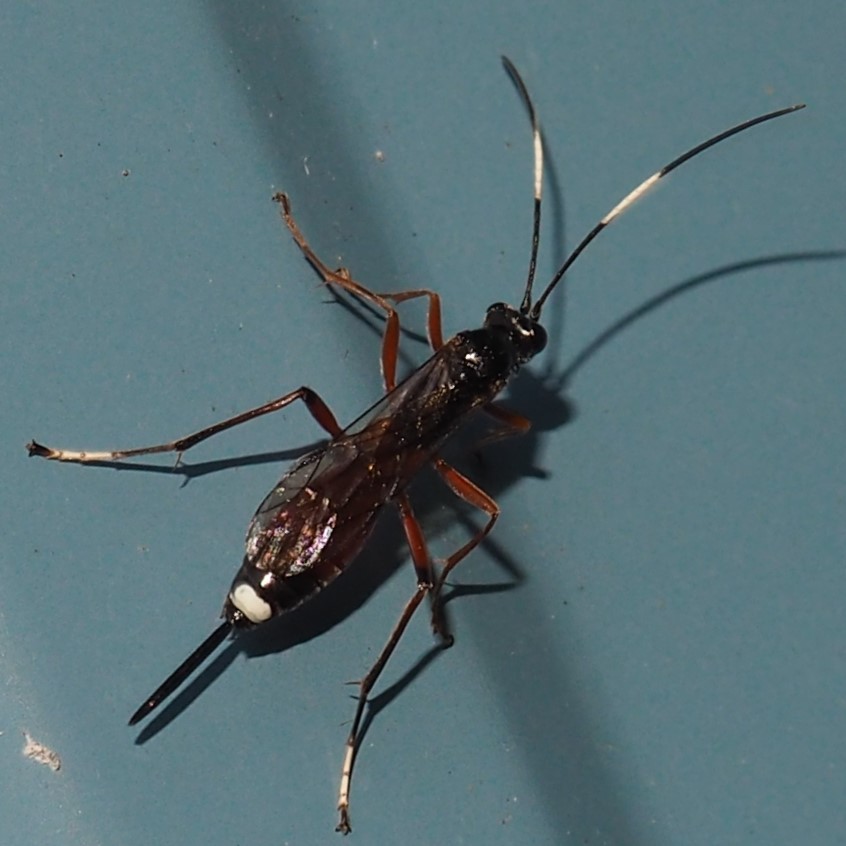
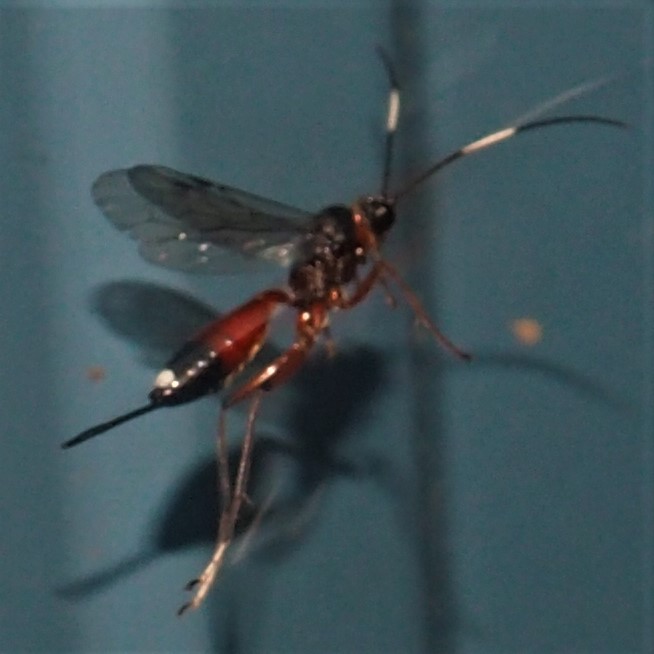
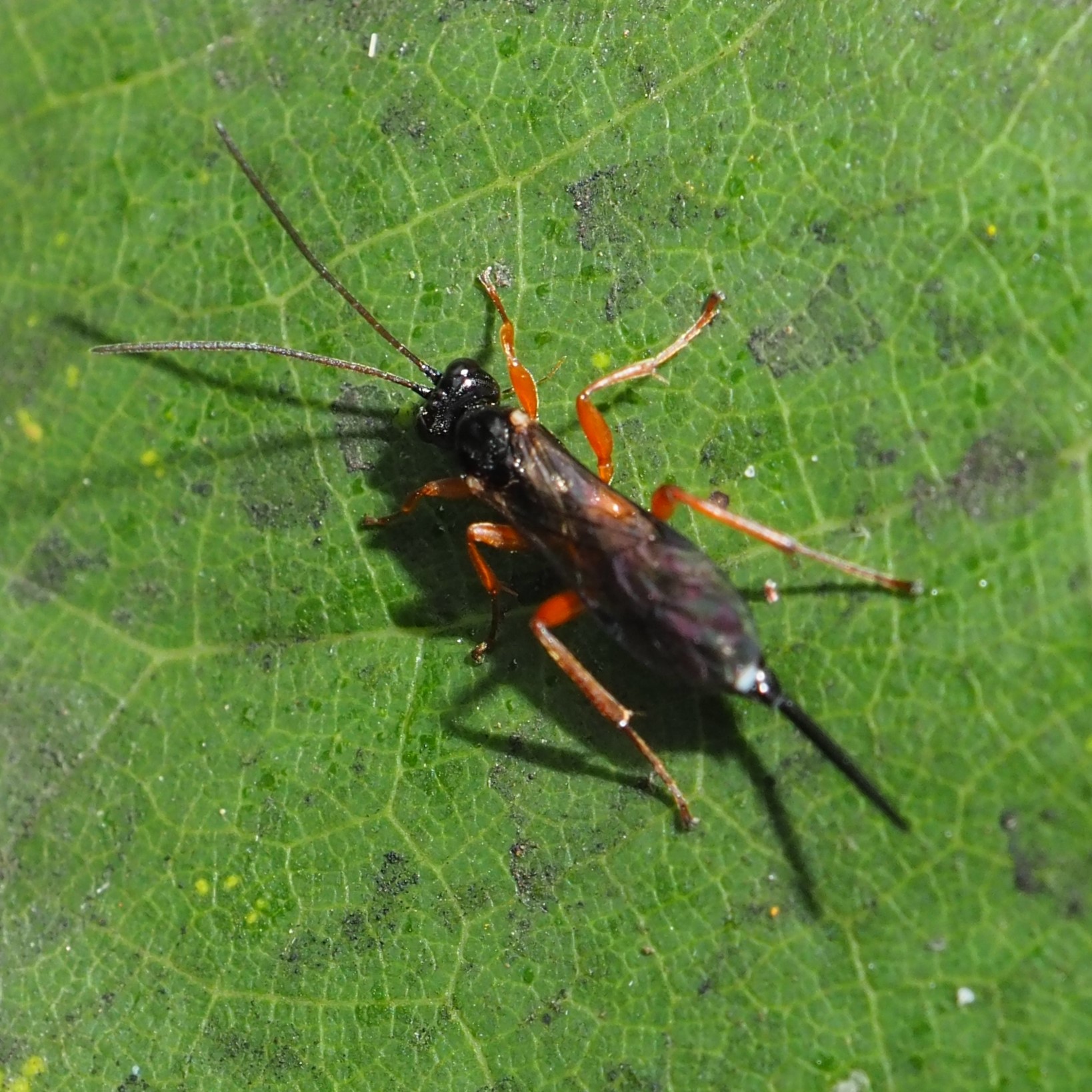
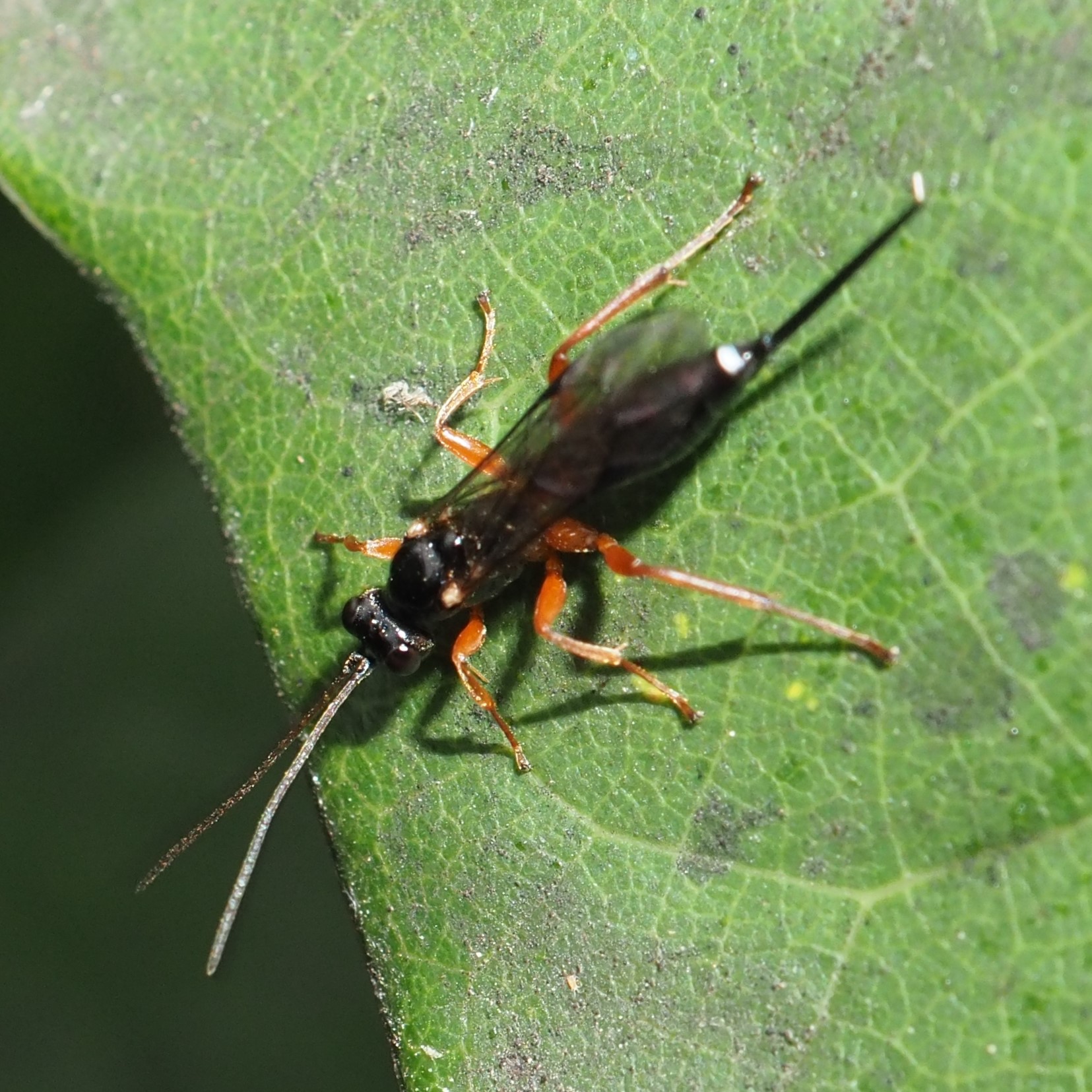
The Isodontia are a large group of wasps - they land with their wings making a 90 degree angle. They're also called the "Grass-carrying Wasps". The Paper Wasps also land this way, but they aren't Isodontia. Number 2 is a female Dark or Northern Paper Wasp. Her face is dark and her antennae straight-ish. Third is a male - his face has a yellow shield and the ends of his antennae are curled. I've never seen so many (dozens at least in goldenrod near where I'm standing)! Really! This has been a late goldenrod season and an amazing season for wasps, especially the big paper wasps.
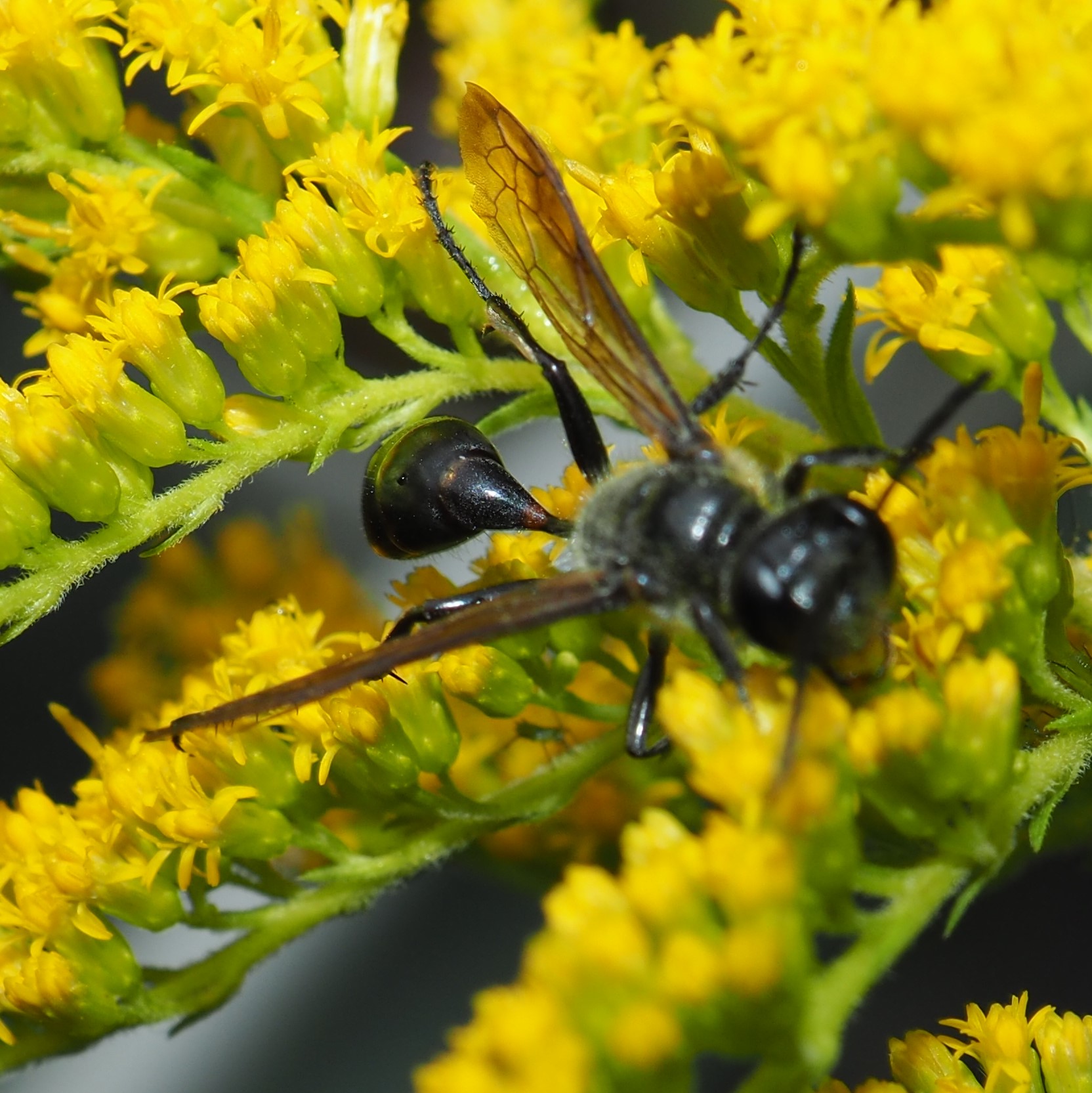


This little fellow may or may not be a paper wasp. It has the yellowish shield on the face, the curled antennae, and if you count the segments in the abdomen, there are seven. So it's a male. The pictures were taken while the flash was down.
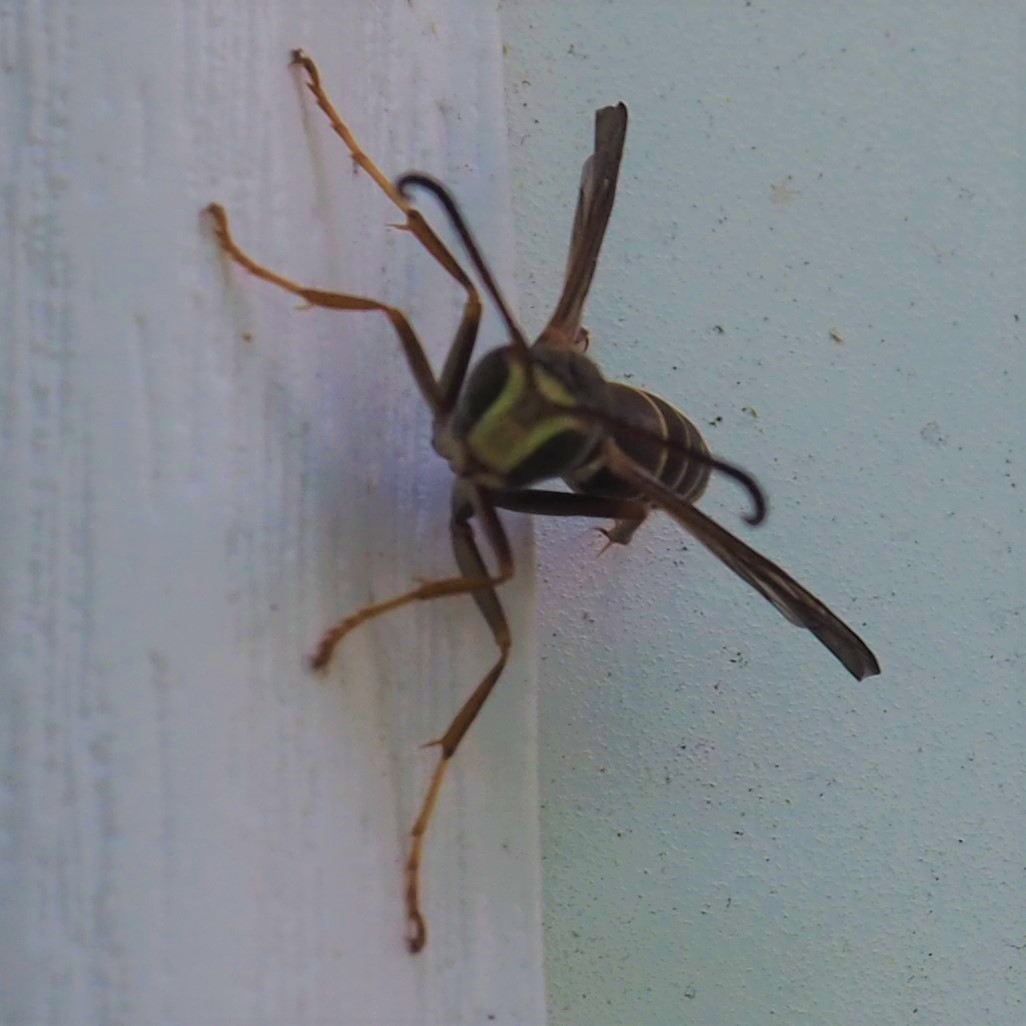

Let's see some of the flowers that made the week even more beautiful. The Japanese Anemones are one of my favorites. Even their buds are exotic. Here is one with a little Bumble Bee visitor. The asters continue to begin to commence to spread out.
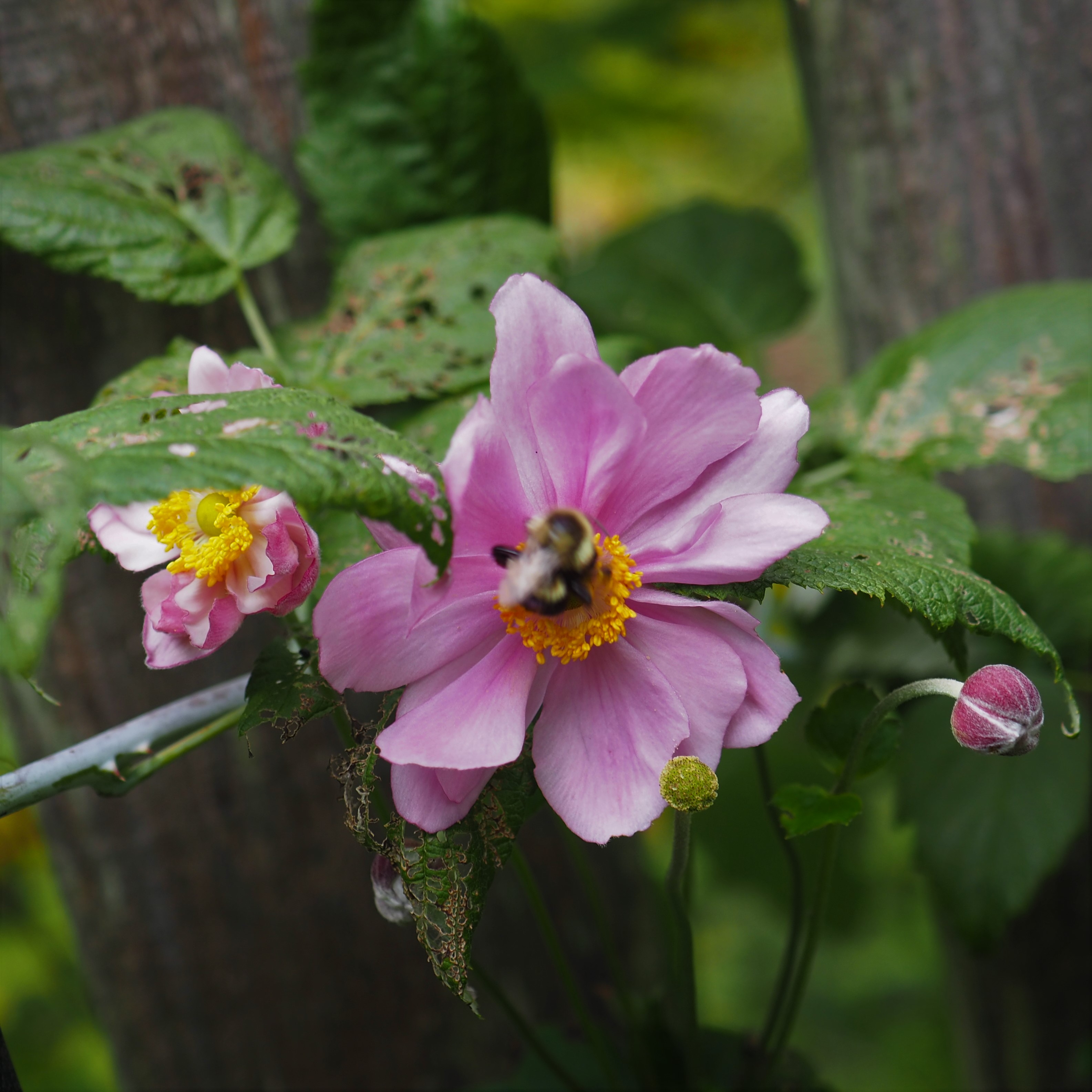
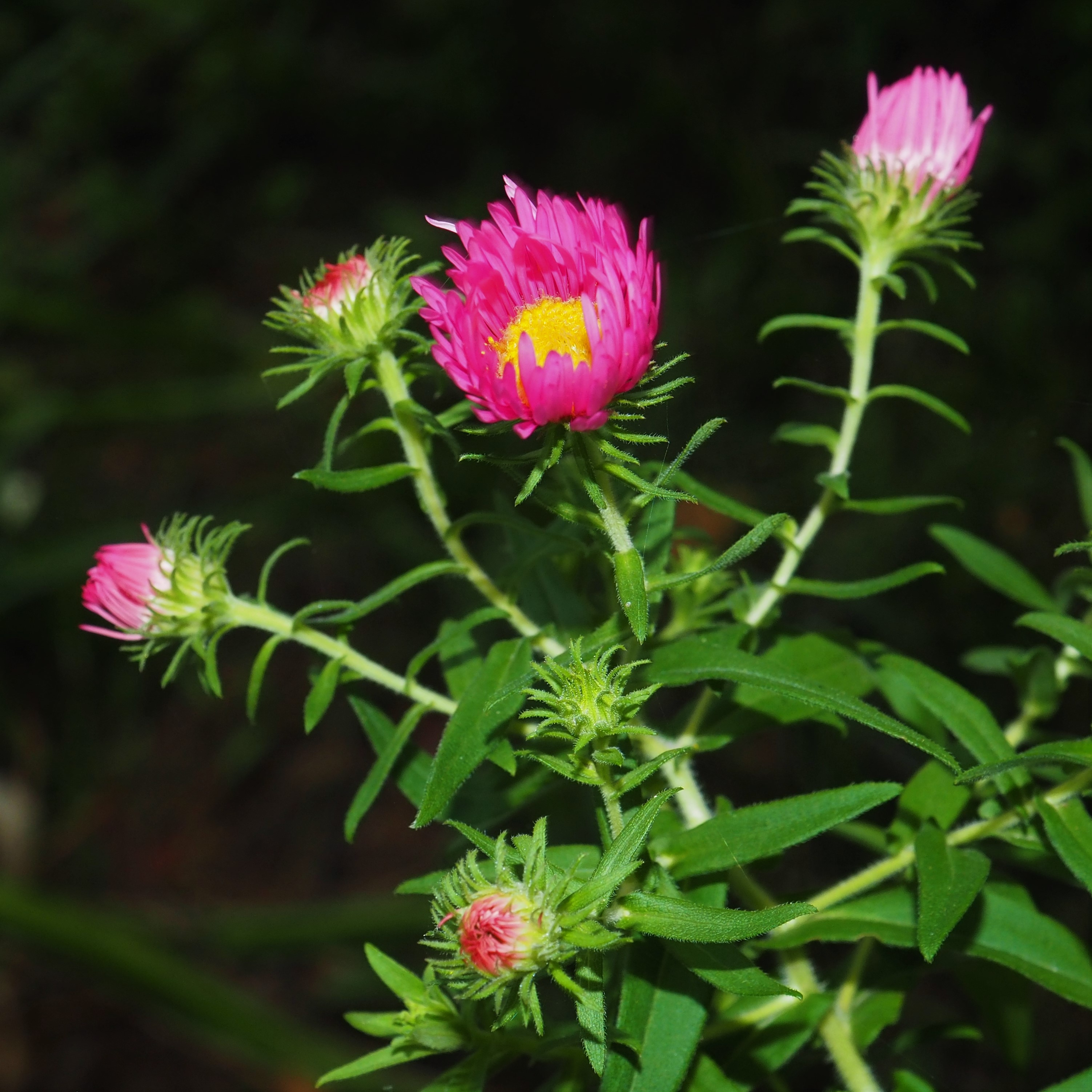
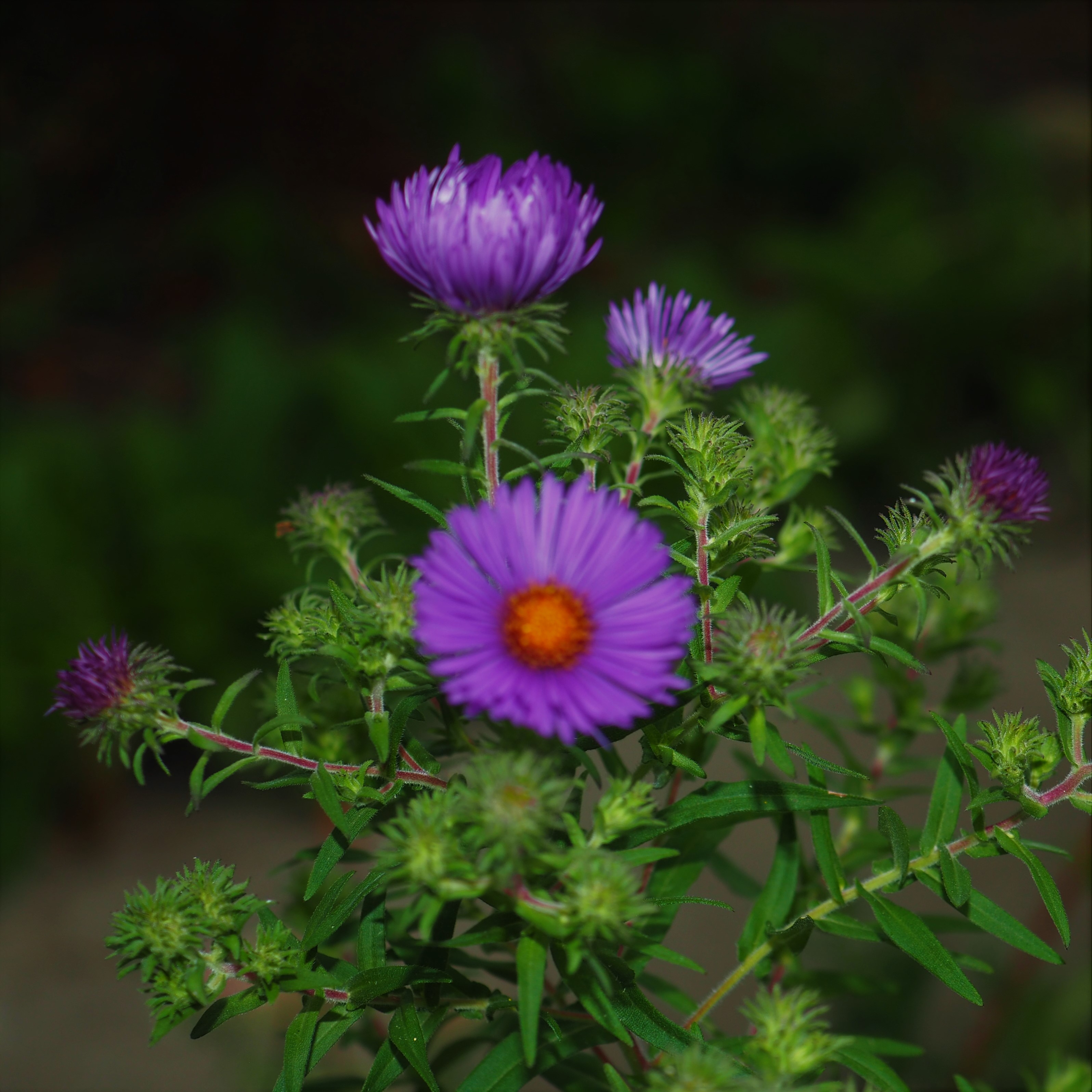
The next door folks' Sedum is a terrific color, even better than my Autumn Joy. Third is the Epimedium (Bishop's Hat) beginning to turn its Autumn colors. Last is the Yellow Water Lily. Too bad the pond got such a late start because of the Raccoons. I shouldn't think like that, just think of what a good start it got off to when the American Toads came to mate and started so MANY little toadlets which I find underfoot so often. :-)
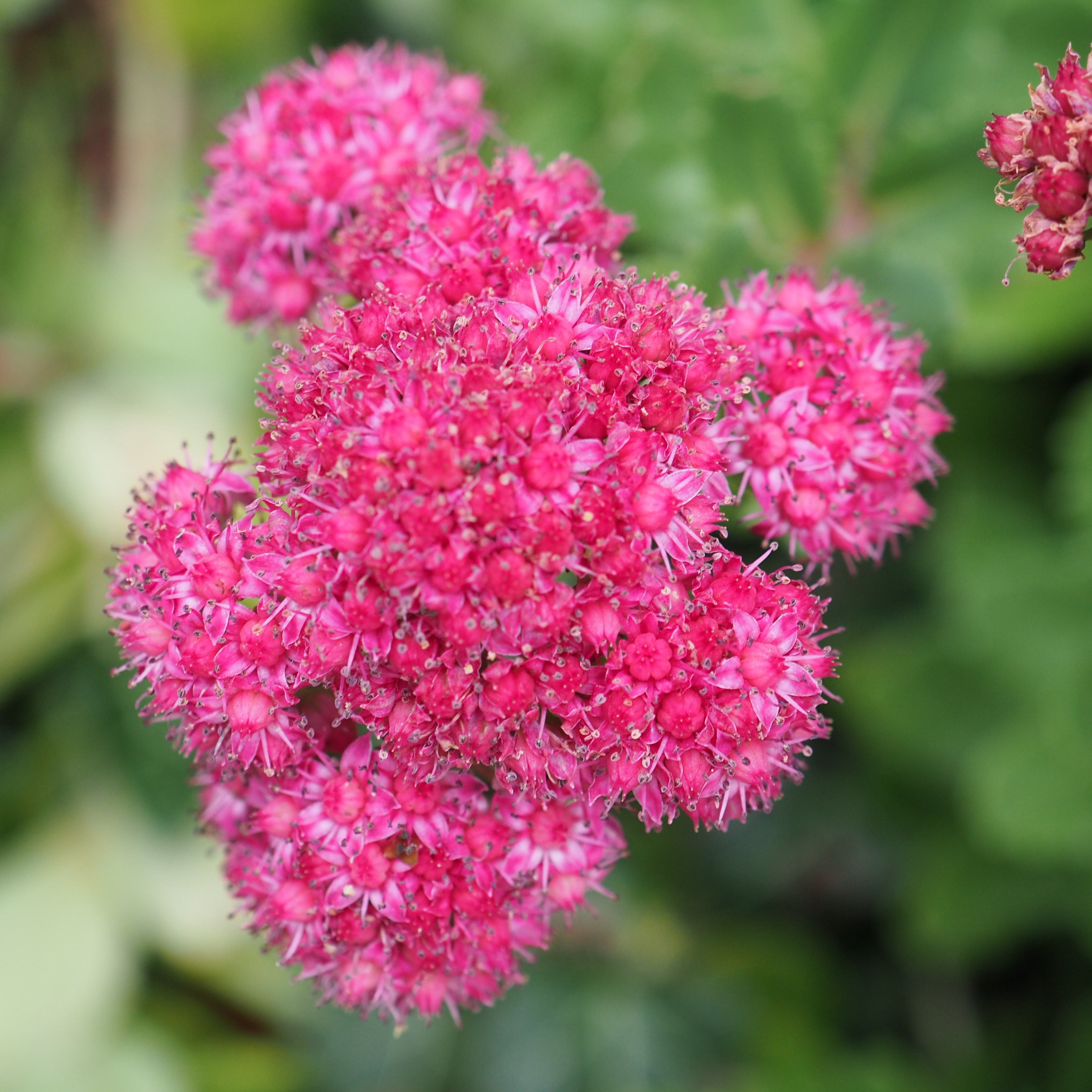
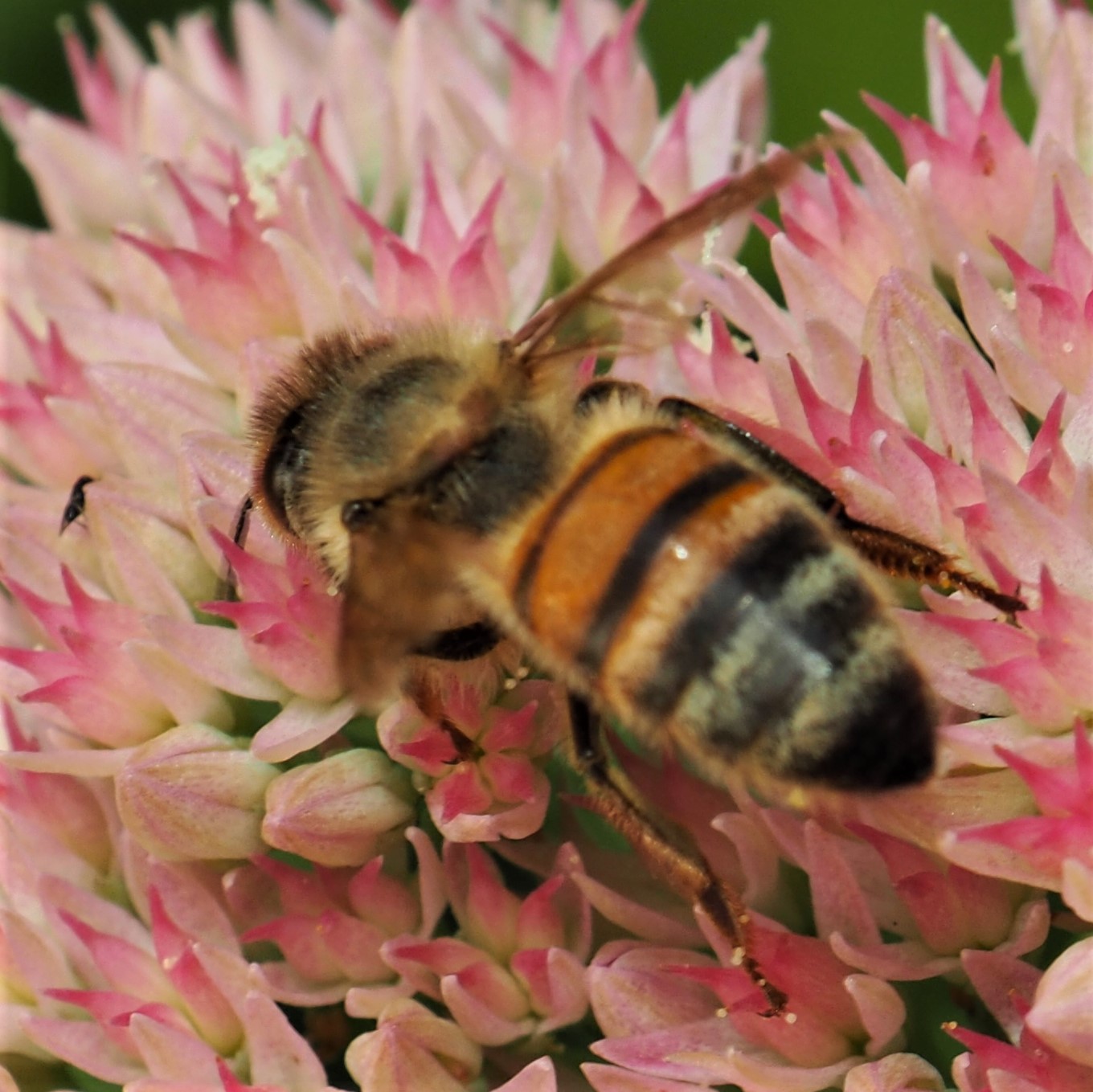

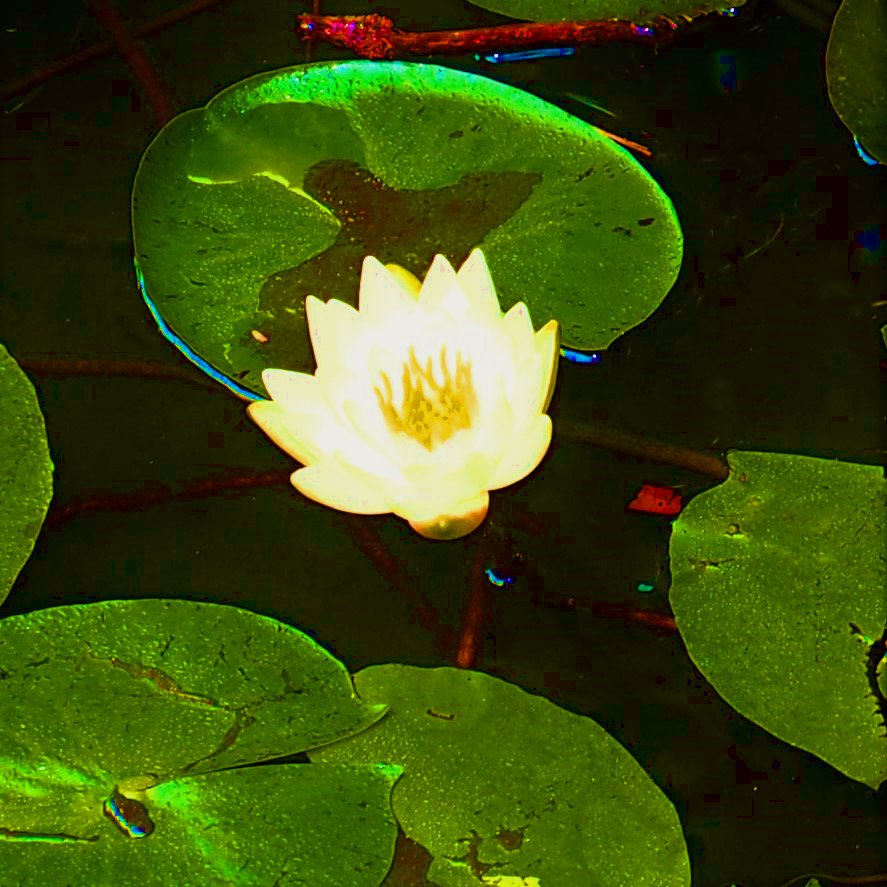 So here we are in September already. How can that be? No matter, I have many many souvenirs of the summer and will have those to cheer me up for however many more years I'll have. Just like all of you - I have so many good memories stored up of times we've had together. Take care, my friends.
So here we are in September already. How can that be? No matter, I have many many souvenirs of the summer and will have those to cheer me up for however many more years I'll have. Just like all of you - I have so many good memories stored up of times we've had together. Take care, my friends.

Love, Martha
Back to September 1, 2019
Forward to September 15, 2019
Back to main menu
copyright Martha O'Kennon 2019







































































































